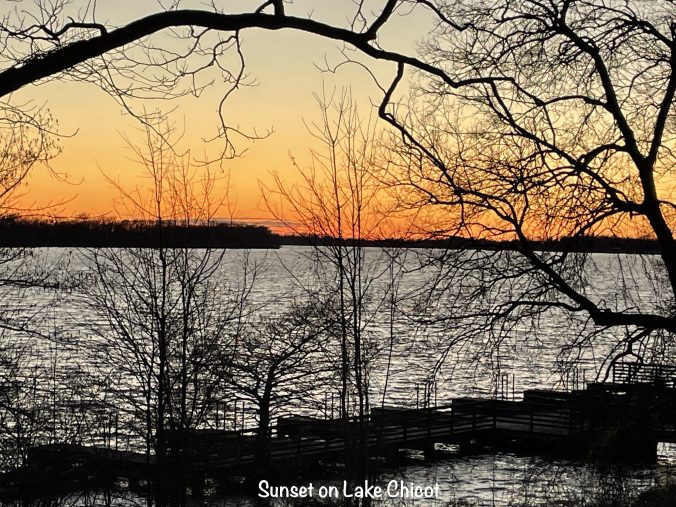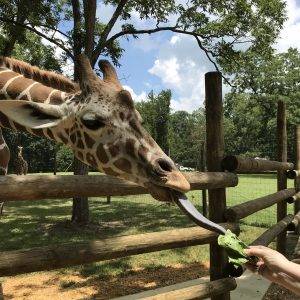NOTE: I usually stick to a week per post (sometimes less), but this one is a whopper. That will enable me to include all of Brennan’s Great Adventure (you’ll understand later) on one post.
On Monday, March 21, we hit the pavement about 8 AM. It was another beautiful day for a drive, although it clouded up later. Once we cleared Pontotoc, everything was fresh road, and we headed generally southwest on MS-9 to Bruce, then hit MS-32 to Coffeeville. The land was mostly flat with lots of crop fields and pine trees, and a little cattle. There were also quite a few swampy areas, and I’m uncertain whether that is from recent heavy rains or a constant in this part of Mississippi. We followed MS-7 to Greenwood, where we stopped for lunch at a little place called What’s Cooking. They have a variety of sandwiches, salads, and hot places, all freshly made on site. The daily specials are meat and two, and on this day it was a choice of fried pork chop or smothered country fried steak. We both went for the latter, and it turned out to be what I call Salisbury steak that was pretty darned good. The sides were the stars though. We tried the cabbage, green beans, and creamed corn, all of which tasted like they had my Grandma back there cooking. Delicious! The banana pudding dessert looked great, but we were both too full to partake. One other thing that was cool…they have a refrigerator section filled with a variety of fresh salads and take-home plates. We arrived as they were opening, and the place filled up with locals pretty quick and had a steady stream hitting the take-outs, too. When in the area, this place is a must!
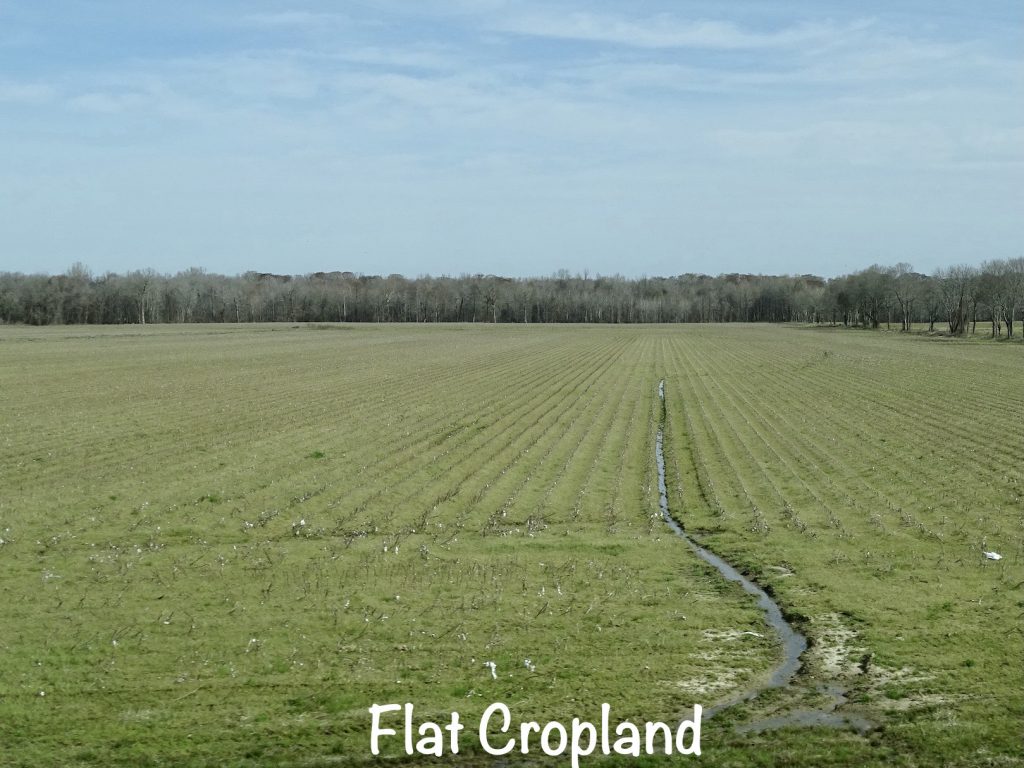
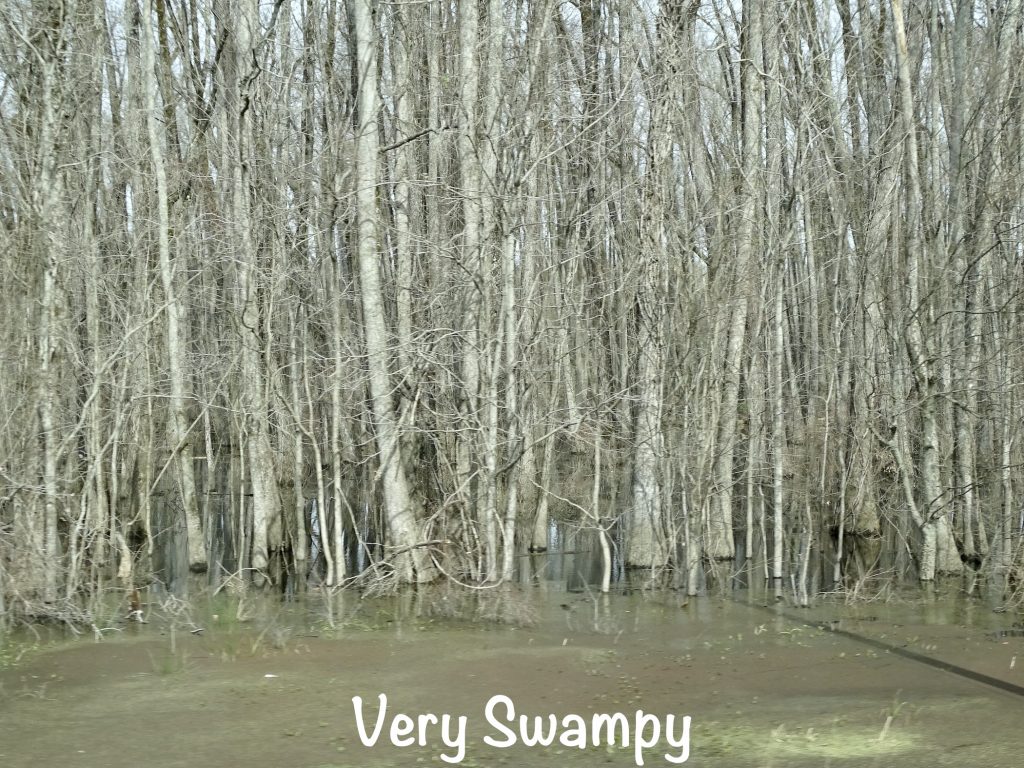
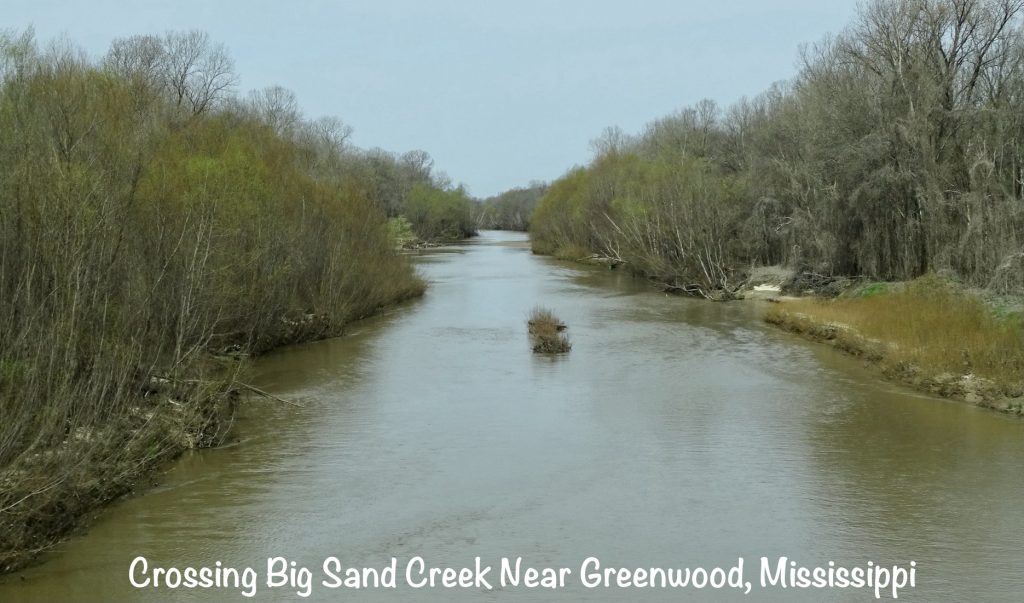
SQUIRREL: As we passed through Greenwood, we saw a sign for Tallahatchie Street, which led to wondering about the Tallahatchie River, the Tallahatchie Bridge…you see where I’m going with this. First, the Tallahatchie River is in the northwestern part of the state, and flows into the Yazoo. As far as I can tell, there are several options for bridges. So did Billie Joe actually jump? Nope. According to Bobbie Gentry, the story is completely made up. BUT…in checking that out, I found a grave marker for Billie Jo McAllister on Find a Grave. It says he is buried in Magnolia Cemetery in Greenwood, Mississippi. Seriously! Someone went to a lot of trouble to perpetuate the myth. The info for the memorial posting is the lyrics to the song.
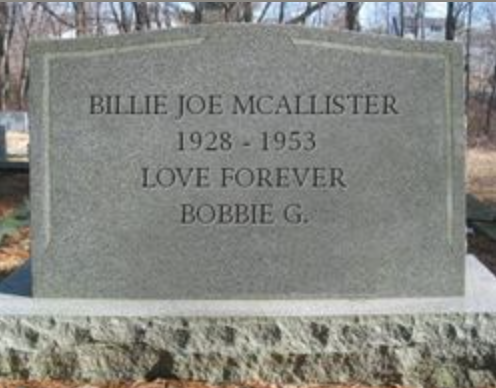
After lunch, we walked over to the Greenwood Marketplace grocery store to move around a little bit. Then it was back on the road, this time taking US-82 west and passing through the Mississippi Delta. This isn’t the delta where the river flows into the Gulf of Mexico, but a specific geographic region mostly in Mississippi, but including parts of Louisiana and Arkansas. It is the floodplain between the Mississippi and Yazoo rivers, covered in thousands of years of river deposits from flooding, creating some of the most fertile soil in the world. Before the Civil War, the area contained many large cotton plantations, but was still only about 10% developed. In the late 1800s, immigrants poured into the Delta and created many independent family farms. Today the rich soil is still growing cotton along with rice, corn, and soybeans, and also has a large number of poultry and catfish farms. As part of the Mississippi Flyway, the largest migratory bird route in the country, the Delta attracts hunters, who also come for its rich deer, turkey, and small game populations. Driving through, it is very flat and the only place in the south we’ve seen with crop fields on the scale of those in the central states.
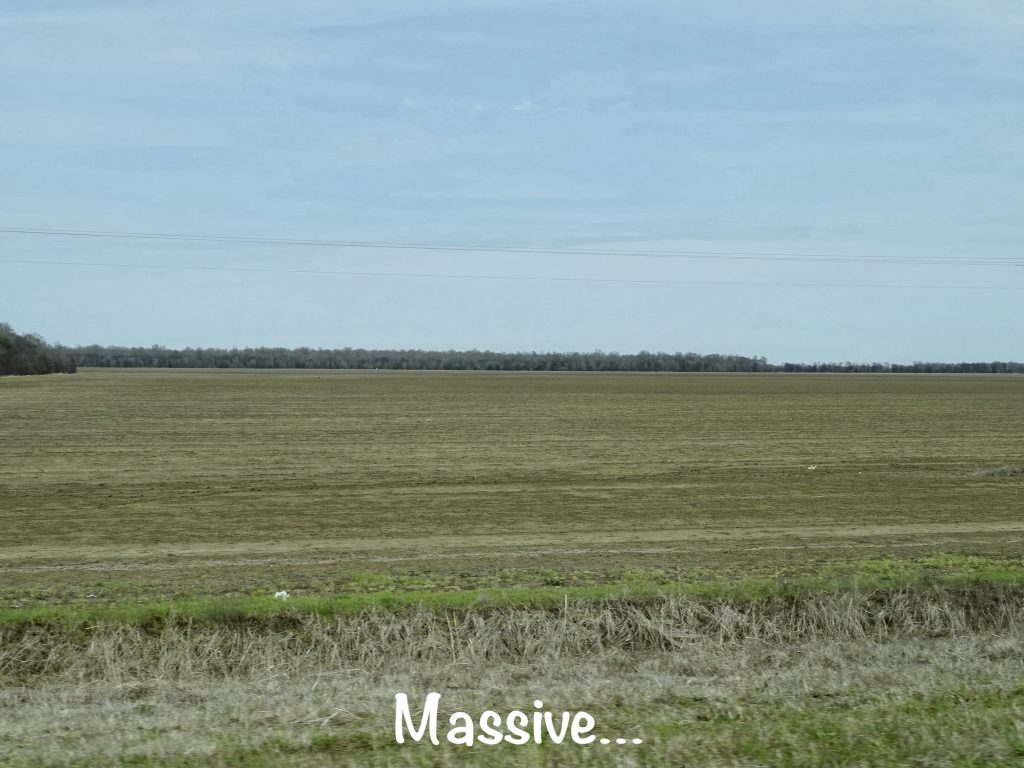
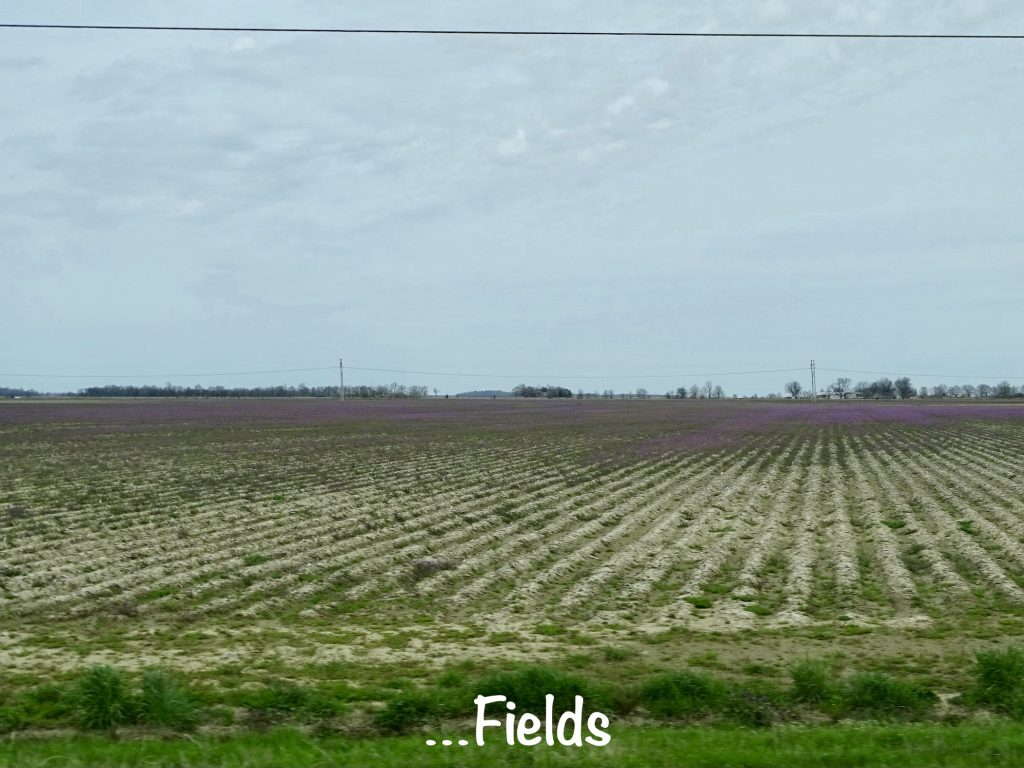
We crossed Ol’ Man River into Arkansas and Lake Village, then skirted the edge of Lake Chicot to the north and ended the drive at Lake Chicot State Park. The weather was still nice, but the wind was picking up. In the evening, we took a long walk around the park before settling in.
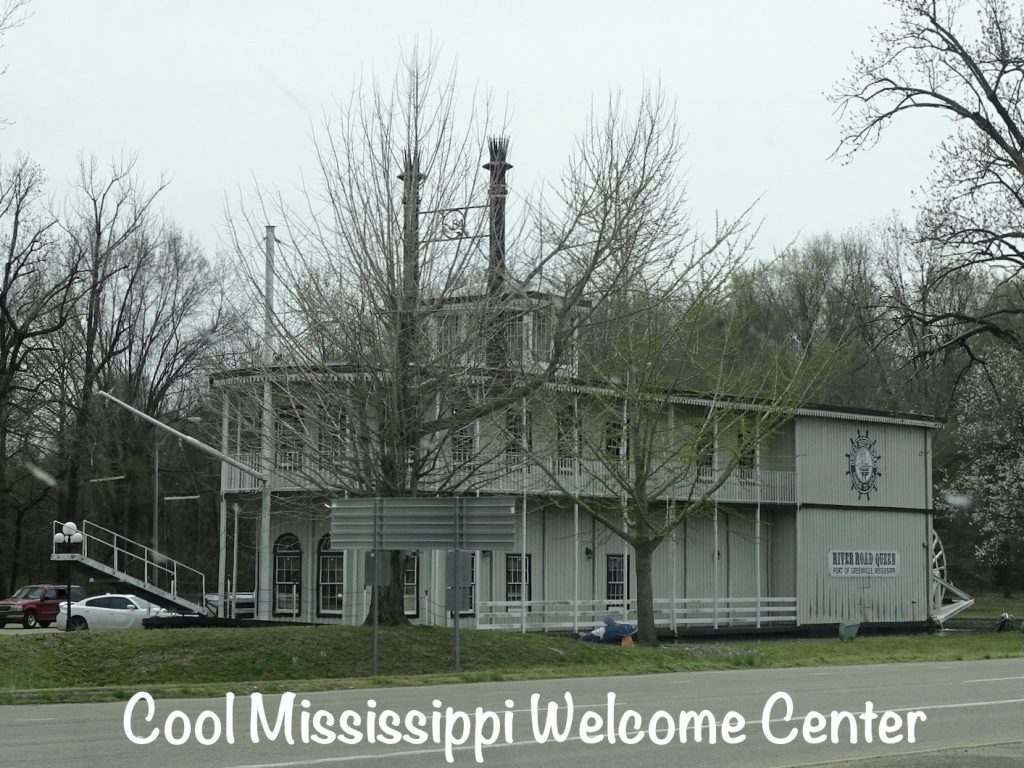
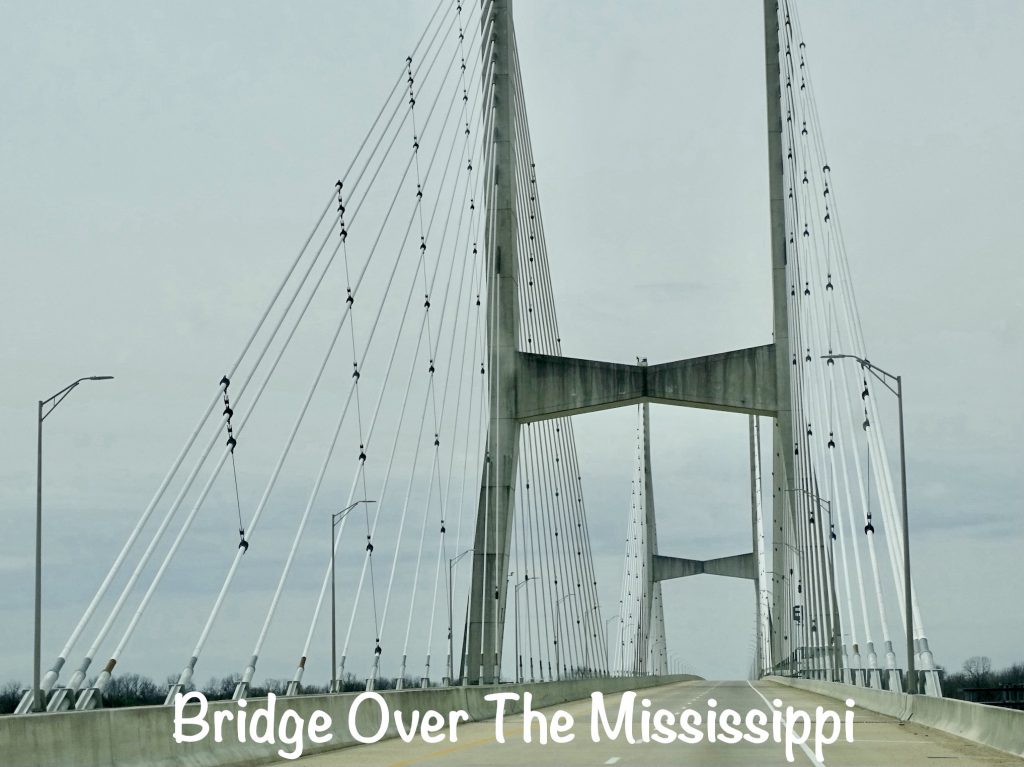
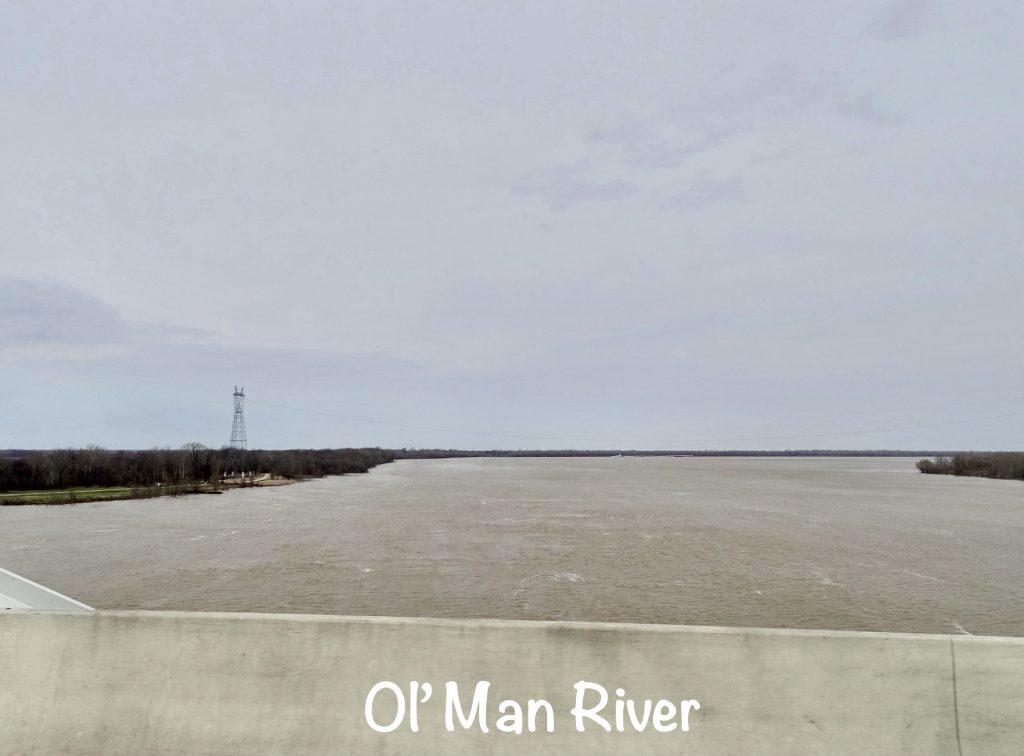
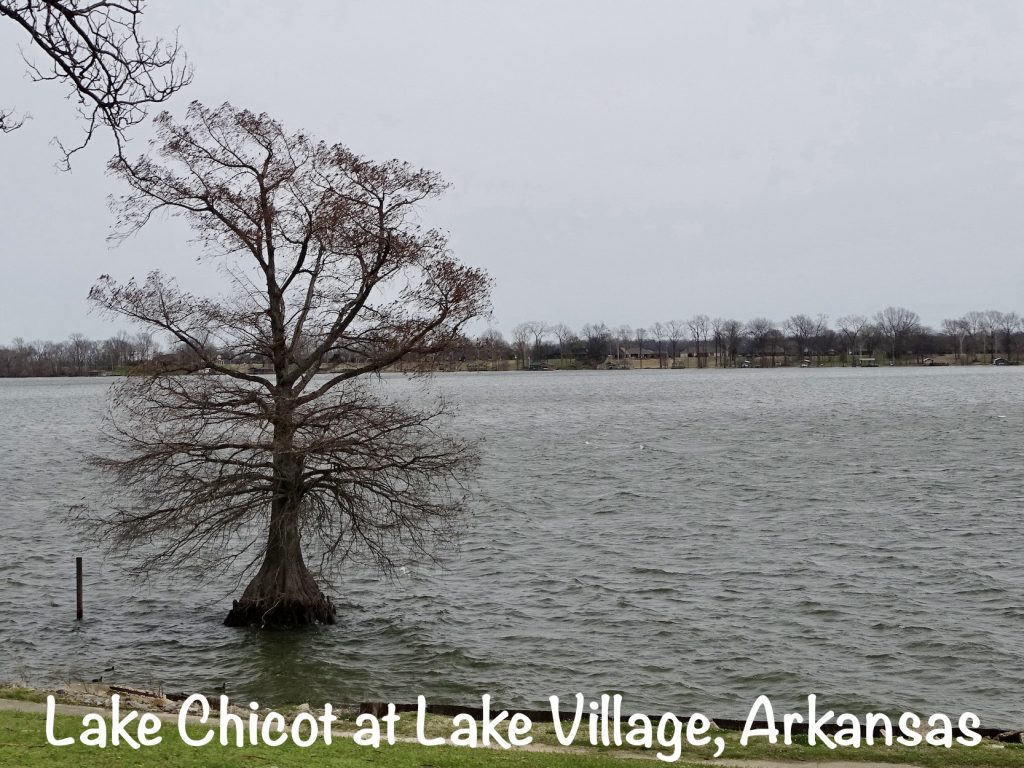
Lake Chicot is an oxbow lake. Rivers are living things and are constantly changing, but it’s a very long process. If you look closely at a map, you’ll see how much things can change. When the states were originally designated, the river was the state line. In the current atlas, though, you can see that there are places where the line is no longer in the water. That is exactly how an oxbow lake begins to form. Water always takes the path of least resistance, so rivers curve back and forth following that path. Over time, water erodes away dirt and rock, so curves become more pronounced. As this continues to happen, the beginning and ending curves work their way towards each other. Finally, those curves meet, and water breaks through. Now the river has two channels. Over time, silt and sand build up along the edge of the new channel and that route becomes the path of least resistance. Finally, the old route is blocked off from the river, and voila…oxbow lake.
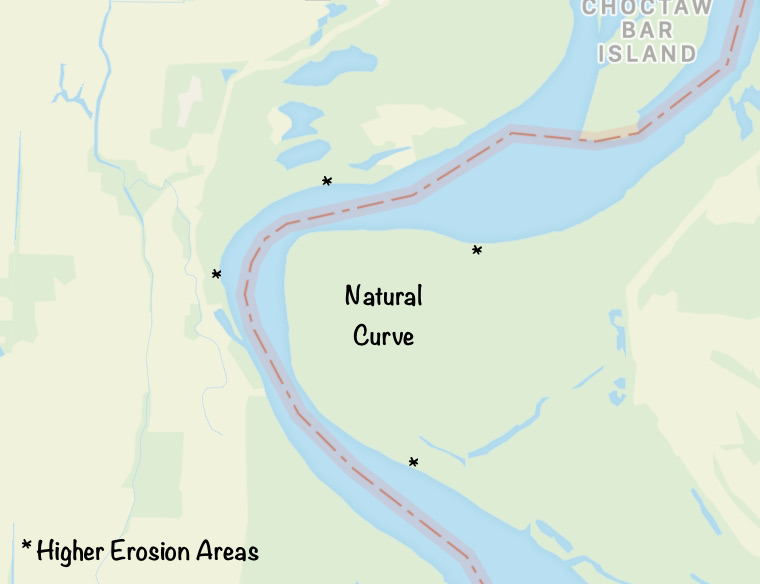
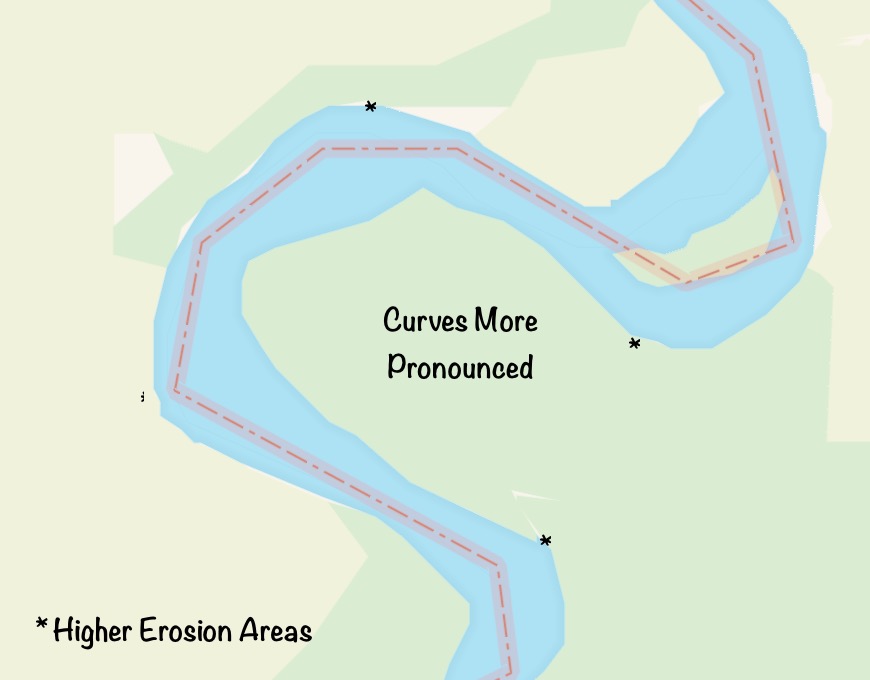
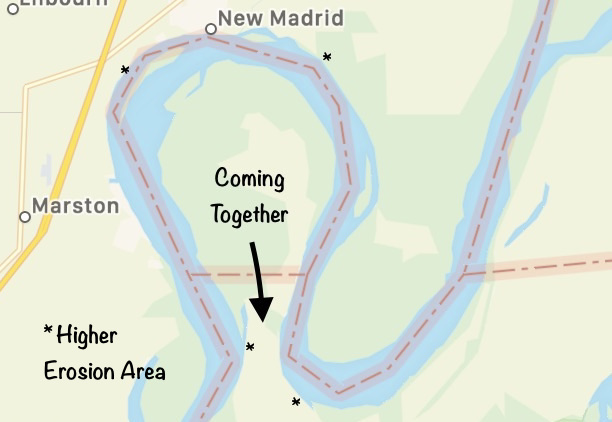
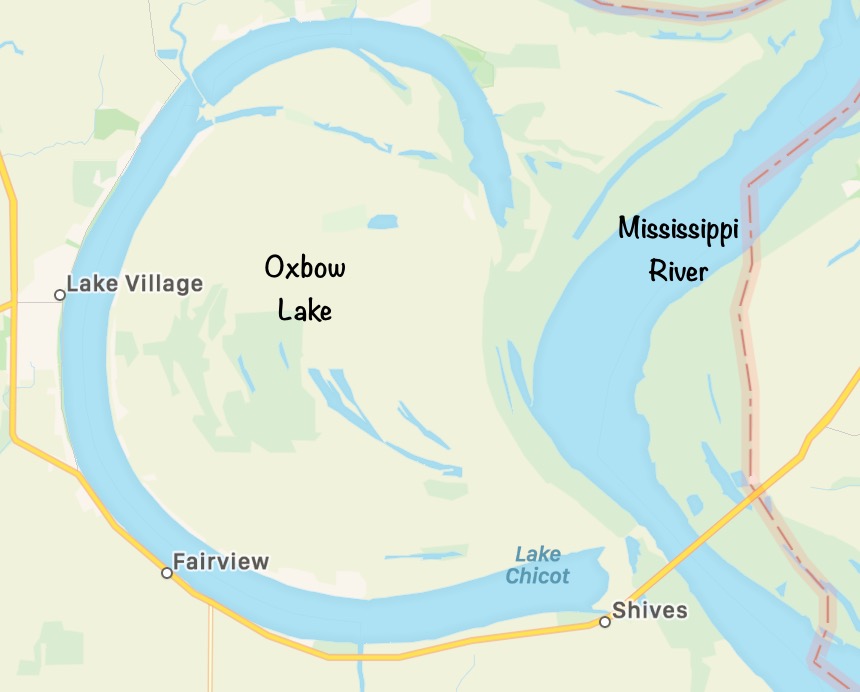
Tuesday started with a bang…literally. Big storms moved into the area around 4 AM, and shortly after that, there was a huge bang that bolted us both upright. I thought a large limb had hit the roof, but it turned out to be one of the bedroom windows. Designed as an emergency exit with a hinge at the top, there is a rod that hooks into the frame to hold it open. The wind had pulled the rod completely out of its slot and smacked that metal against the side of Petunia. The same thing happened once before in Penelope (our first trailer), and I just went outside and fished the rod back through the hole. This time, because the fifth wheel is so tall, we had to remove the screen, fish the rod through, and reinstall the screen. I’ll just say that, while not a hard task, is was difficult while groggy with shaking hands and a pounding heart. Well, mine was pounding. Mr. Wonderful (MW) seems to calm his down easier than I do. The high winds buffeting Petunia made it hard to get back to sleep. Once the thunder, lightning, and torrential rain started, though, I slept like a baby for the next few hours.
When I finally got out of the bed, I decided it was a pajama day. There was plenty of bookkeeping work to keep me busy for several hours, plus I had a couple of business calls. Later we watched a little TV while the storm continued to rage. The rain cleared out around 4 PM, and then it was just grey and windy for the rest of the evening. There is just nothing wrong with a grey pajama day occasionally.
Wednesday I headed into Lake Village to get the clothes taken care of at the LV Laundry Stop, a super clean, pretty awesome place with nice machines, plenty of seating, and a table. They also have some machines that operated with credit cards…bonus! Mostly alone, I managed to get a little writing done. Afterwards, I found a table at McDonalds across the street and spent several hours getting caught up. Later, I stowed the clothes back at Petunia, and then took a good walk around the other half of the park to take pics. The weather was just about perfect…breezy and upper 60s. MW also had his bi-monthly happy hour call with former co-workers from American Express. After that we headed into town for dinner. I had been hankering for Chinese at something other than a buffet, but the target location turned out to be takeout only, a Covid leftover. We ended up at La Terraza Mexican across the street, which was pretty good.
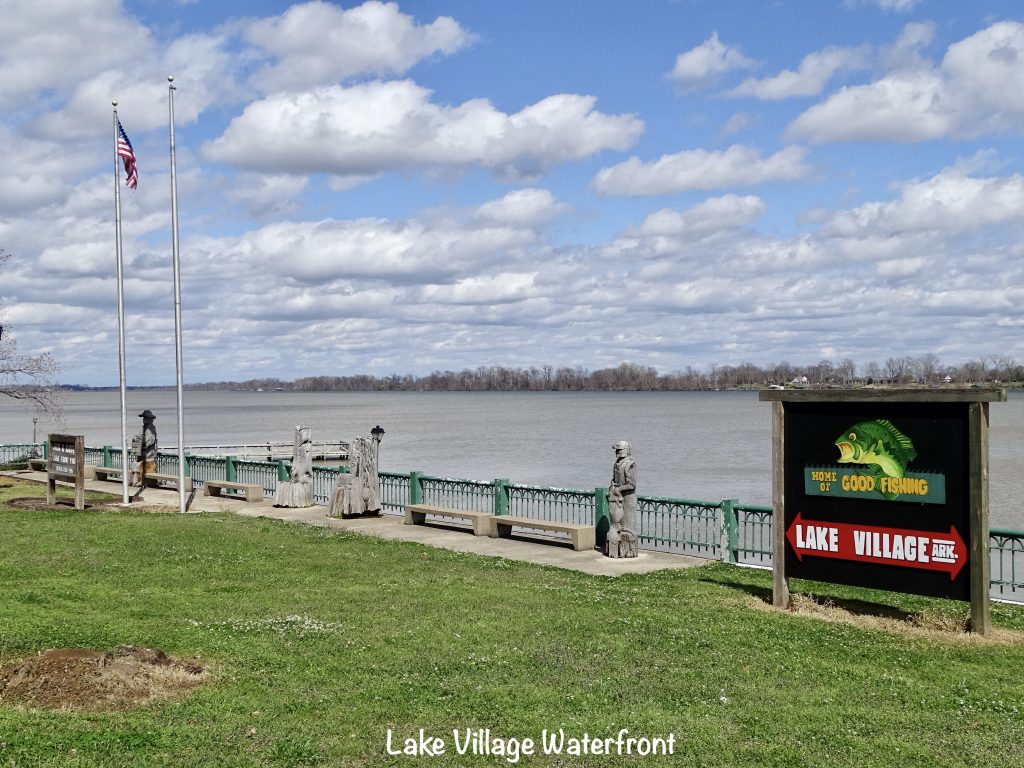
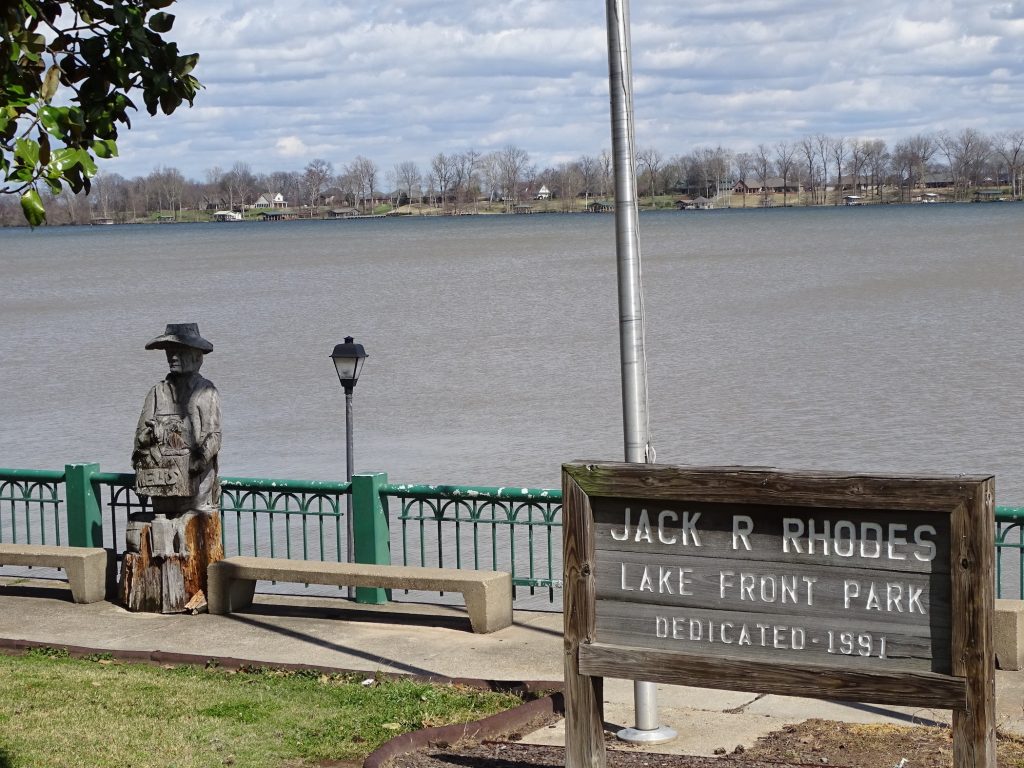
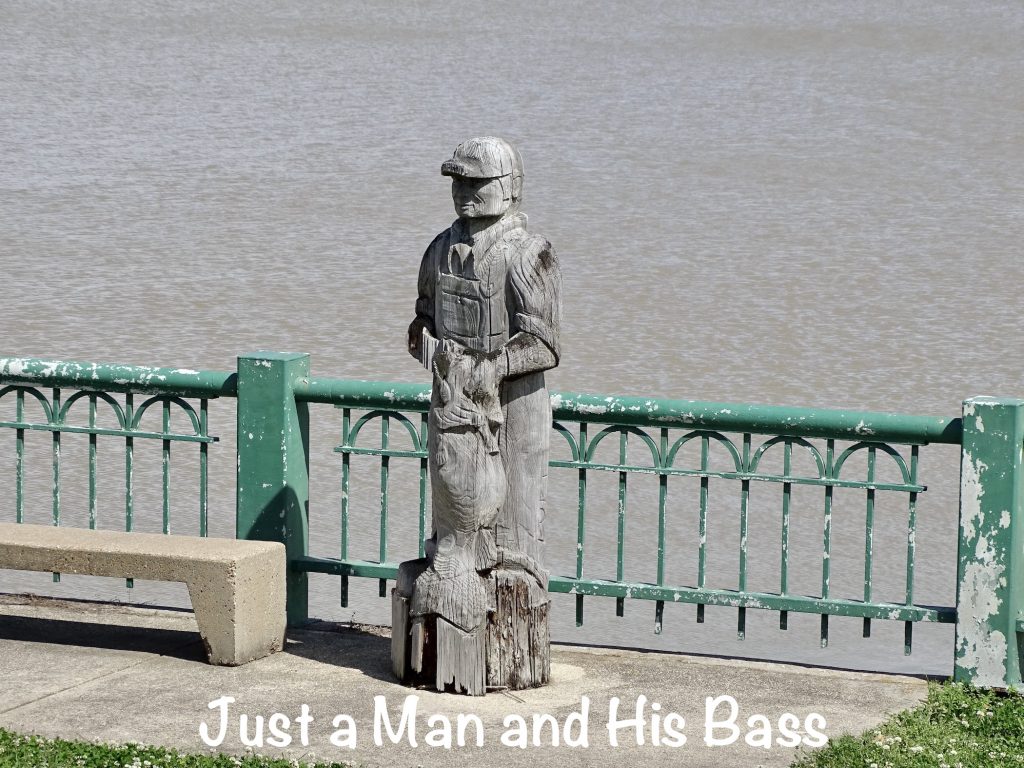
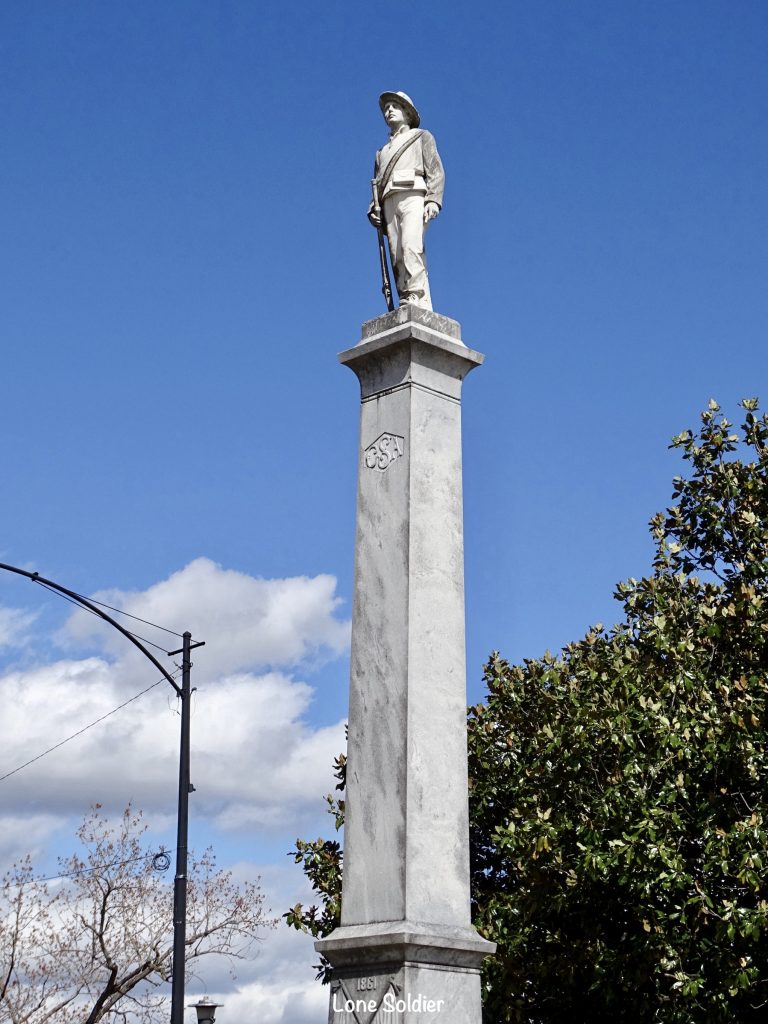

One of Lake Village’s claims to fame was an unplanned visit from a then unknown aviator, Charles Lindbergh. In 1923 Lindy was flying the mail at 21 years old, when a problem with the engine caused an unexpected stop on a golf course near the lake. He ended up having to stay overnight and was put up by the keeper of the old clubhouse, Mr. Henry. Charles gave a couple of rides to locals during the afternoon and offered to take his host up as repayment for his generosity, but was steadfastly refused. Later in the evening, the full moon and clear skies beckoned, and Lindy decided to take another flight. This time, Mr. Henry agreed to go, not realizing that he was becoming a part of history. That flight was Charles Lindbergh’s first night flight. The old clubhouse is now a privately owned home, and there is a historical marker out front along with a monument for the flight.
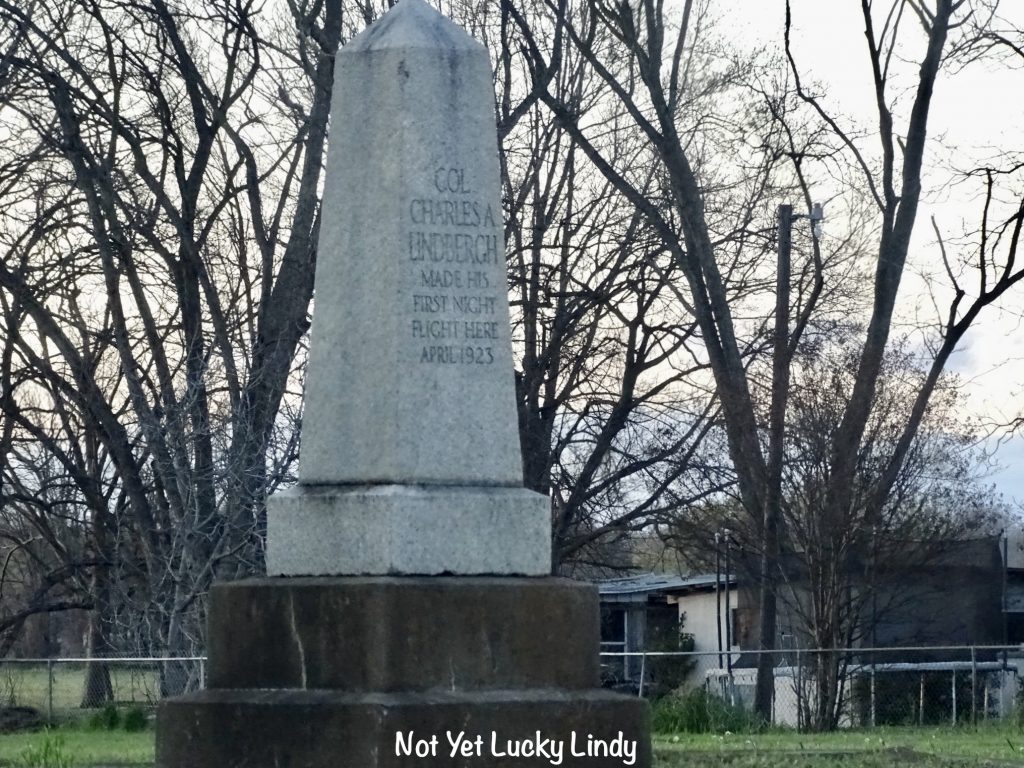
Lake Chicot State Park is a really large place, with fairly well-spaced campsites spread out in a grove of wild pecan trees. Situated on the 20-mile-long lake, activities are mostly centered around the water, and fishing is the major draw. There is a boat ramp and multiple fishing piers and boat docks. Amenities include a camp store, nature trail, swimming pool, playground, basketball court, horseshoe pit, enclosed picnic shelters, and picnic tables. Lodging options included two sizes of cabin, some right on the water. The campground was divided into two large loops with paved roads and sites, all with electric (some only 30-amp) and water, and some in Area A included sewer. Sites had picnic tables and fire rings with grill tops. Bathhouses were new/renovated and very clean. The only negative we saw was that some of the sites in Areas B & D could get very mushy in rainy weather. There was no road noise, and would be a great place in hot weather, because there is fairly consistent wind off of the lake. We would definitely go again. For this stay in March 2022, we paid $106.08 for 3 nights.
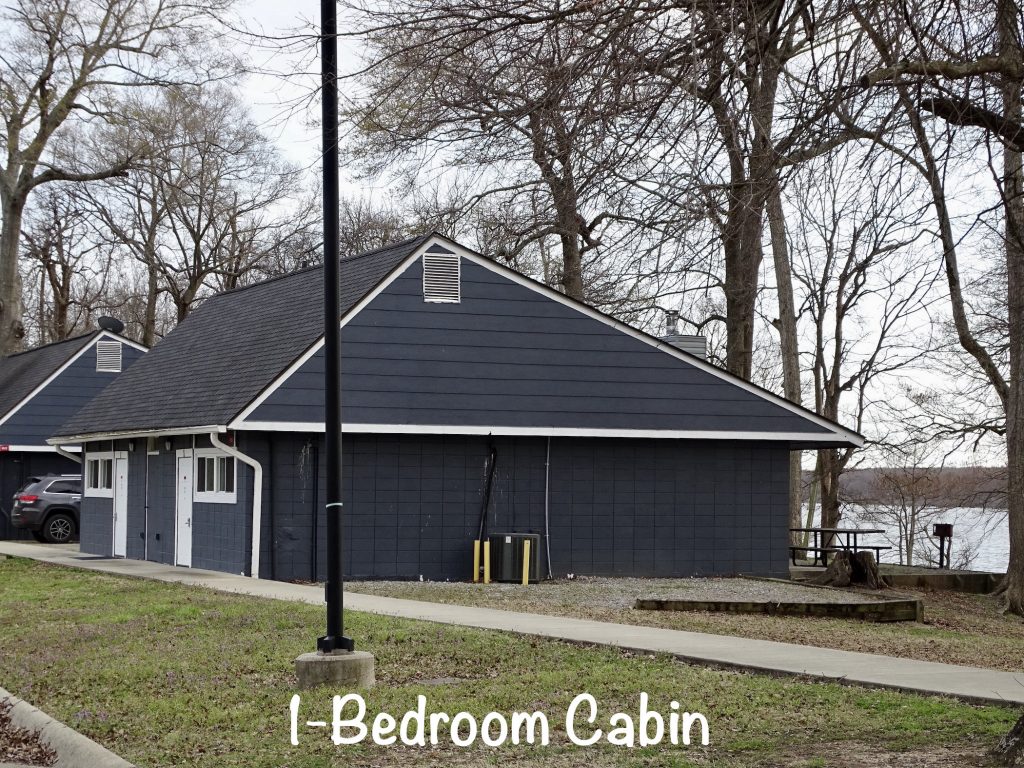
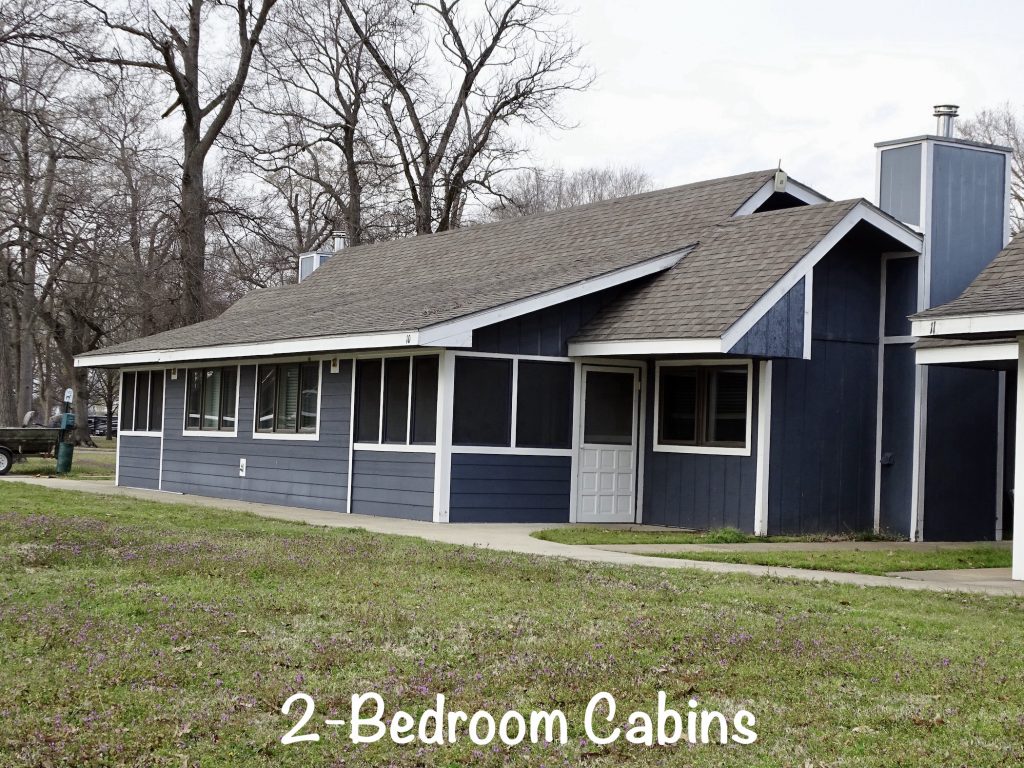
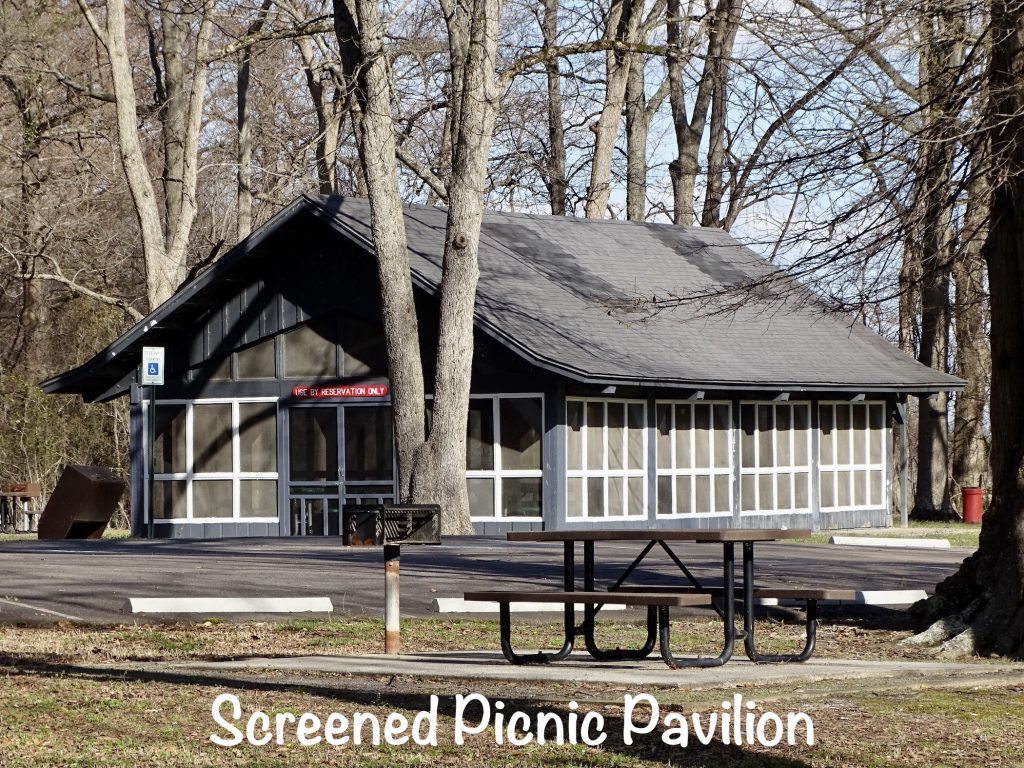
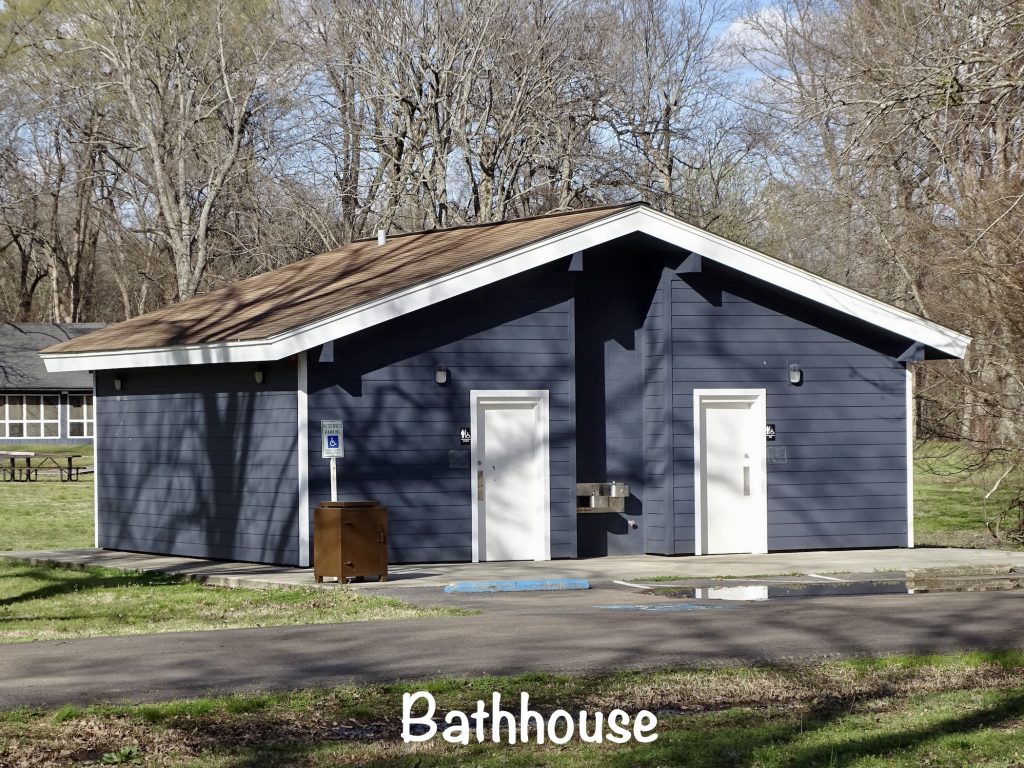

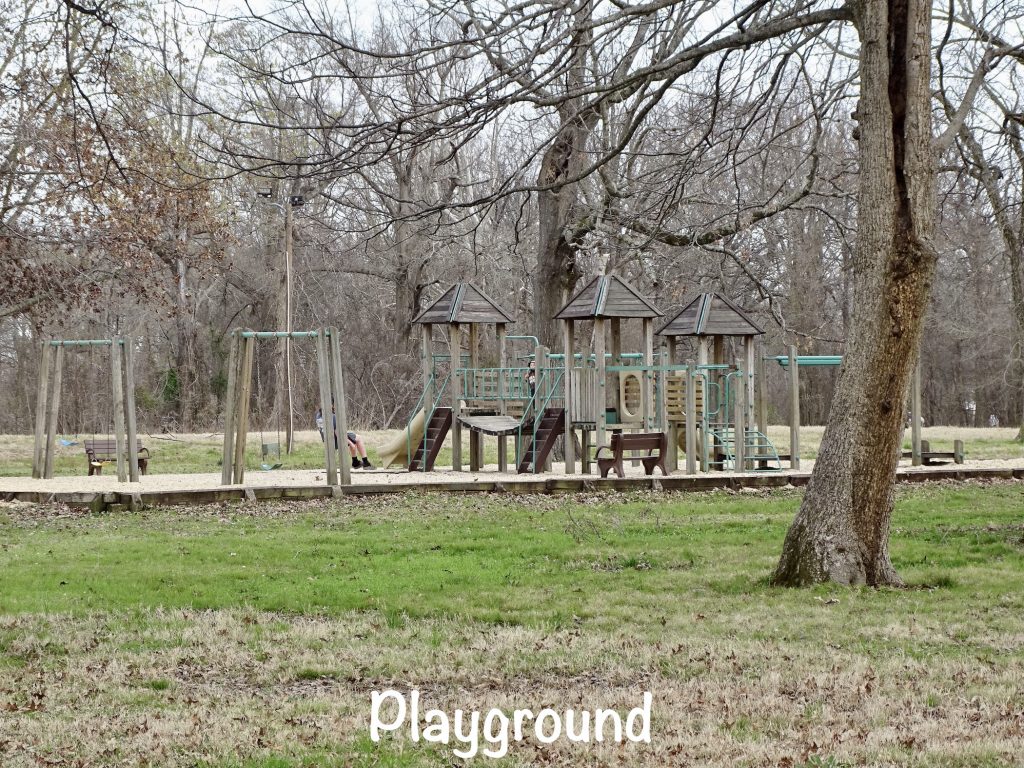
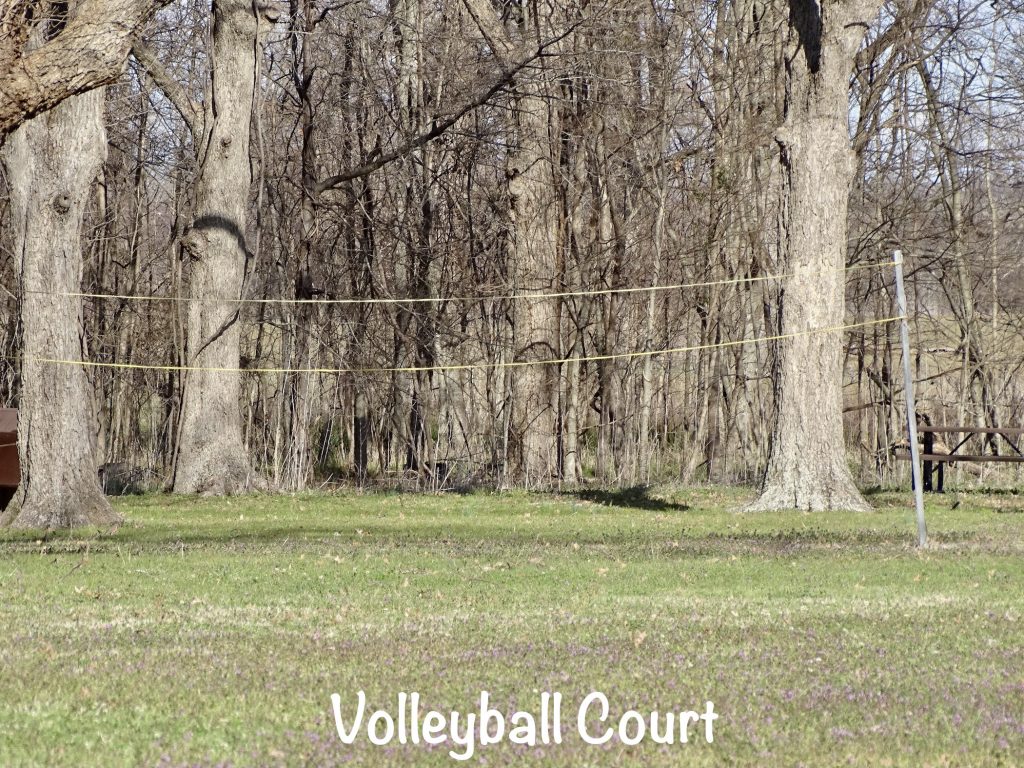
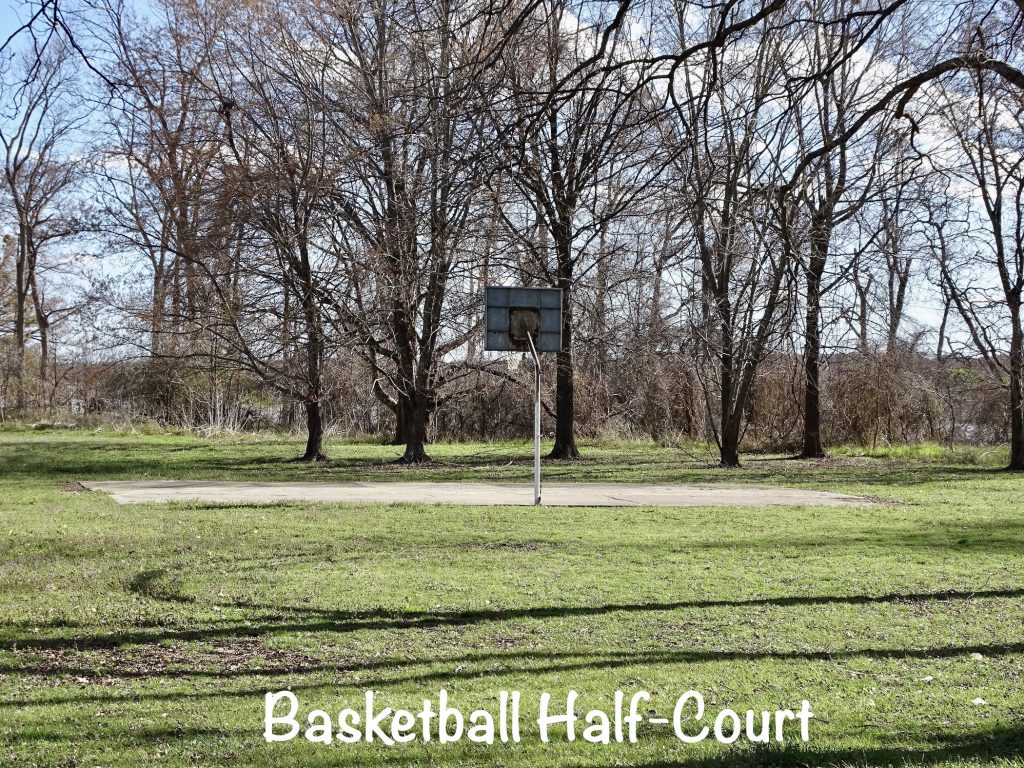
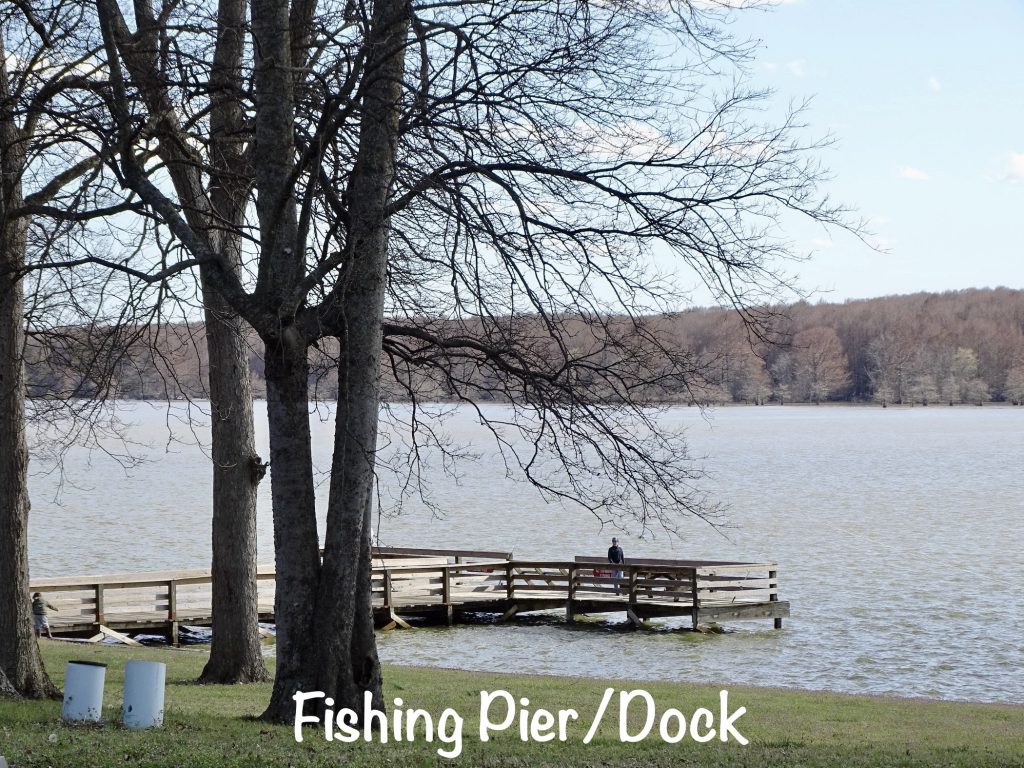
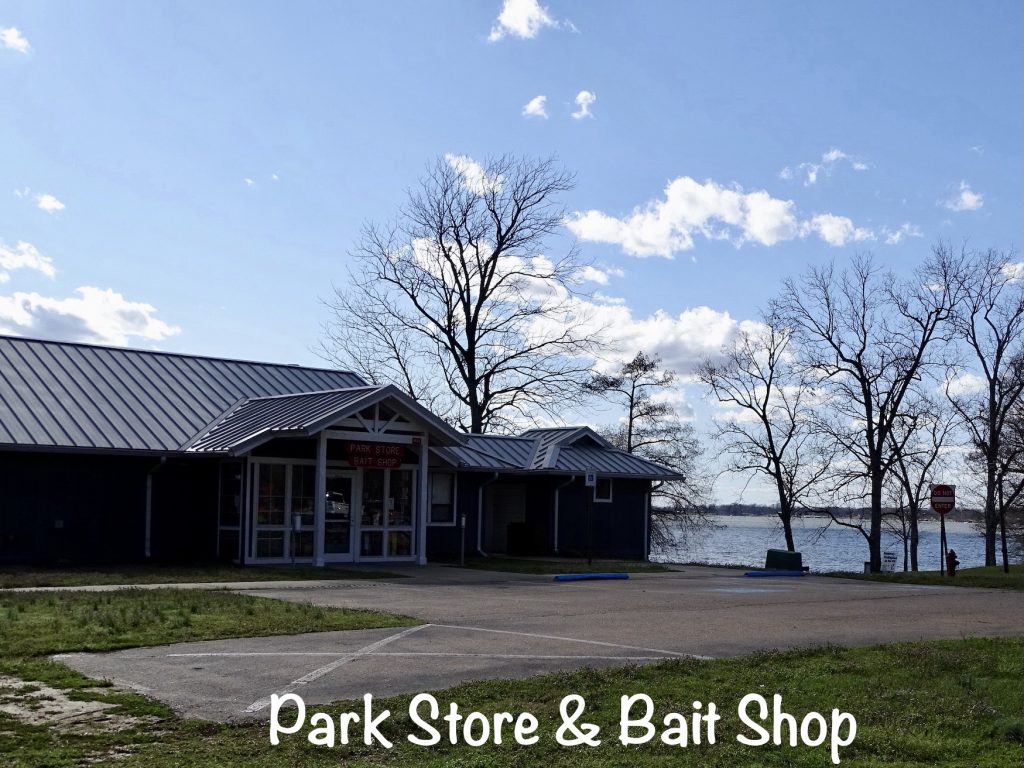
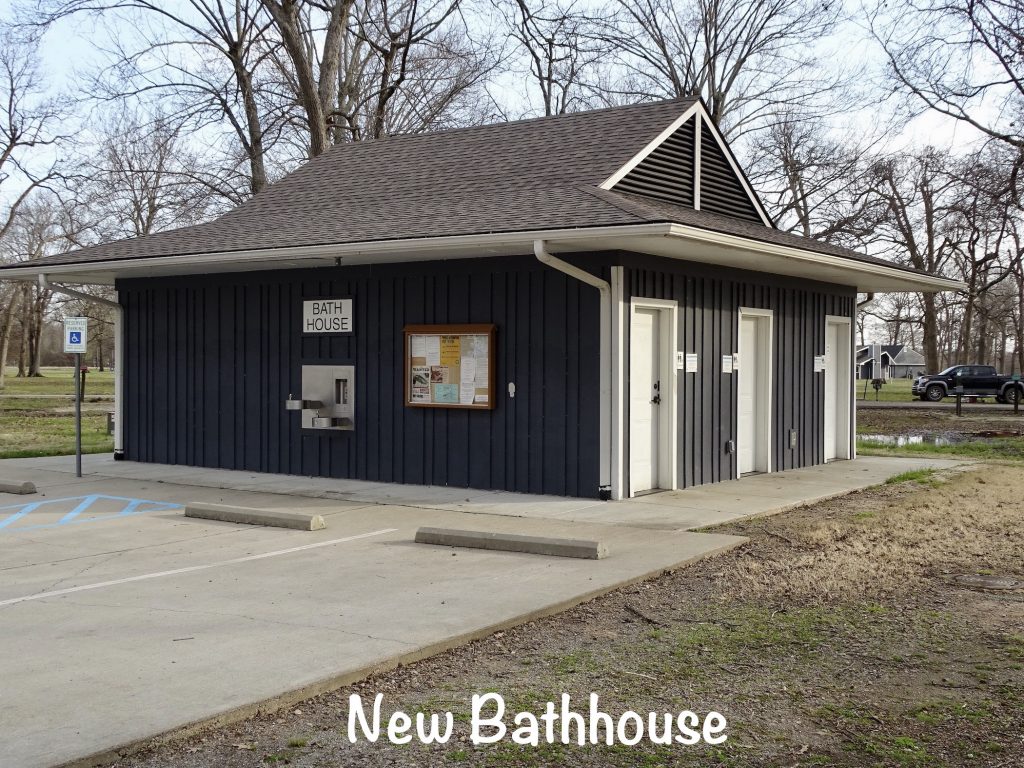
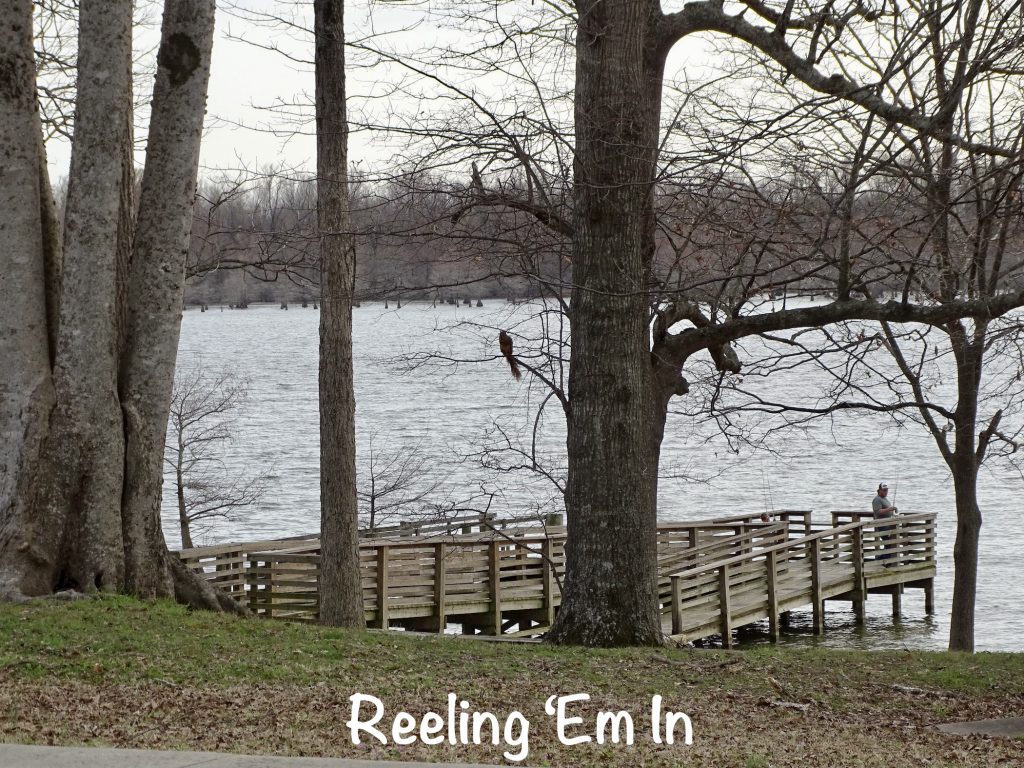
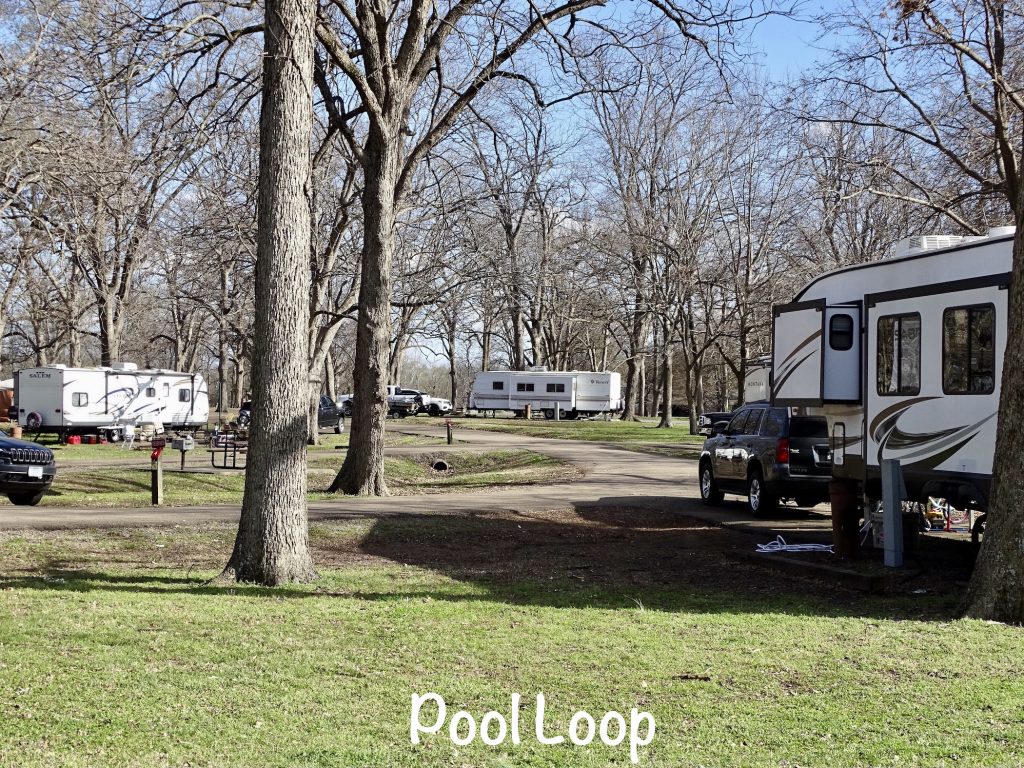
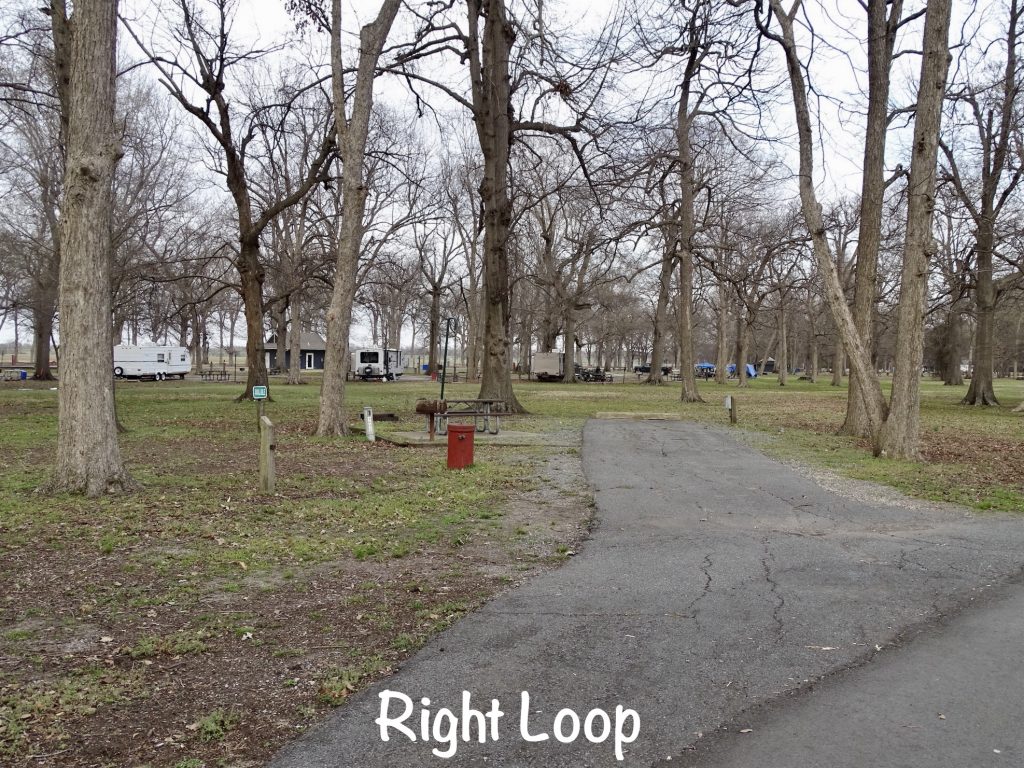
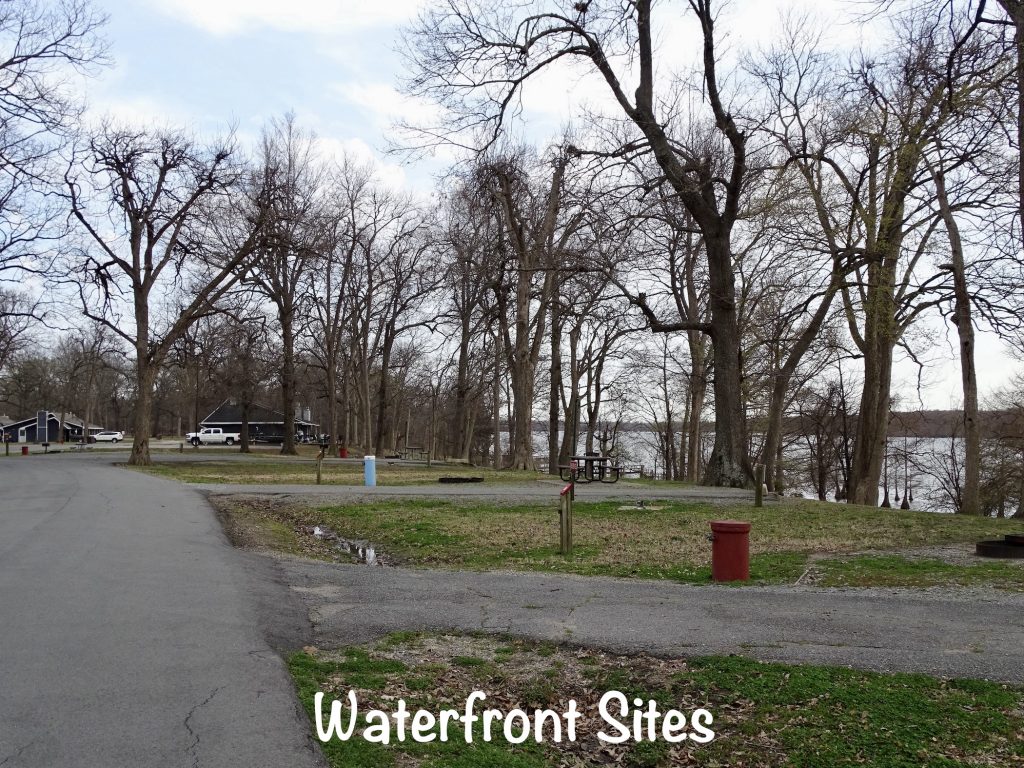
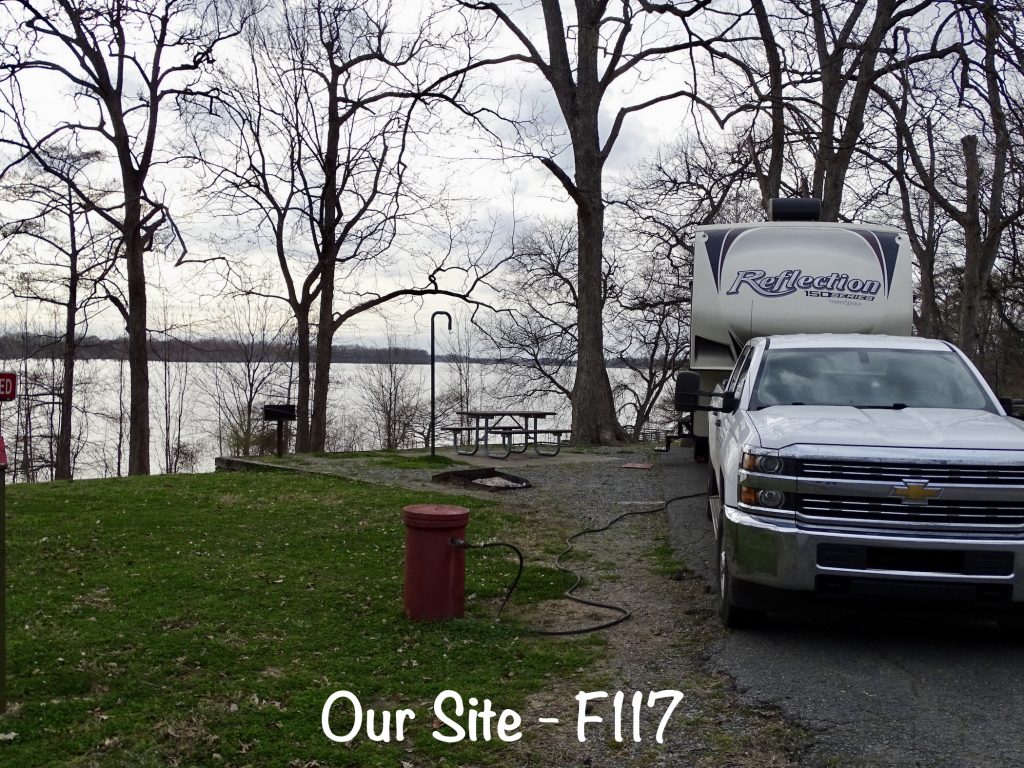
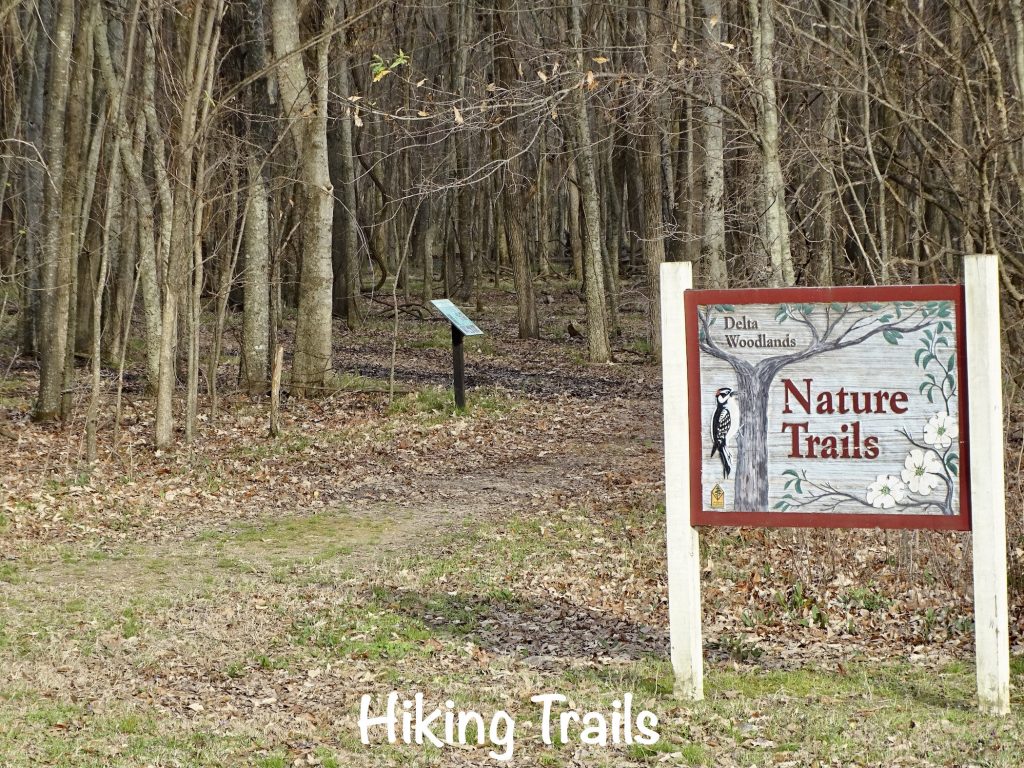
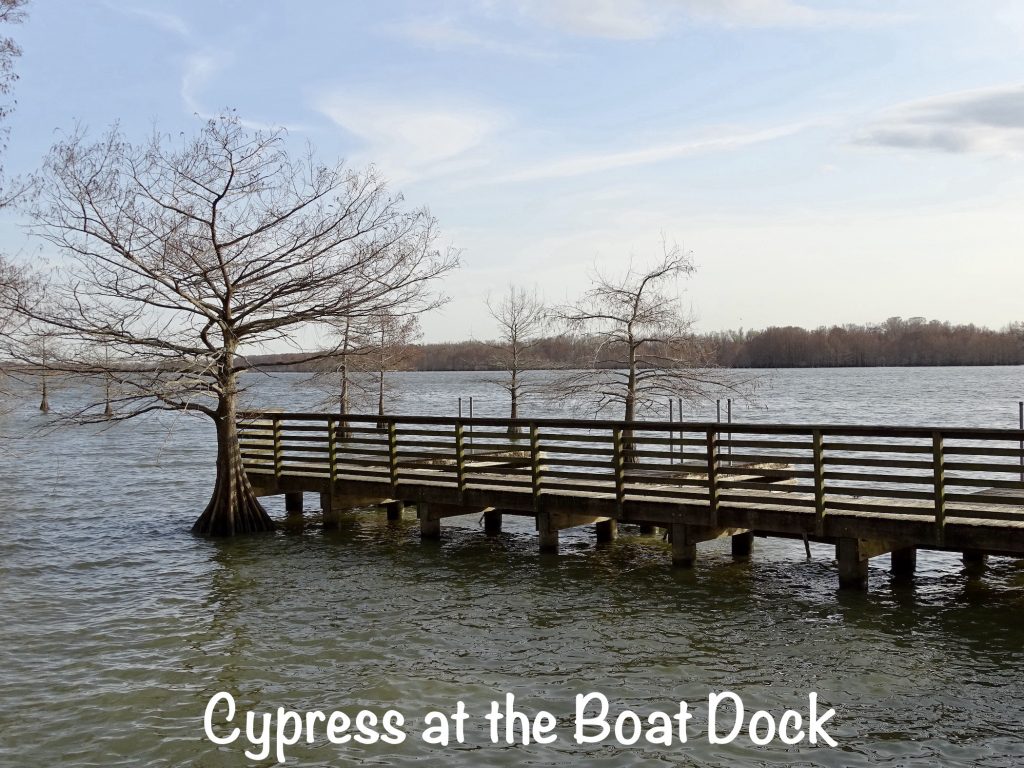
Thursday we were up and out at 8 AM, heading south into Louisiana and down to Winnsboro on LA-17, followed by Gilbert on US-425, then LA-4 to Columbia. There we had lunch at The Barn Home Cooking, a hot bar type of place, where MW had catfish and I had grilled barbecue chicken. It was really good, especially the slaw, cabbage, and greens. All day we have been in the flats, and you can just see for miles. We continued south on US-165 to Tullos and picked up US-84 all the way over to Clarence. Next it was LA-6 into Natchitoches, where us hauling the fifth wheel through the cobblestone streets turned a few heads. It wasn’t tough, though. The final leg was due south a few miles to our latest home, Pecan Orchard RV Park near Cypress.
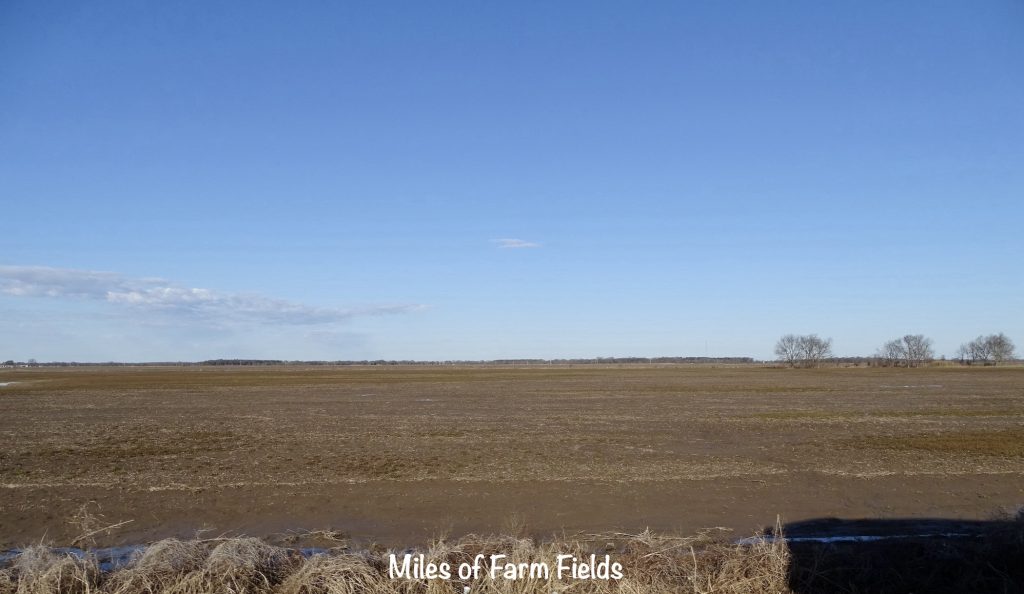
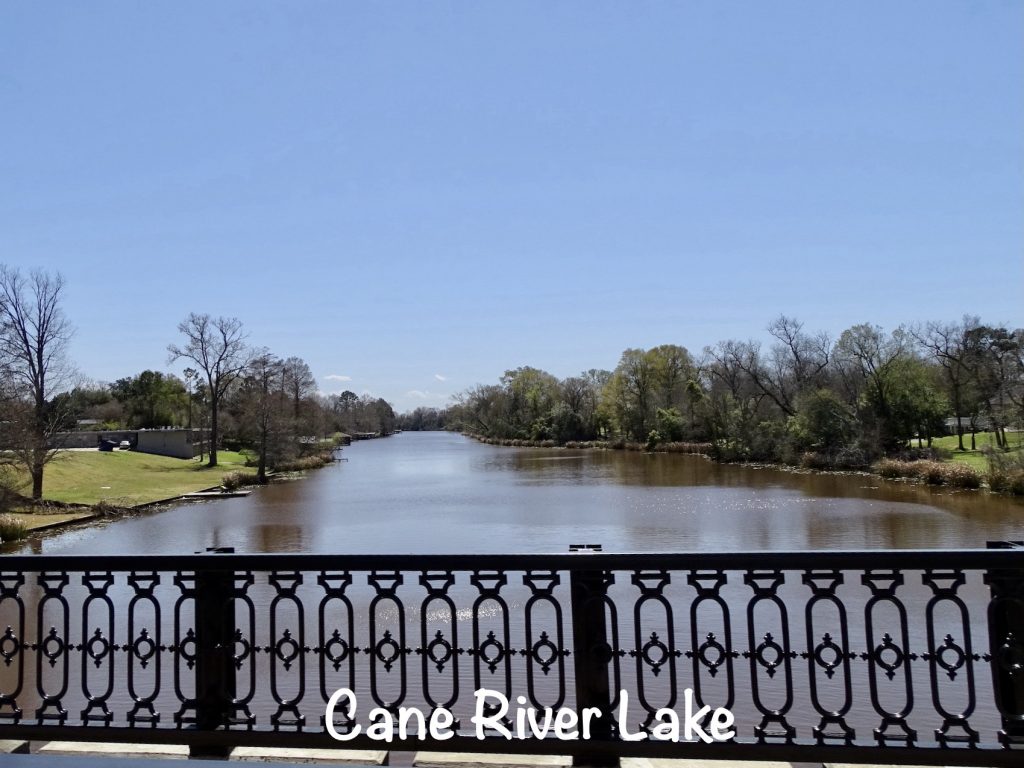

Friday we headed into Natchitoches, the oldest town in Louisiana. Due to a mixed background of languages and dialects since its founding in 1691, the name is pronounced Nack-a-dish (or some say Nack-a-tish) with emphasis on the first syllable. We started at the visitor’s center, where we joined a walking tour of the historic downtown. It is beautiful with a bit of a New Orleans French Quarter feel, and we had a great day to check it out. For lunch we checked out Lasyones Meat Pie Restaurant, which was recommended by one of the natives. Yum! MW had the famous meat pie (he said it was excellent), while I had some pretty amazing shrimp. One thing I tried that I’ve never seen anywhere…carrot casserole. It was very sweet like sweet potato casserole, but had a crumbly texture. For me, it was more dessert-like. After lunch we did a little Christmas shopping at Hello Dolly and Georgia’s Gift Shop. Last year we passed through Natchitoches specifically to check out the fort that is our next stop, but couldn’t find anywhere to park the rig. Without Petunia, that wasn’t a problem today.
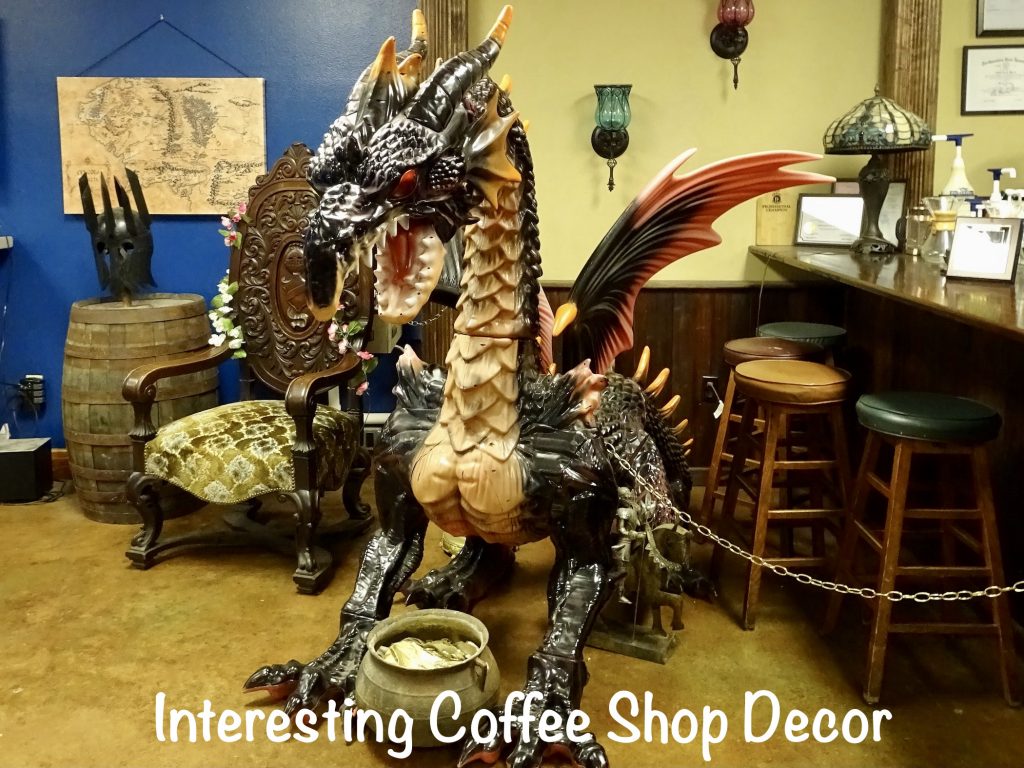
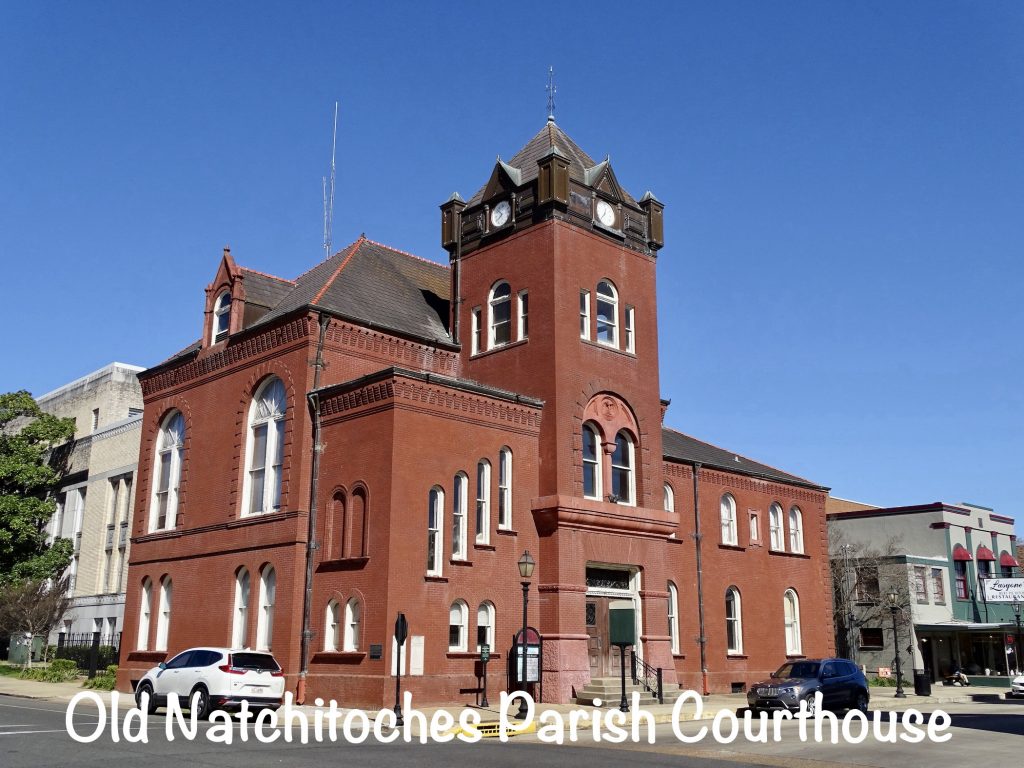
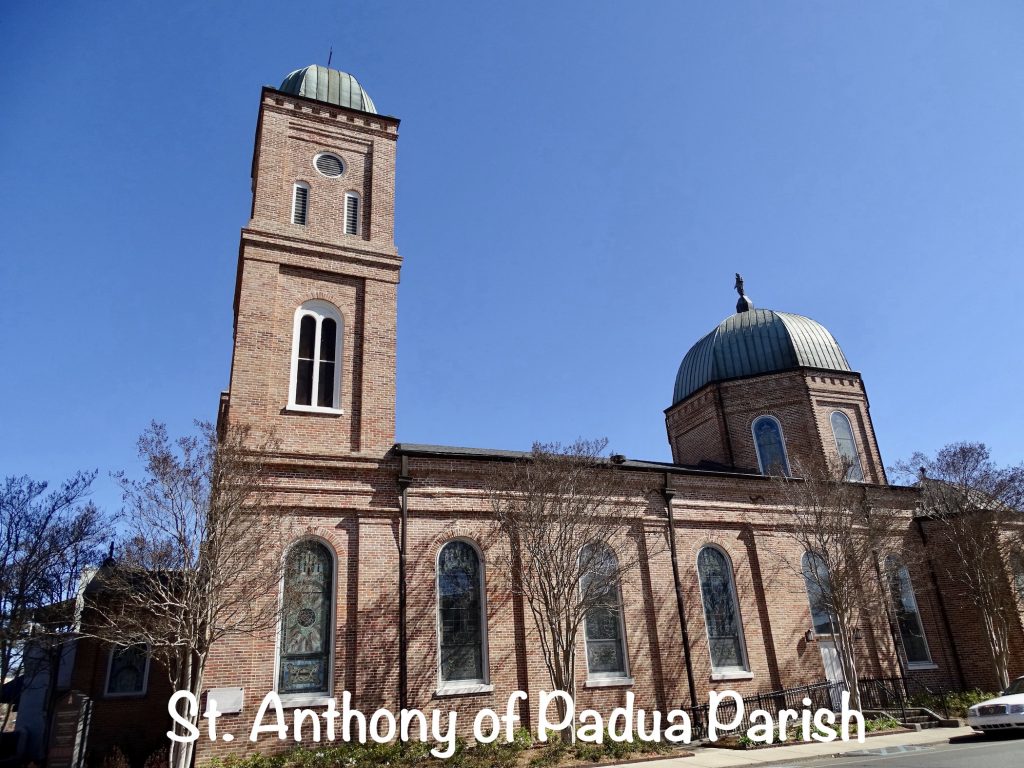
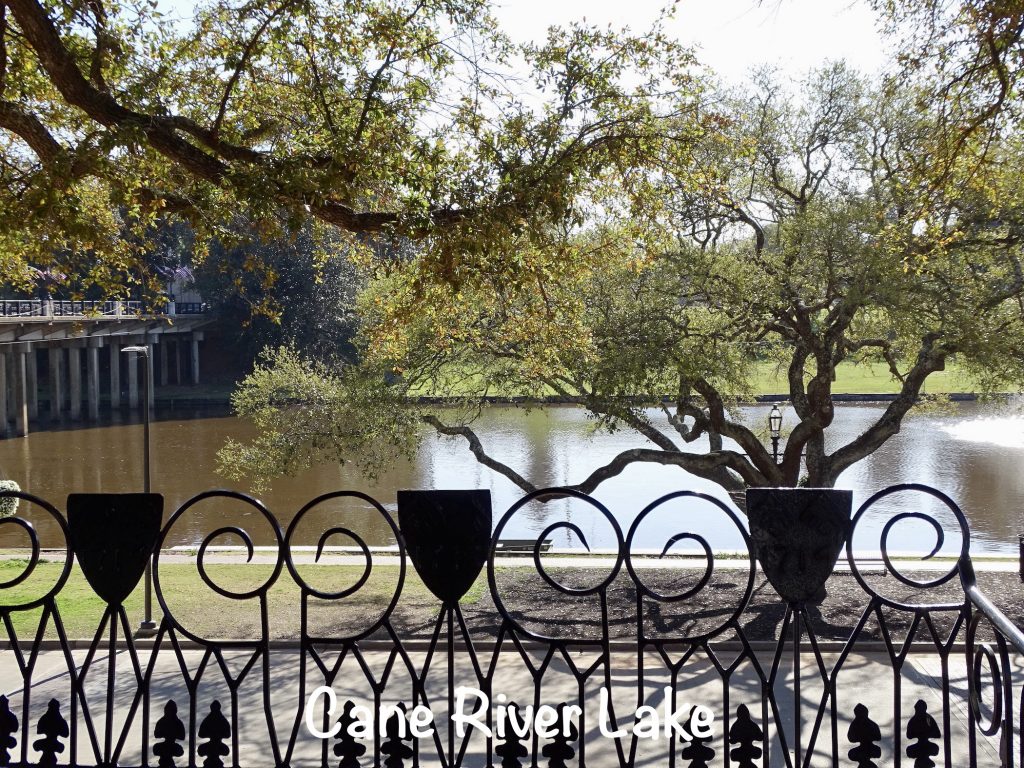
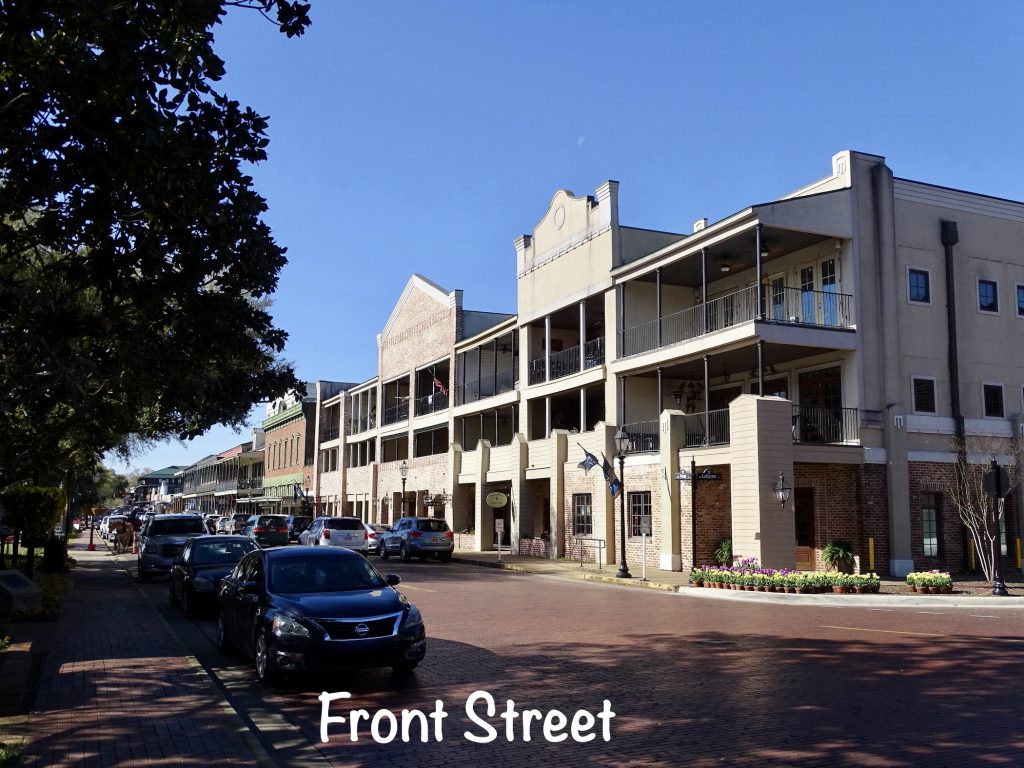
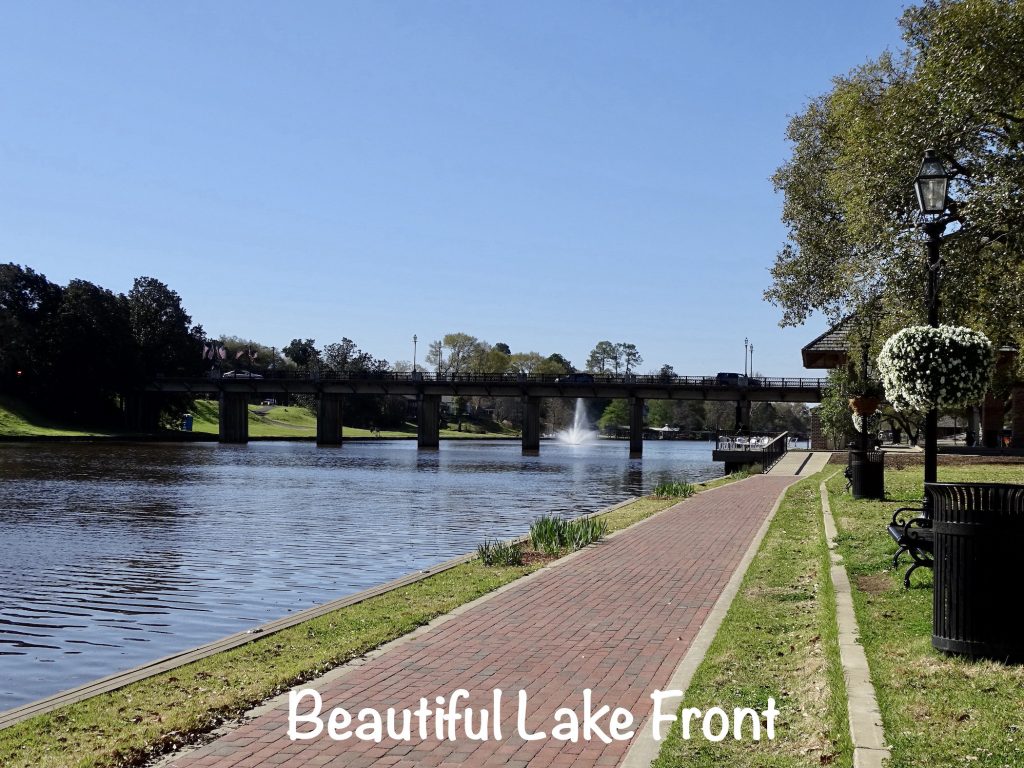
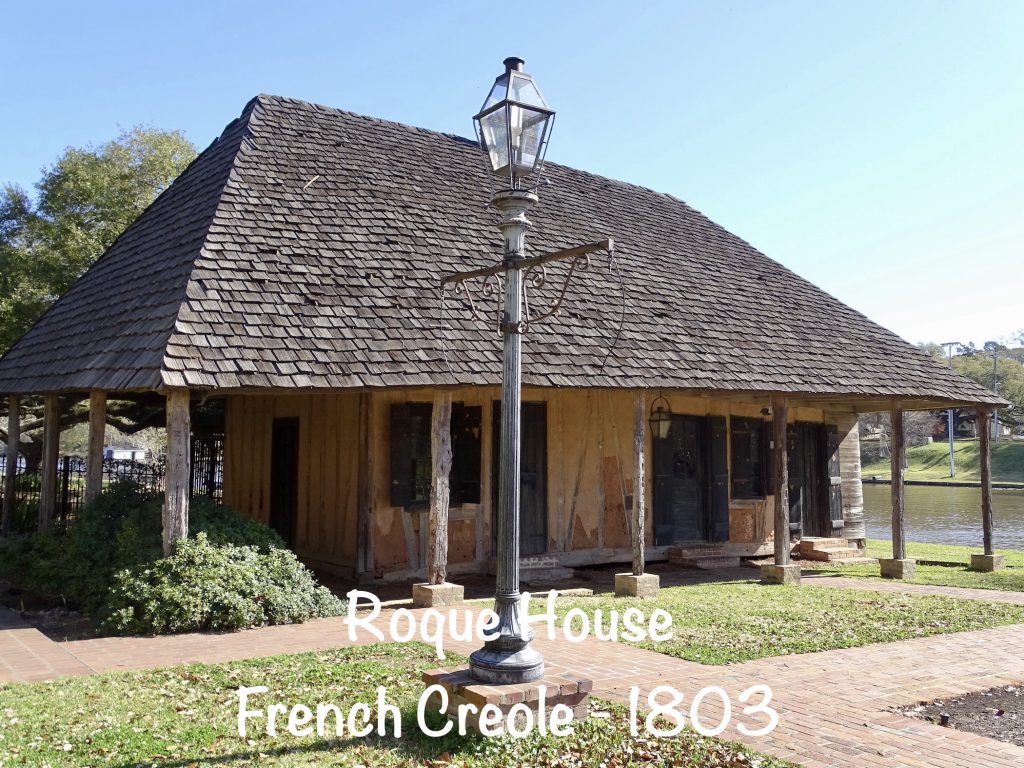
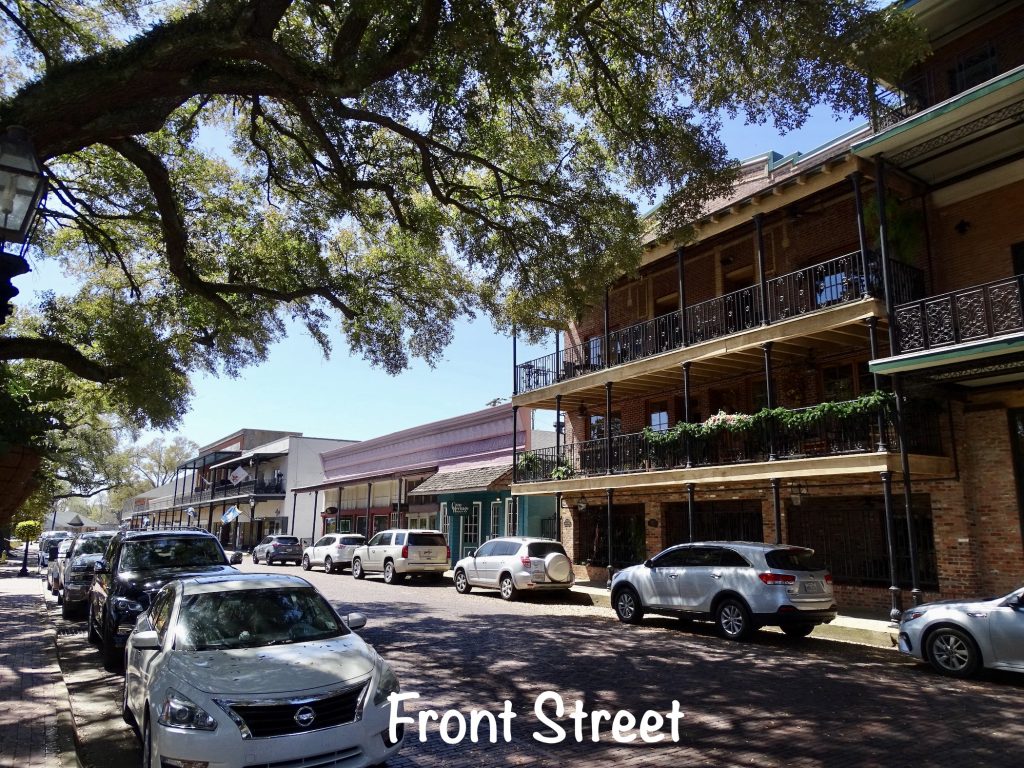
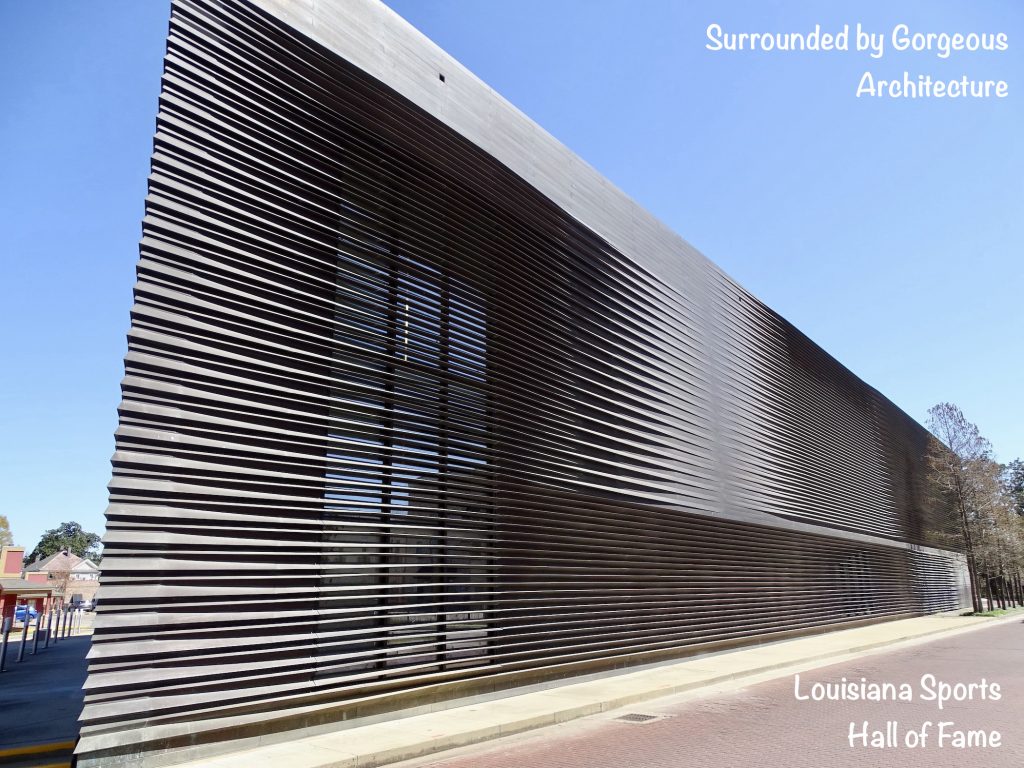
The Fort St. Jean Baptiste State Historic Site is at the center of any history told of this area. In 1714, a French Canadian trader named Louis Antoine Juchereau de St. Denis came upon a huge log jam in the Cane River near the village of the Natchitoches Indians. There he built two huts that would be the oldest permanent settlement in what would become the Louisiana Purchase. This little trading center became one of the most important in the Lower Mississippi Valley. Two years later a military outpost was established in the location to keep Spanish forces out of French territory. The fort went through several hands, staying under French control until 1762, when they ceded it to Spain, and it fell into disrepair. By the time the United States took over in 1803, it was in ruins. This historic site is a replica of the fort based on original plans and constructed with materials and methods that would have been available when originally built. The actual site was a few hundred yards closer to where downtown is now. After looking around for a while, we headed to one more stop for the day.
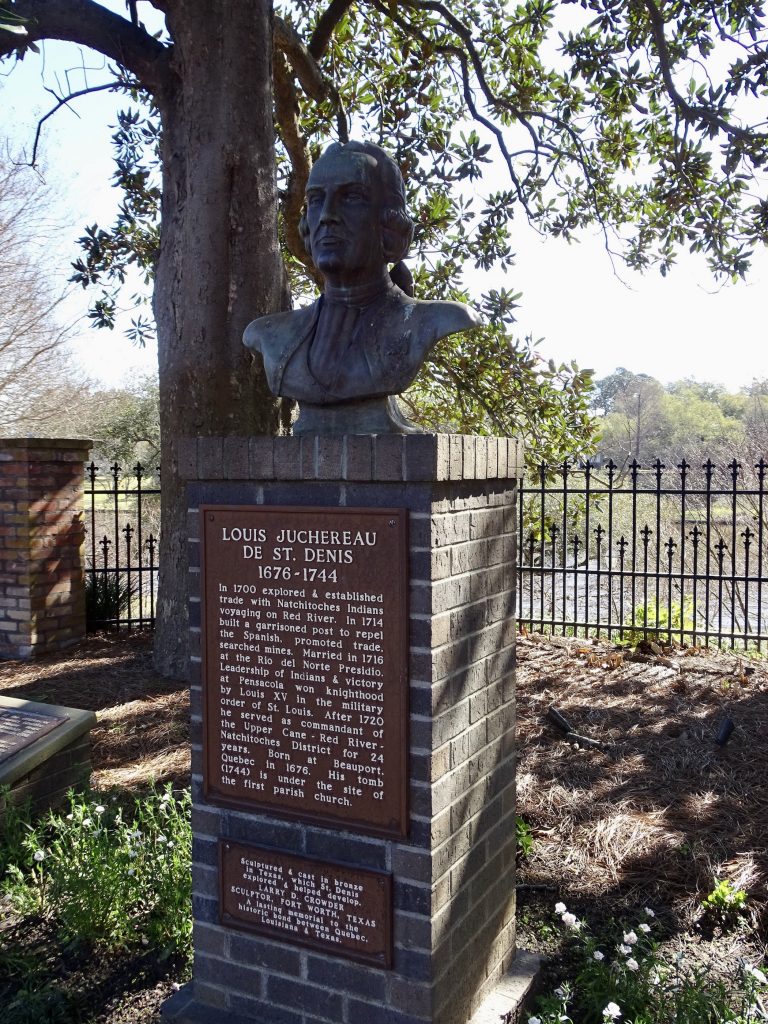
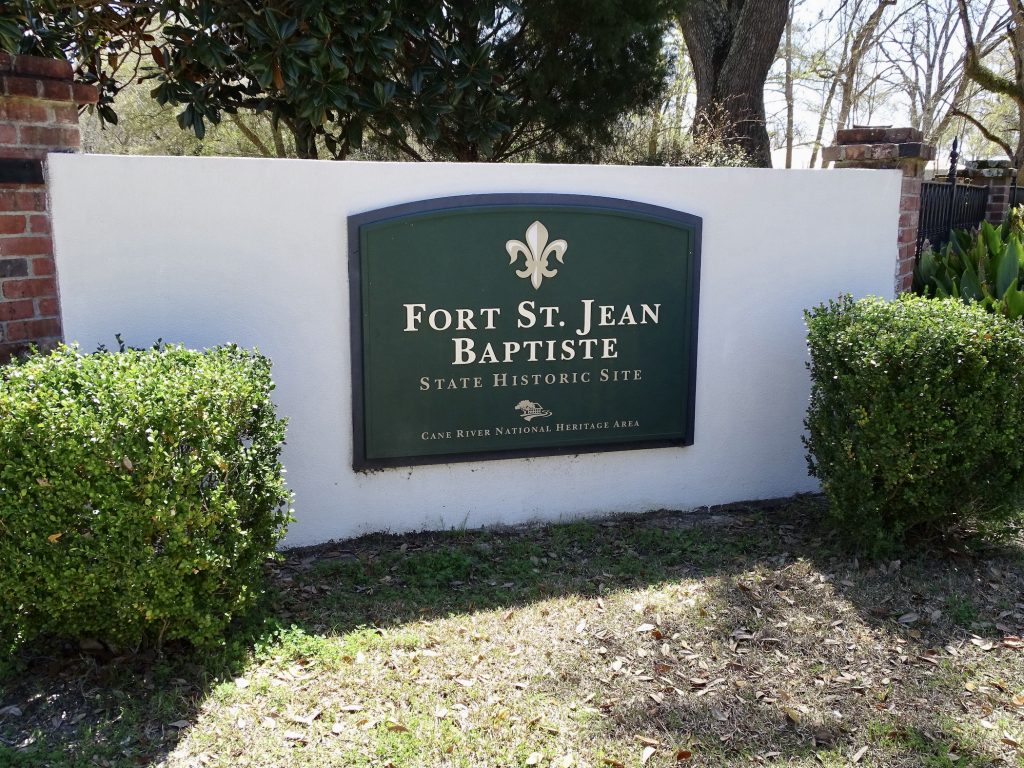
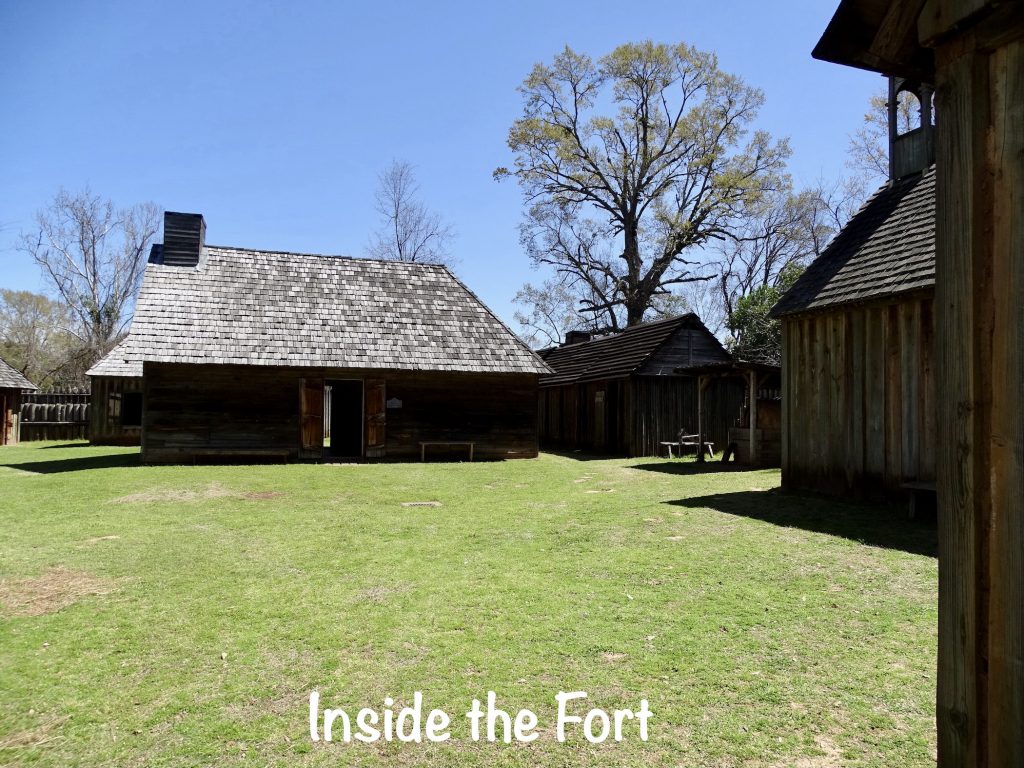
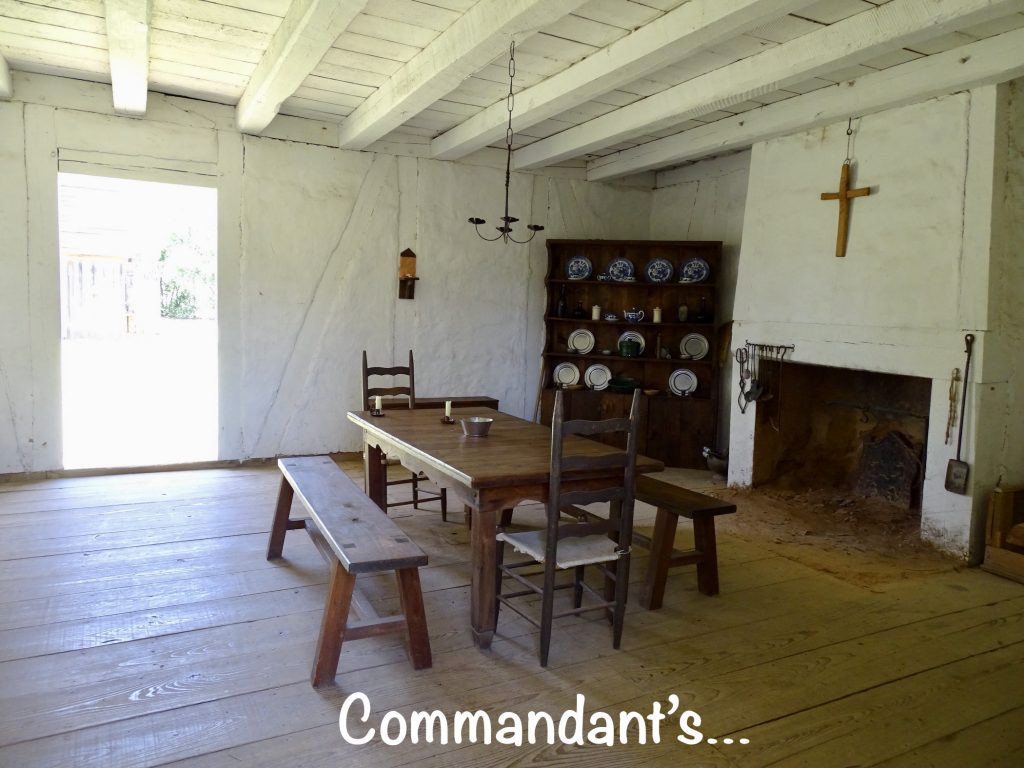
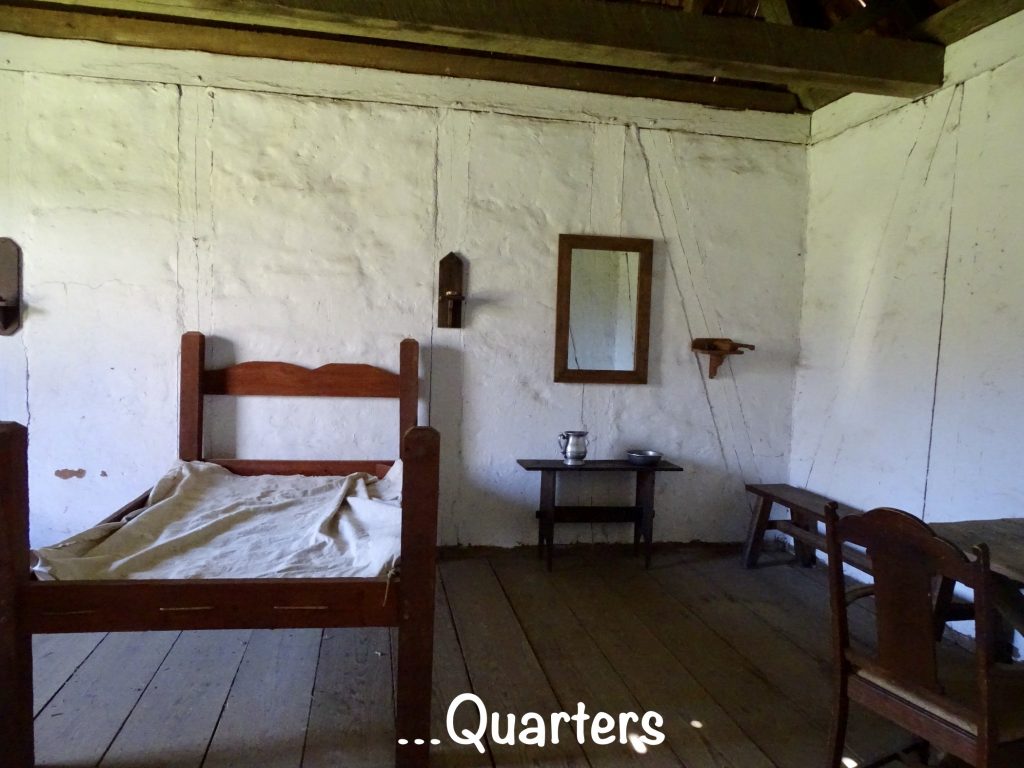
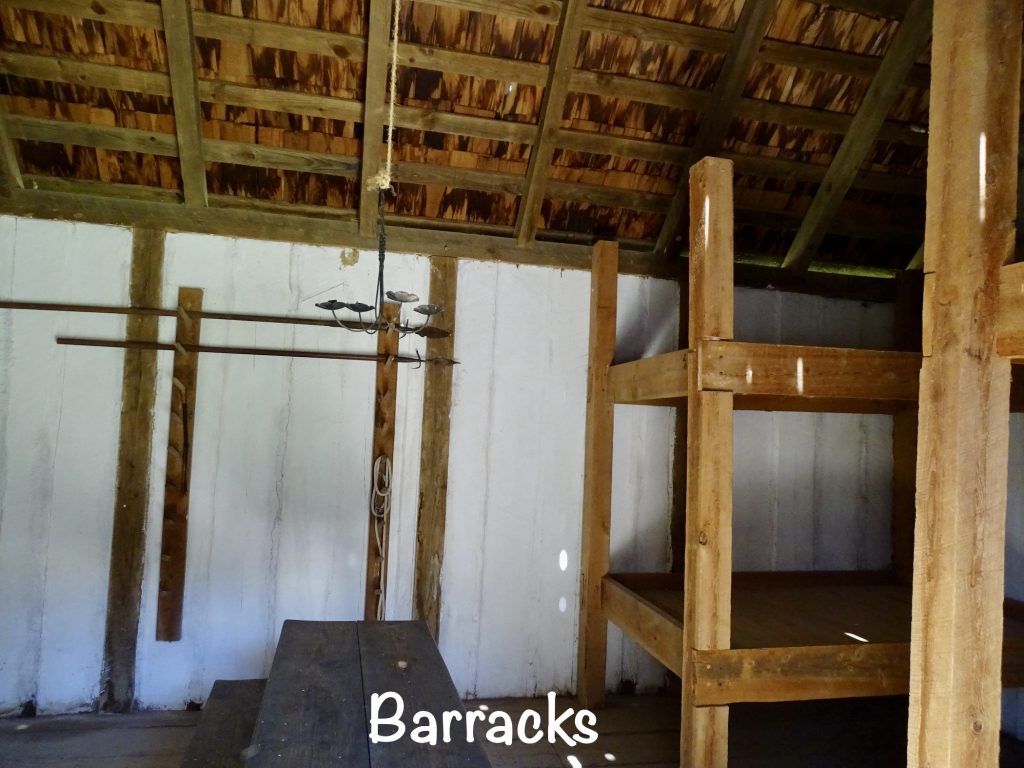
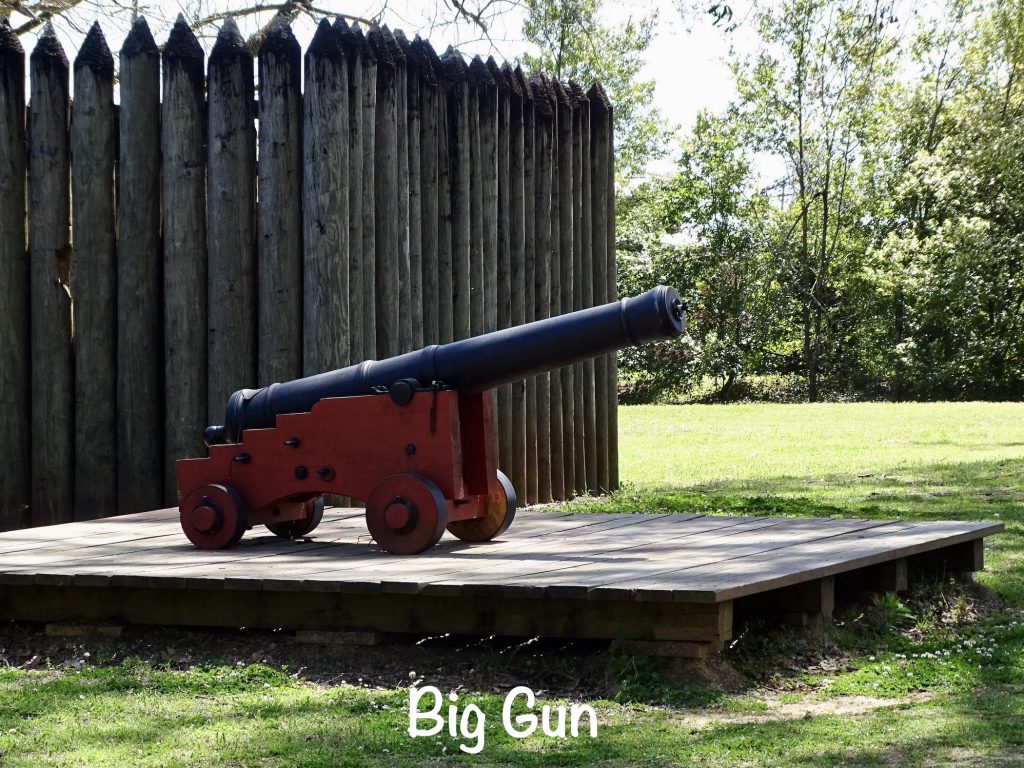
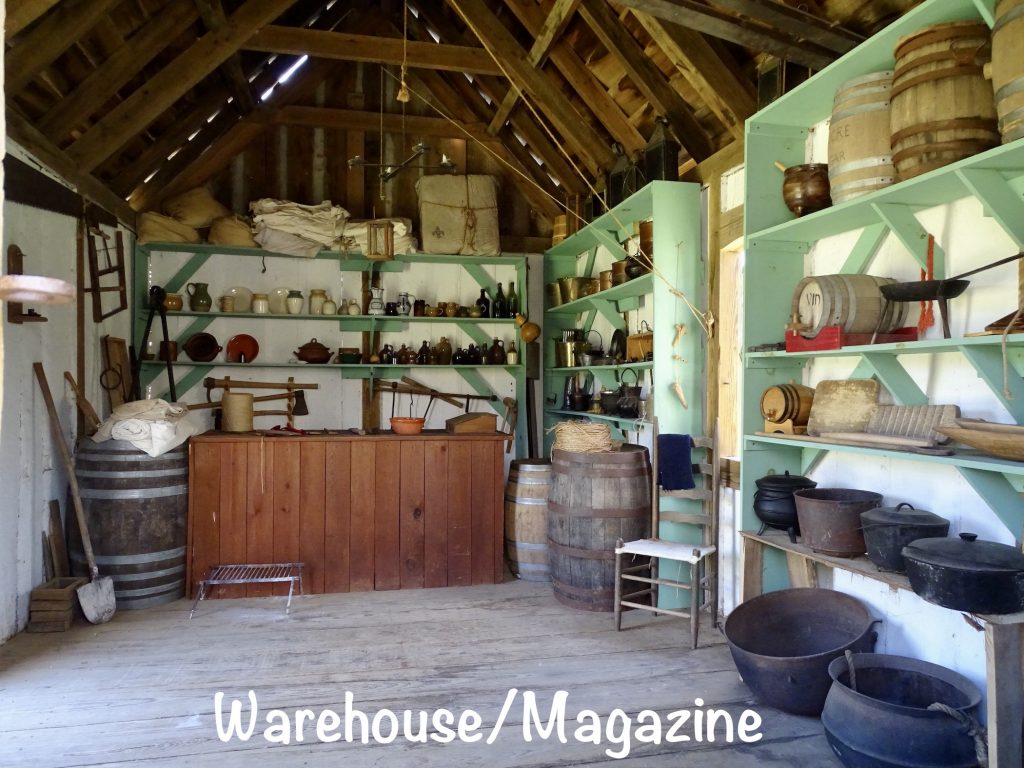
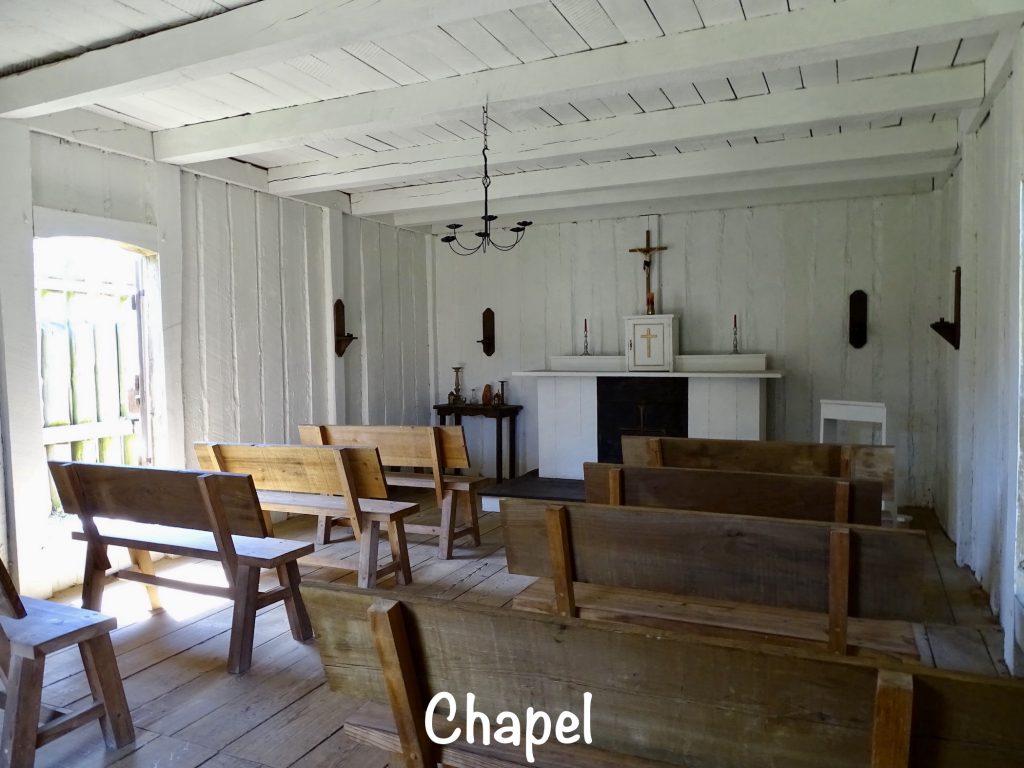
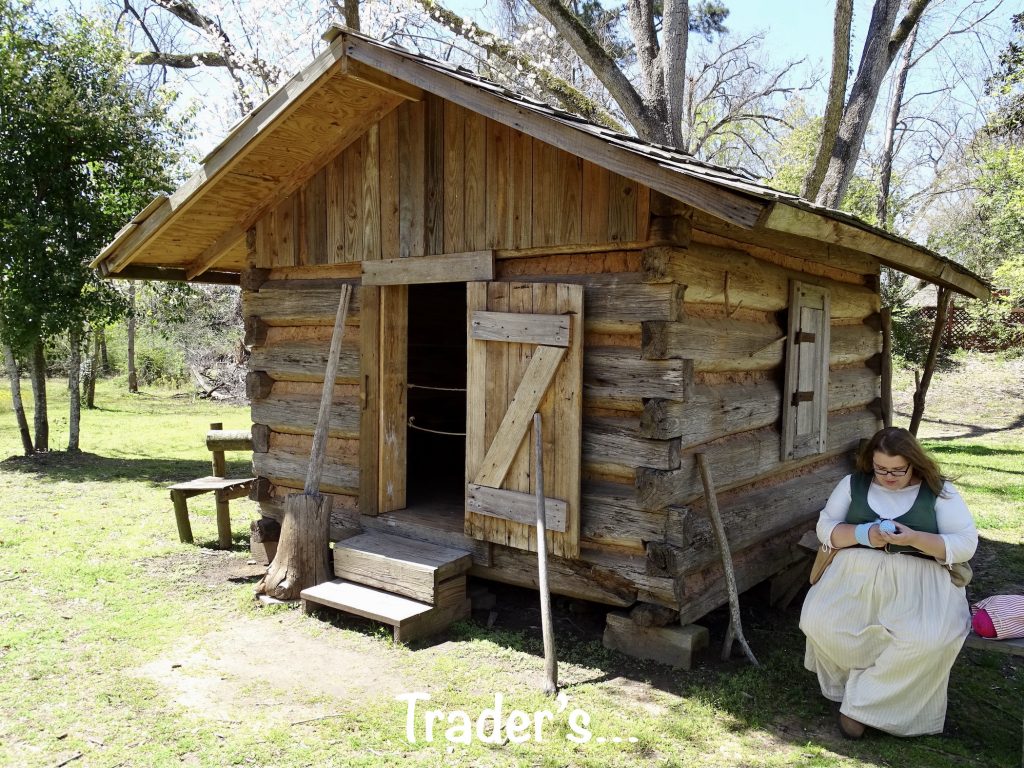
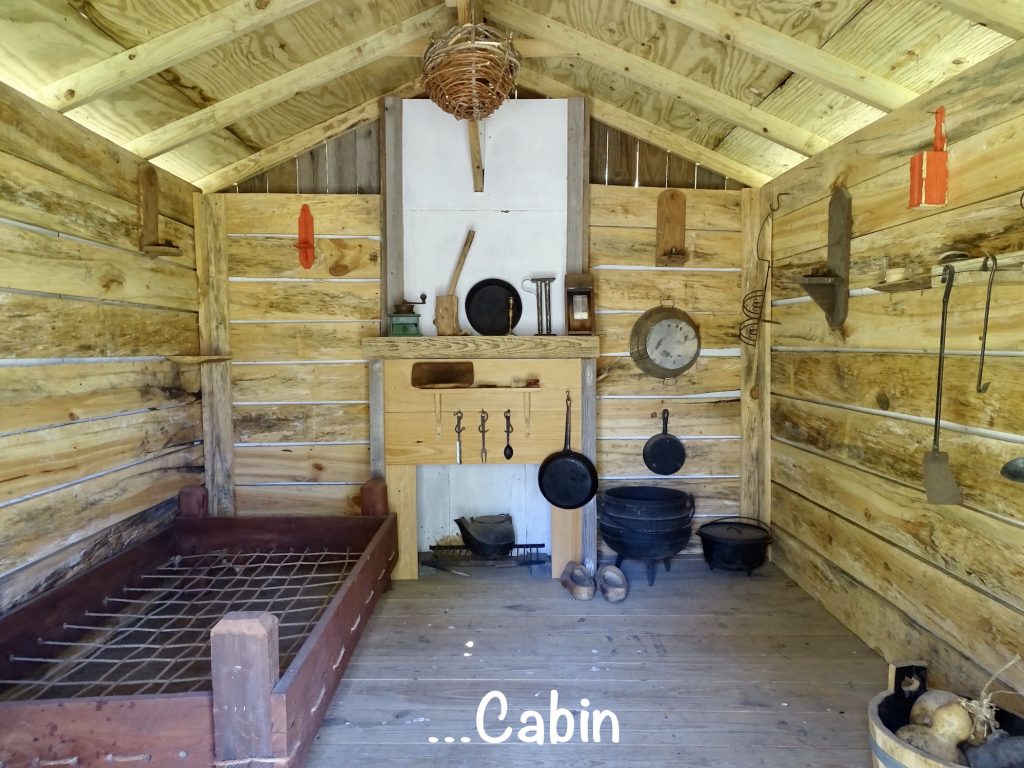
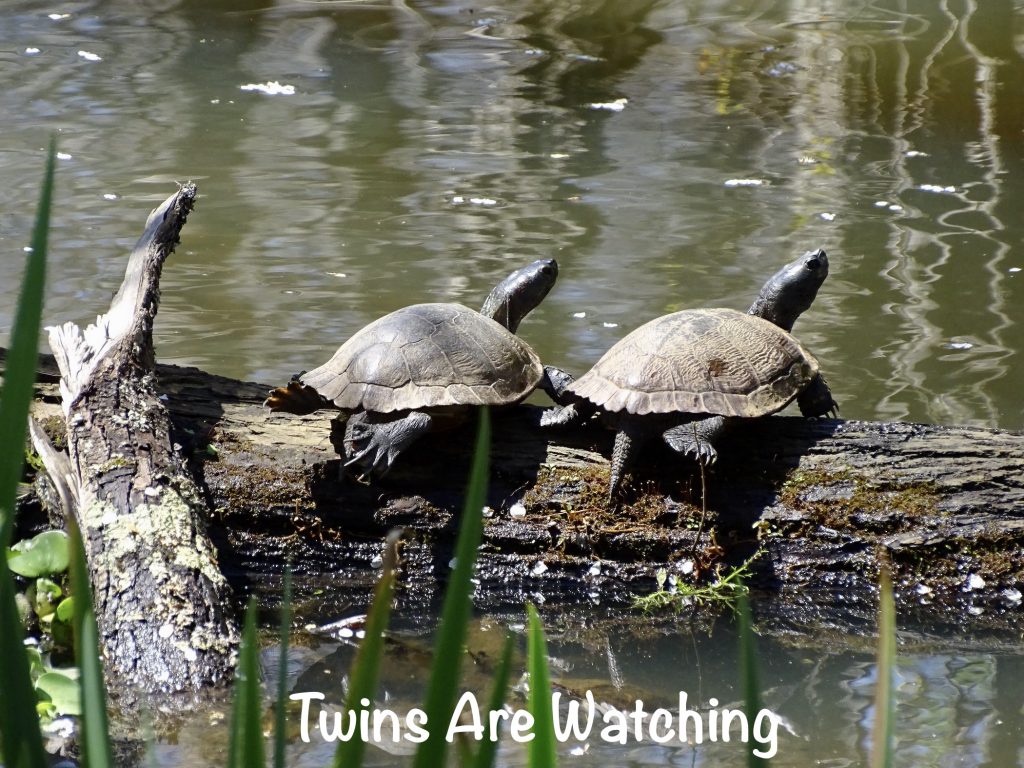
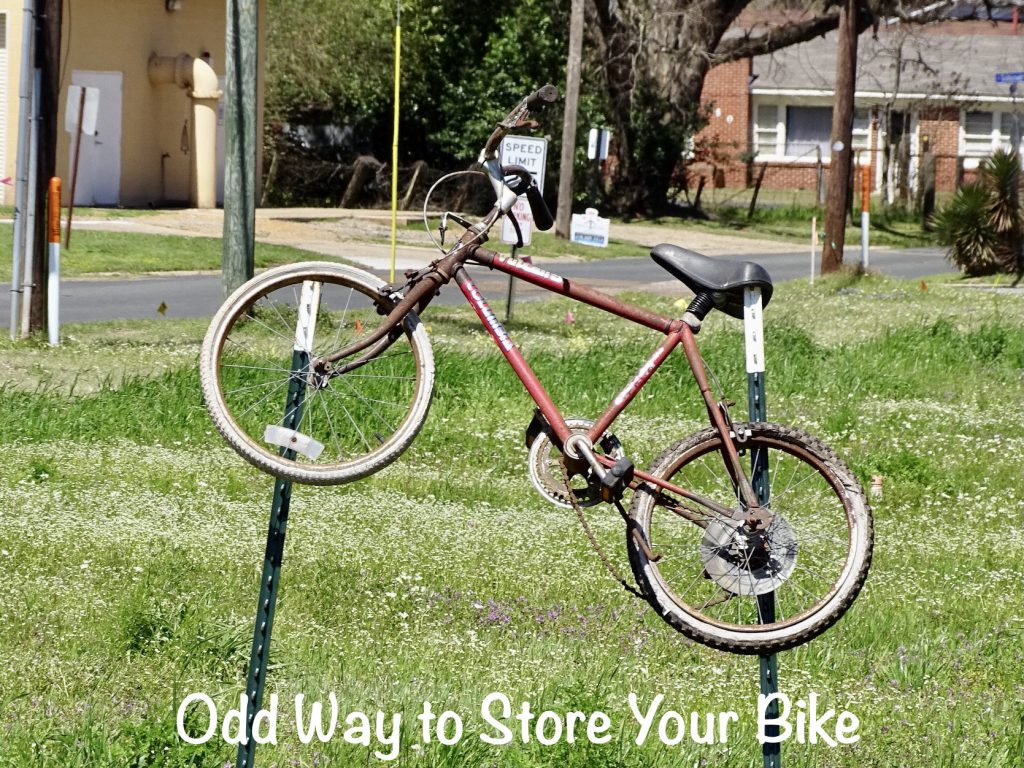
On the route out to Petunia the day before we passed the National Fish Hatchery Aquarium, so we decided to stop by and see what was there. The aquarium is a small building up front behind which the huge hatchery is spread across quite a few acres. Inside they had a nice assortment of fish found in the area. Later that evening MW was jonesing for some Whataburger, so I made a quick run for takeout.
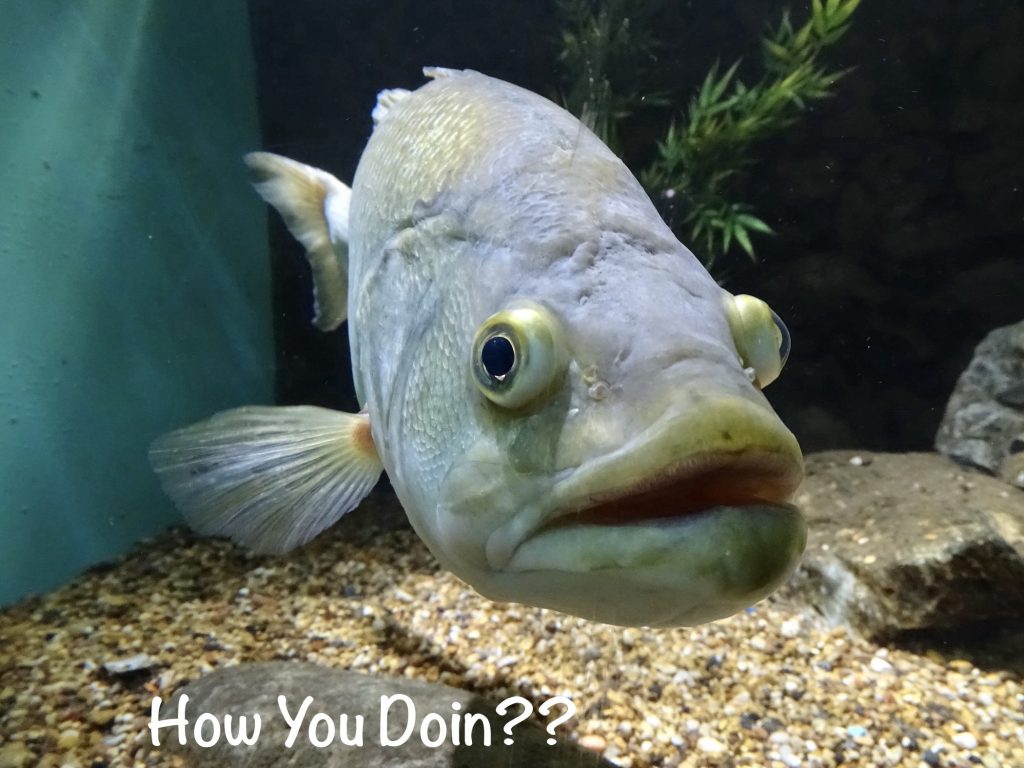

Saturday started with a prayer for my family gathering in Georgia to bury Uncle Wyatt. I was sad at not being able to attend, but had Booger commitments in Texas fast approaching that would not allow me to turn back east. I spent the morning taking care of some writing, then we headed out to lunch at Cane River Commissary. It was a perfect day for their nice, shaded patio. MW went for the Filé Gumbo, while I had a Po Boy. Yum! Their signature drink was a Rickarita. While waiting for our order, we spent several minutes discussing what it might be: best guess…a cross between a rickey and a margarita? I asked the waitress when she came back, and she laughed. “My dad, Ricky, owns the place and it is just his margarita recipe.” Well dang, that’s not what we expected at all. Next up we headed over to Oakland Plantation in the Cane River Creole National Historical Park, which is a part of the Cane River National Heritage Area. One of two plantations in the park, this one was founded in 1785 by Jean Pierre Emanuel Prud’homme on a Spanish land grant. The original crops were tobacco and indigo, but that switched to cotton with the invention of the cotton gin in 1793 and increased demand from mills in the north. Around 150 slaves lived and worked the fields before the Civil War. Most people believe that plantation agriculture ended after emancipation, but tenant farmers and sharecroppers (most of them former slaves) kept it alive until well into the 20th century. The beginning of the end came in the 1930s as mechanization began to replace the need for people. Then the drastic increases in technology as a result of WWII ended the plantations for good. The Creole cottage main house was built by slaves of cypress wood in 1821 and was originally four rooms. It was in the same family for generations, and many changes and additions occurred over the years. In addition to the main house, the property includes the plantation store, slave cabins, the overseer’s house, and a variety of other barns, sheds, animal pens, etc. (The plantation store was similar to the company store in mining. They’d sell to the slaves/workers, sometimes on credit, which would keep them owing. That is where the line from the song “I owe my soul to the company store” came from.) There is also a film overview and guides to answer questions. It is beautiful under the huge live oak trees, and a tour will give you a glimpse into plantation life for both the owners and slaves. Additionally, this entire area is filled with southern, French, Native American, Spanish, and African, culture. Hollywood has added their lore to the area as well. The Horse Soldiers (1959) was filmed at this plantation, and Steel Magnolias (1989) and The Man in the Moon (1991) were both filmed at multiple locations around Natchitoches. Rumor has it that John Wayne was awesome, but Bill Holden was a jackass. After spending time looking around, we headed into Natchitoches for some groceries, then kicked back at Petunia.
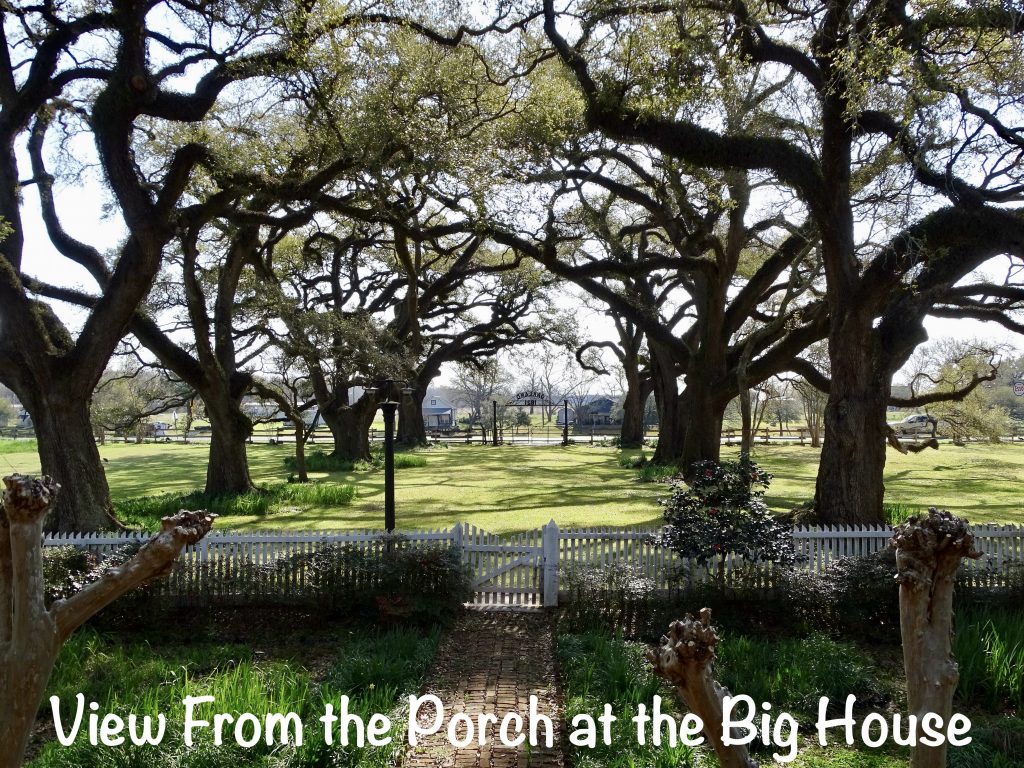
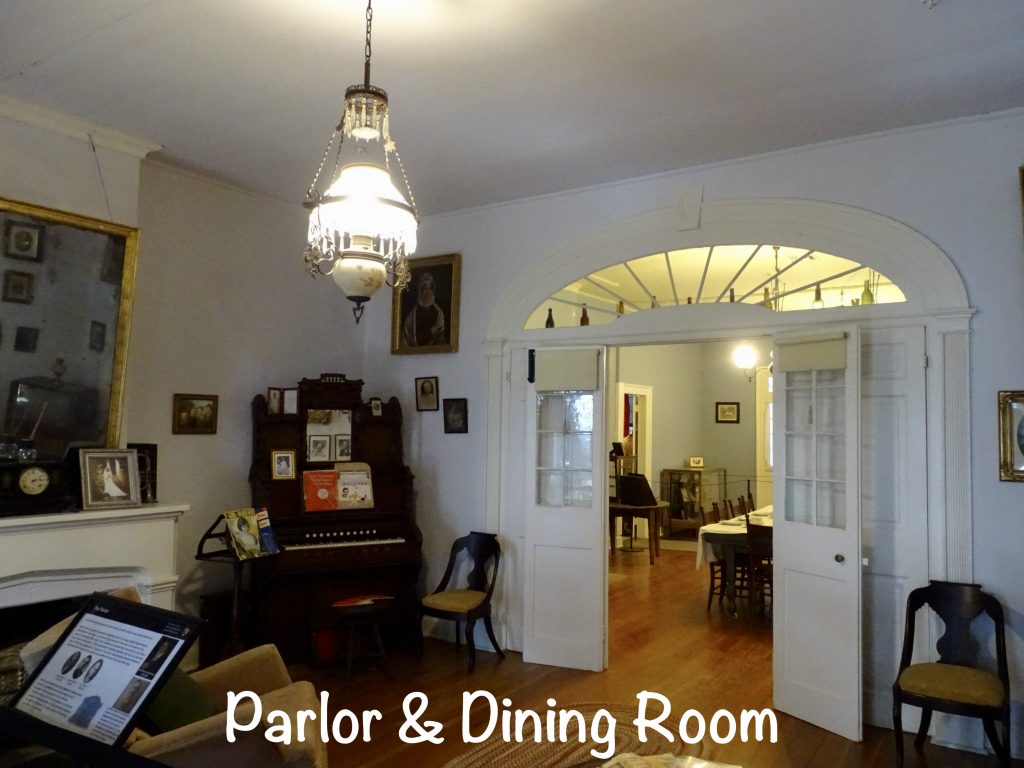
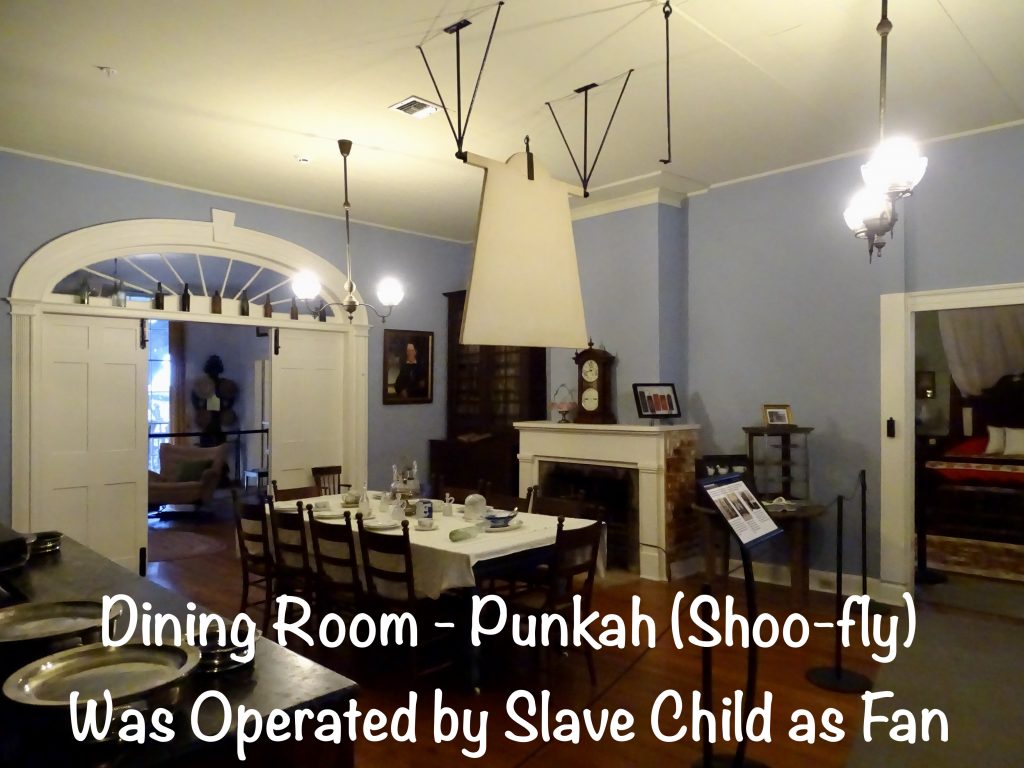
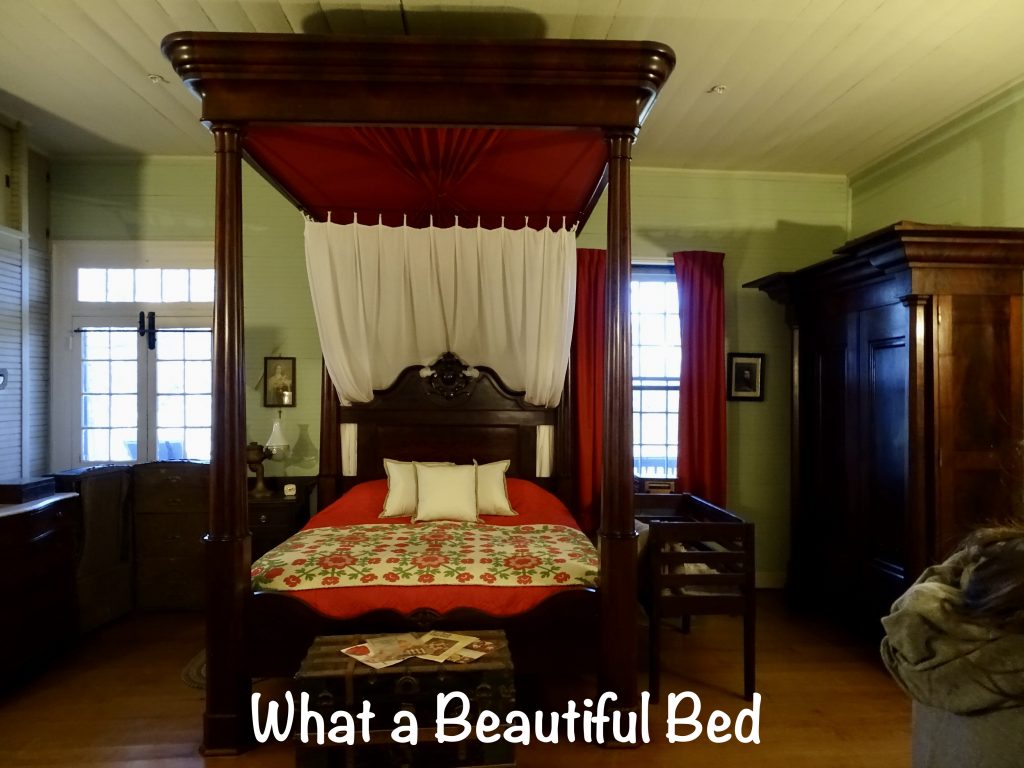
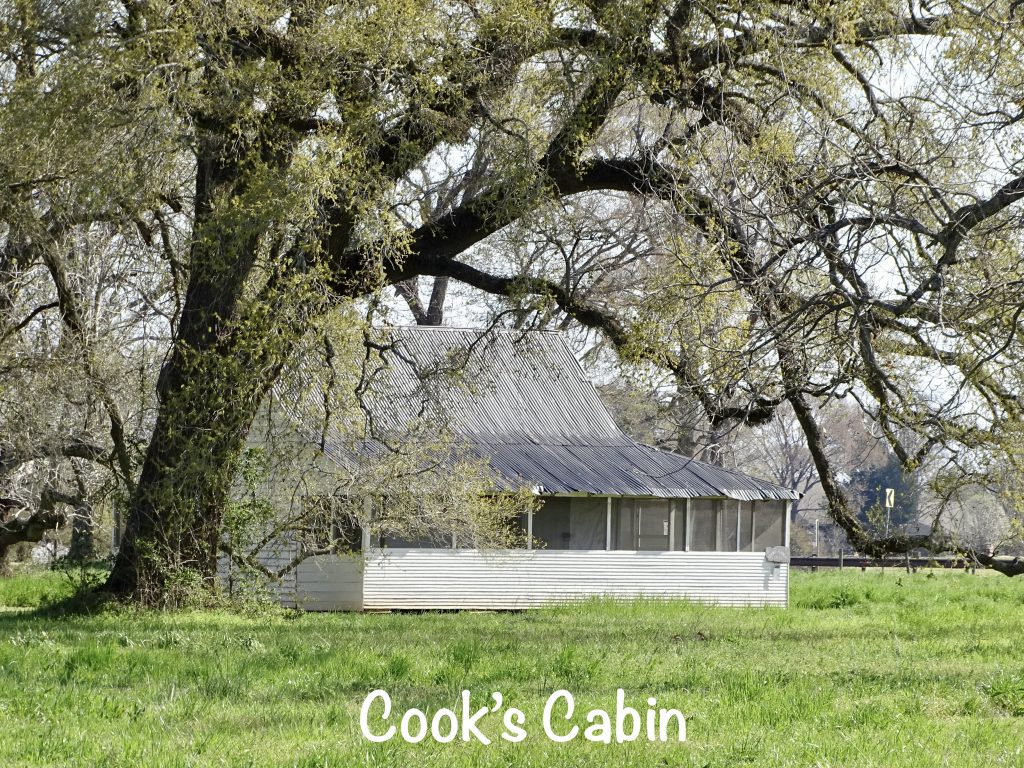
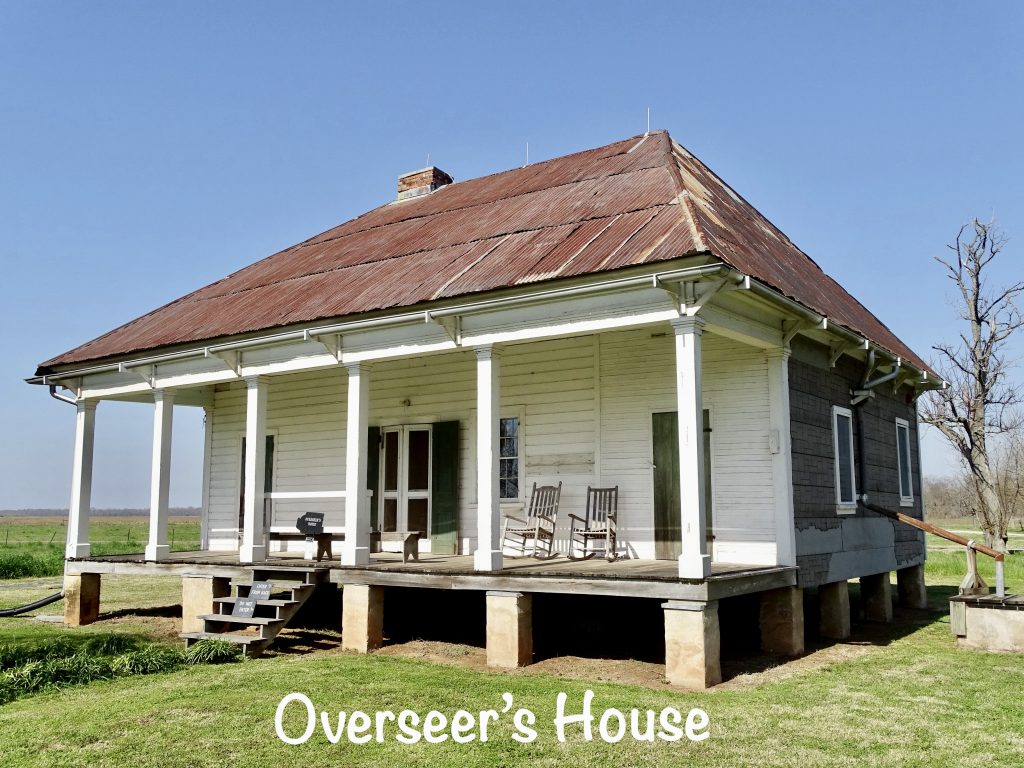
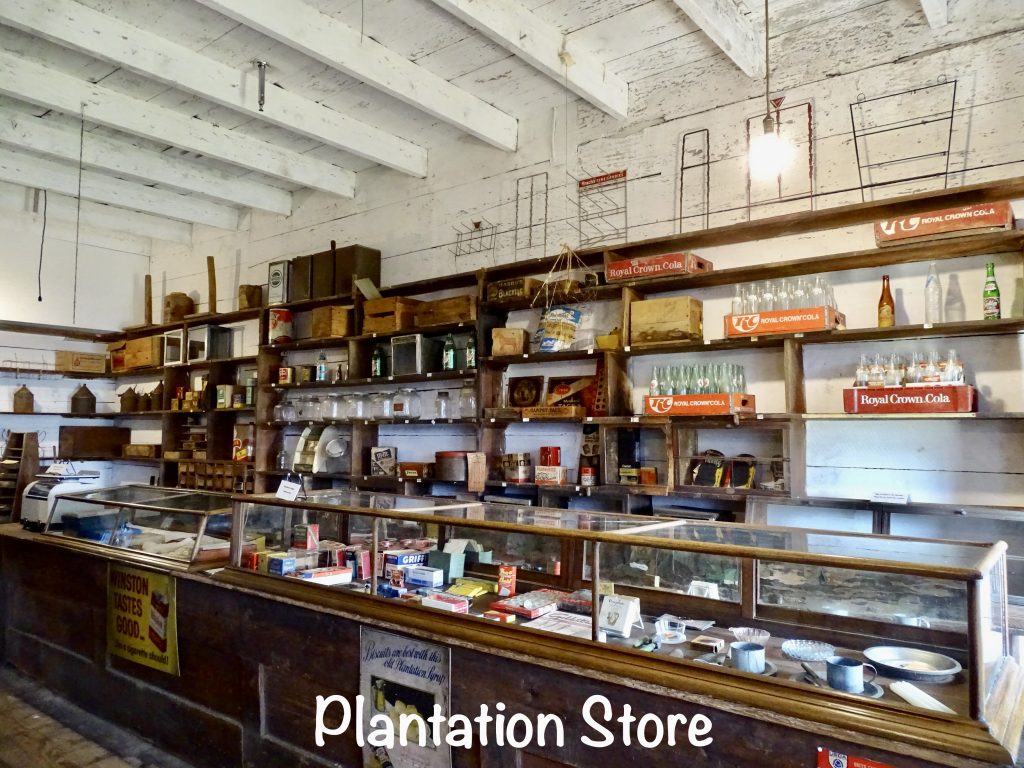
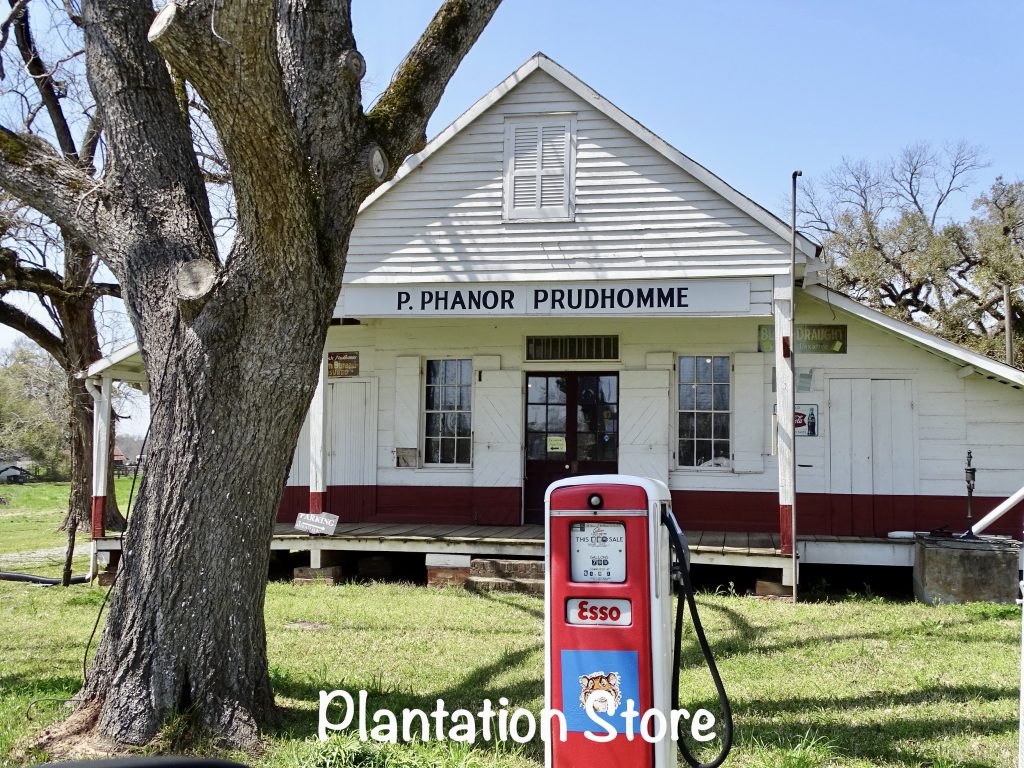
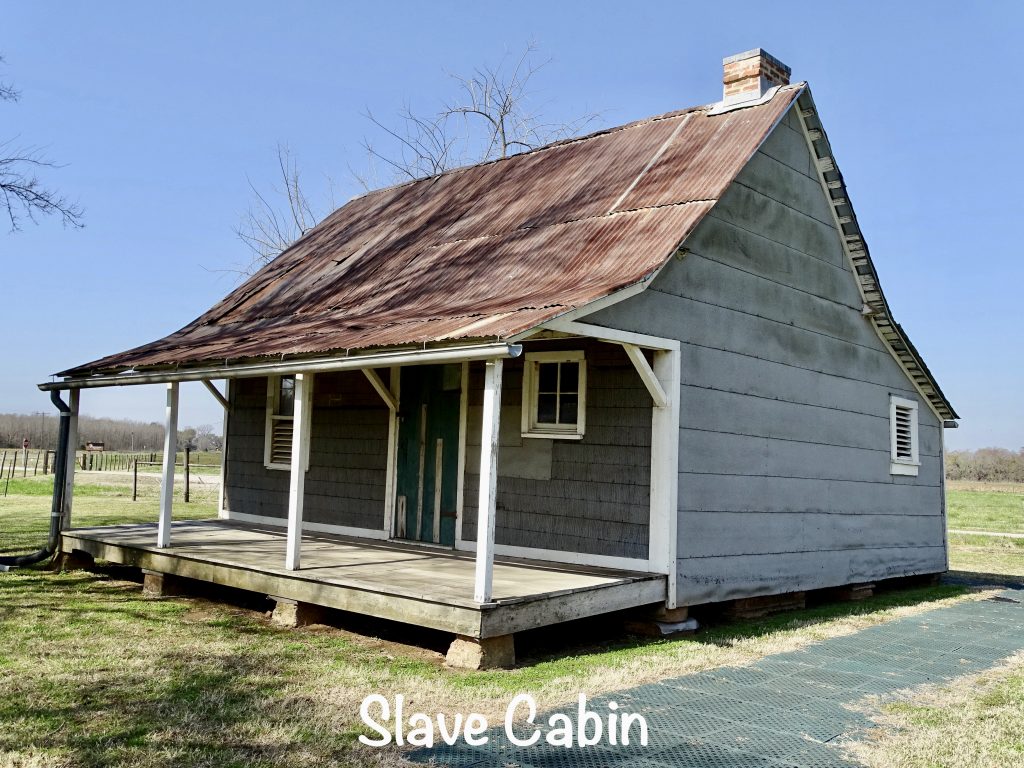
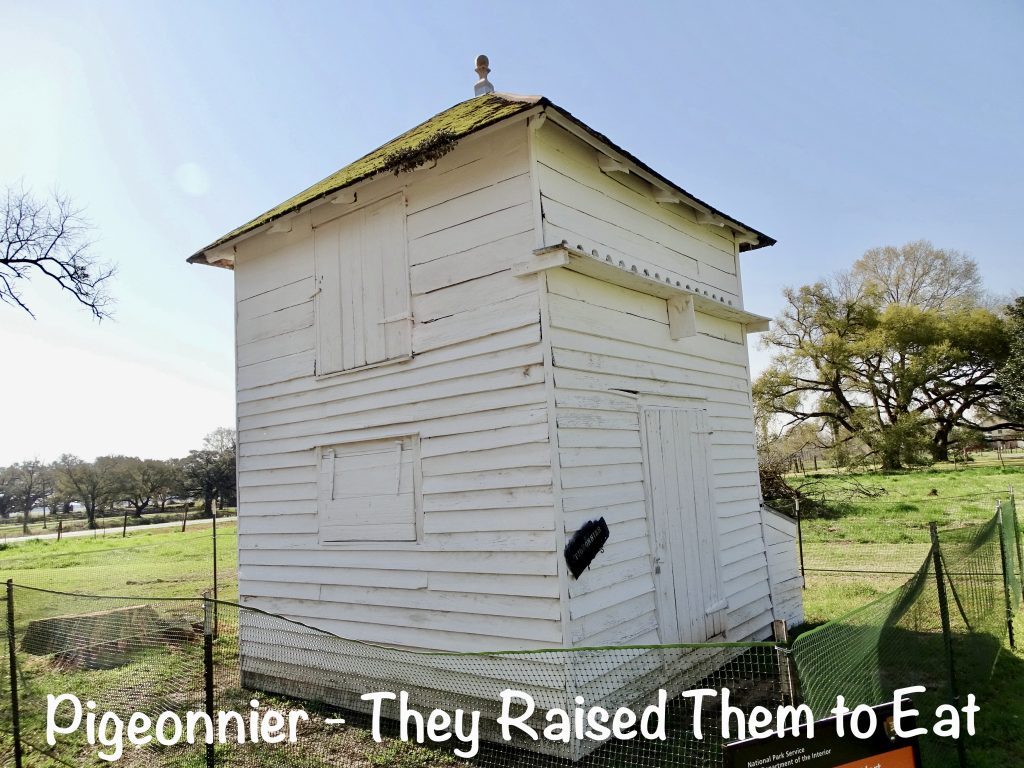
CURIOSITY: While looking at the booklet of local tourist locations, we found something called Gator Country. Billed as the largest alligator park in Louisiana, there was quite a bit happening on its seven acres. It struck me as odd, however, that in a place that only advertises gators, reptiles, tortoises, and birds, one of the attractions is a petting zoo. Ummmm…no thank you.
Sunday began with a little writing before I broke out the Blackstone and cooked breakfast…Neese’s spicy sausage, pancakes, and scrambled eggs. Yum! (That sausage is on the list of things I miss from Greensboro. We bought several blocks on our last visit and froze them.) After getting cleaned up, we headed out for our tour for the day, Melrose Plantation. The history of this home starts long before its founding between 1810 and 1815. In the mid-1700s, Marie Therese Coincoin (pronounced qwanqwan), a slave belonging to Louis Juchereau de St. Denis (the founder of Natchitoches) was leased to French merchant Claude Thomas Pierre Metoyer. (Man, they all had a lot of names back then!) That began a 19-year relationship between Coincoin and Metoyer with 10 children as the result. Despite their father being a free merchant, the children were all born of a slave, and therefore slaves. Many would eventually be purchased by Metoyer and freed, including Coincoin, who was given a parcel of land and a yearly allowance. She began raising tobacco and cattle, and harvesting bear grease (tough woman…they don’t give it up without a fight!) and became a leading citizen in a community of free people of color, many of whom were former slaves that owned slaves themselves. In 1796, her son Louis Metoyer was deeded 911 acres split by the Cane River in a land grant. That parcel would eventually become Melrose Plantation. The property passed through several hands in the years following and managed to survive nearby Civil War battles. At one point Fanny Hertzog, whose brothers owned the property, established the Freedmen school, providing education to former slaves, most of whom were still working as tenant farmers or sharecroppers. By 1918, the property, then called Melrose Plantation, was a retreat for artists as well as an agricultural empire run by Cammie Henry. It hosted a variety of creative folks, including William Faulkner. The celebrated artist Clementine Hunter, who worked as a cook at the plantation, first picked up a brush after finding paints discarded by a visitor there. Artists were free to come and go as they pleased, as long as they had dinner with their benefactor every night. One long-term guest was actually an imposter: Francis Mignon, a Frenchman from Paris, showed up at Melrose for a 6-week visit and ended up staying 32 years. It was later discovered that he was actually Frank Mineah from Courtland, New York. During his time there, he wrote many journals and elaborate stories about the place. Like his life, though, no one is really sure what part is real and what is fiction.
We had a good look around and took the tour, but our guide was a fast talker and occasionally hard to follow. When talking about anything to do with slavery, she was very apologetic, as if it all happened this morning and she was involved. It may have been her normal spiel, but she really just seemed to be thrown off by having a black couple in the group. Some of her information was not quite accurate, either: She talked about Jim Crow laws being a strictly southern thing, and they were enacted in large number in the south just after the Civil War, for sure. However, many such laws against non-white persons were on the books in the majority of states back then, most dealing with voting, segregation, and interracial marriage. She also talked about slavery beginning in more recent times…it’s been around in one form or another since the first documented civilizations, is in the Bible, and sadly, still exists today in the form of human trafficking. Both Roman and Spartan societies had an abundance of slaves in a large variety of roles. It is estimated that 15% of the Roman population and up to 85% of Spartan citizens were slaves, mostly acquired through military conquest. She said that the chattel slavery system was stupid and didn’t work economically. Was it stupid? No. It was legal at the time and still practiced in many areas of the world, particularly those that produced cotton and sugar cane. (In Washington, D.C. in 1800, one quarter of the entire population were slaves.) Looking through the lens of that time and not applying current standards to past actions, it was the best way available (without our modern farm equipment) to produce the amount of cotton or sugar that the rest of the world, including large mills in the northern states, demanded. Were that not the case, small farm and plantation owners of all races would not have wasted their time and money with it. Did it work economically? We were standing in the middle of a cotton plantation that was very successful for well over 100 years. All that said, was it wrong? Yes. Basic human rights and decency say that people shouldn’t own other people.
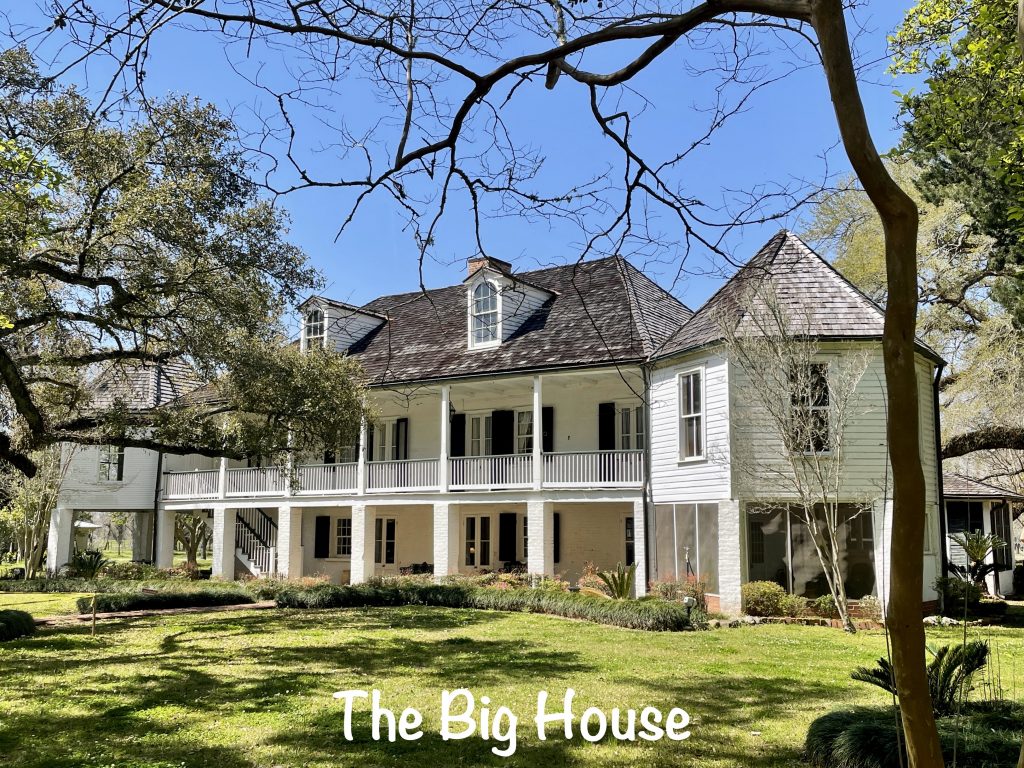
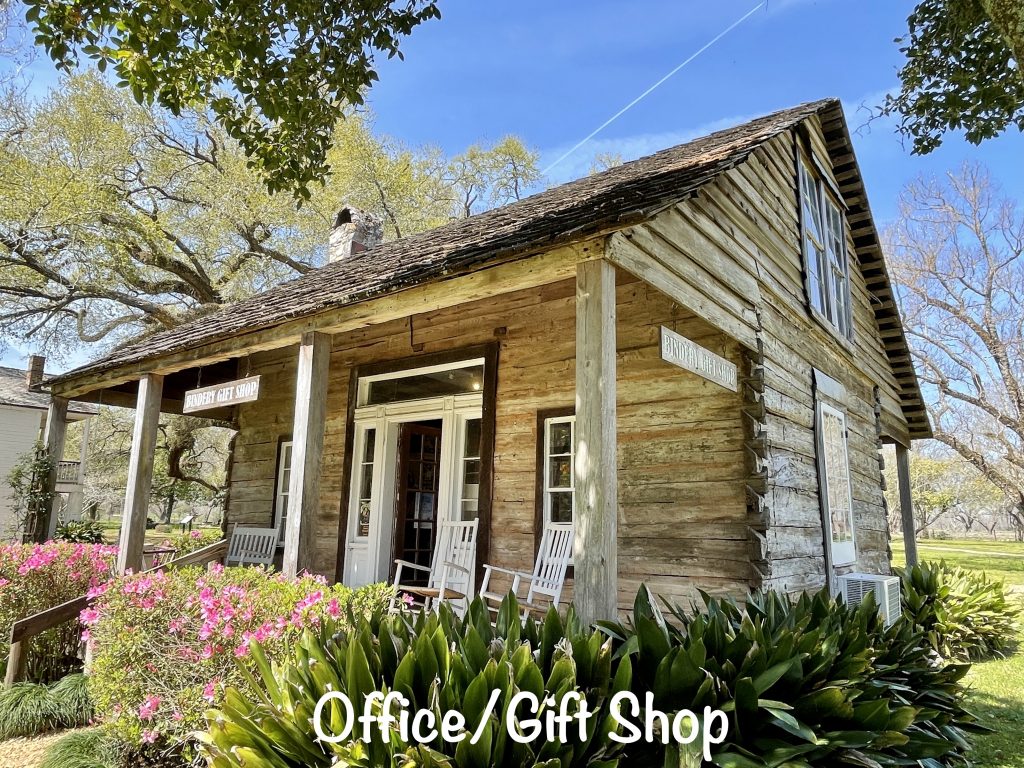
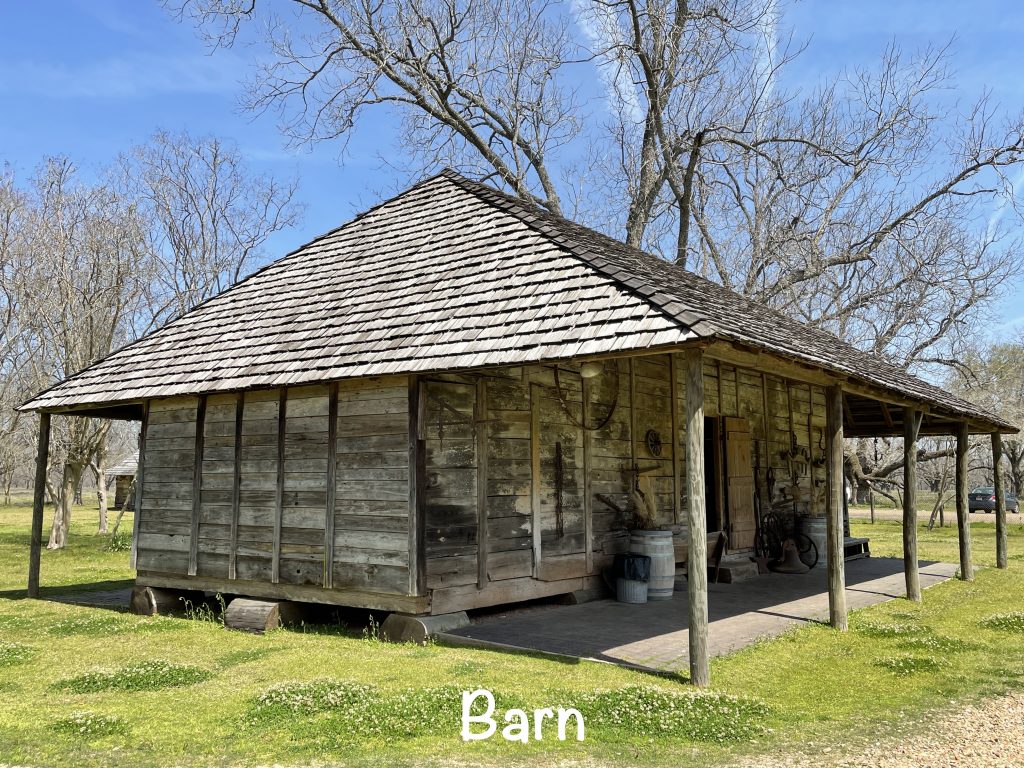
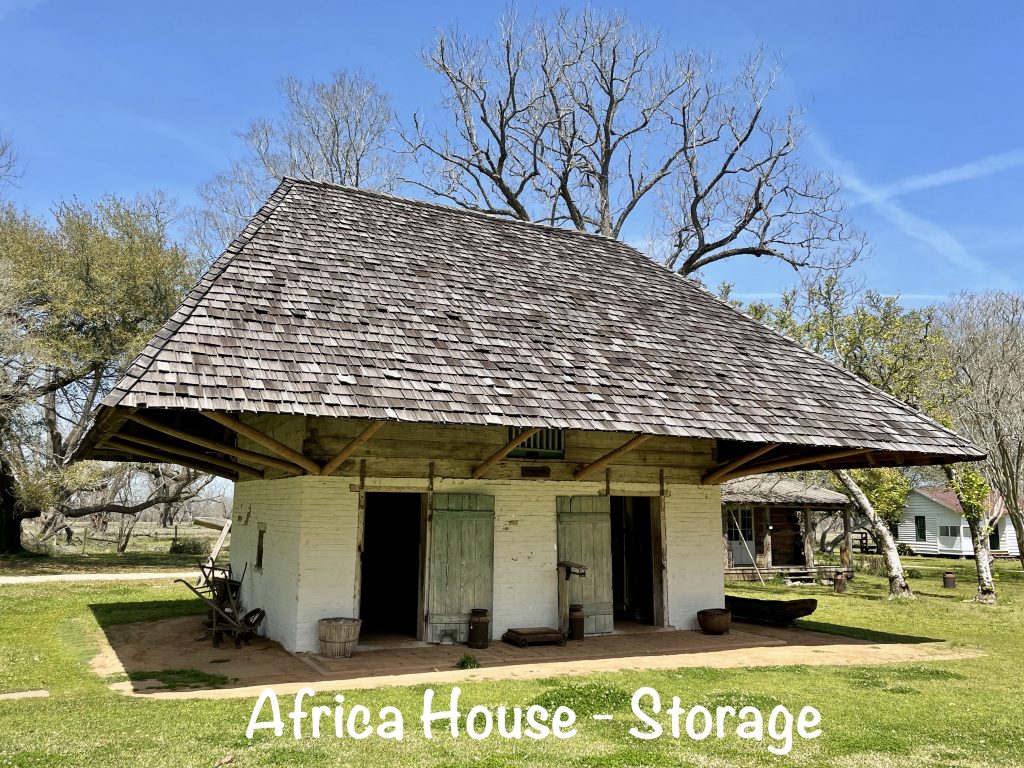
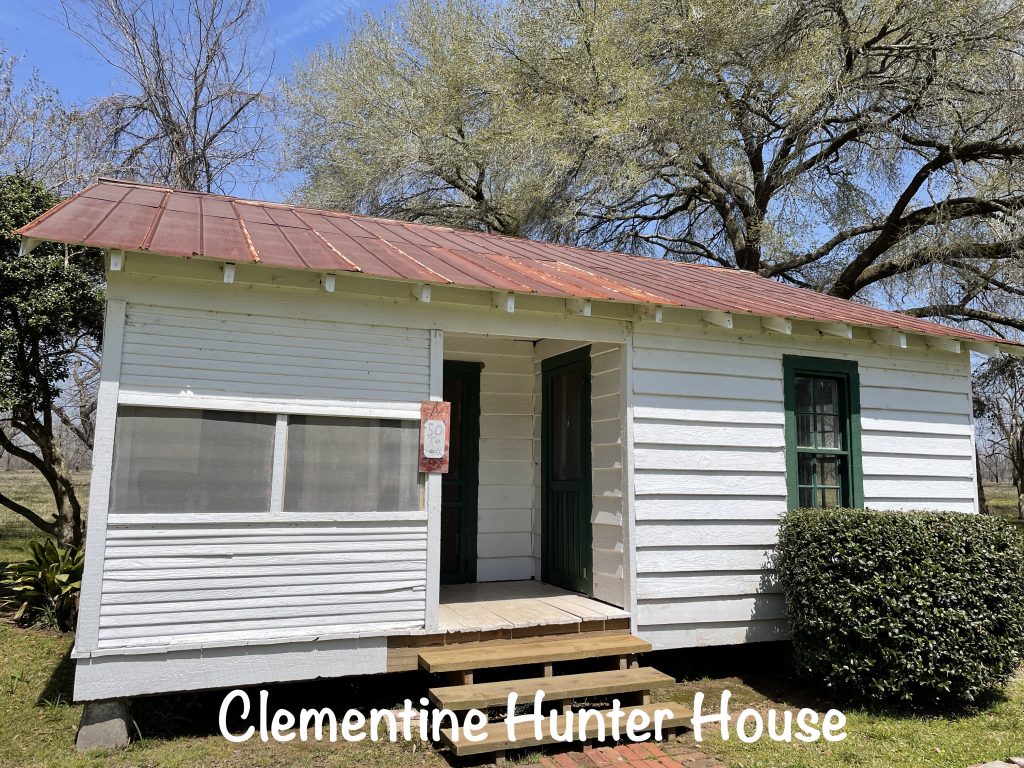
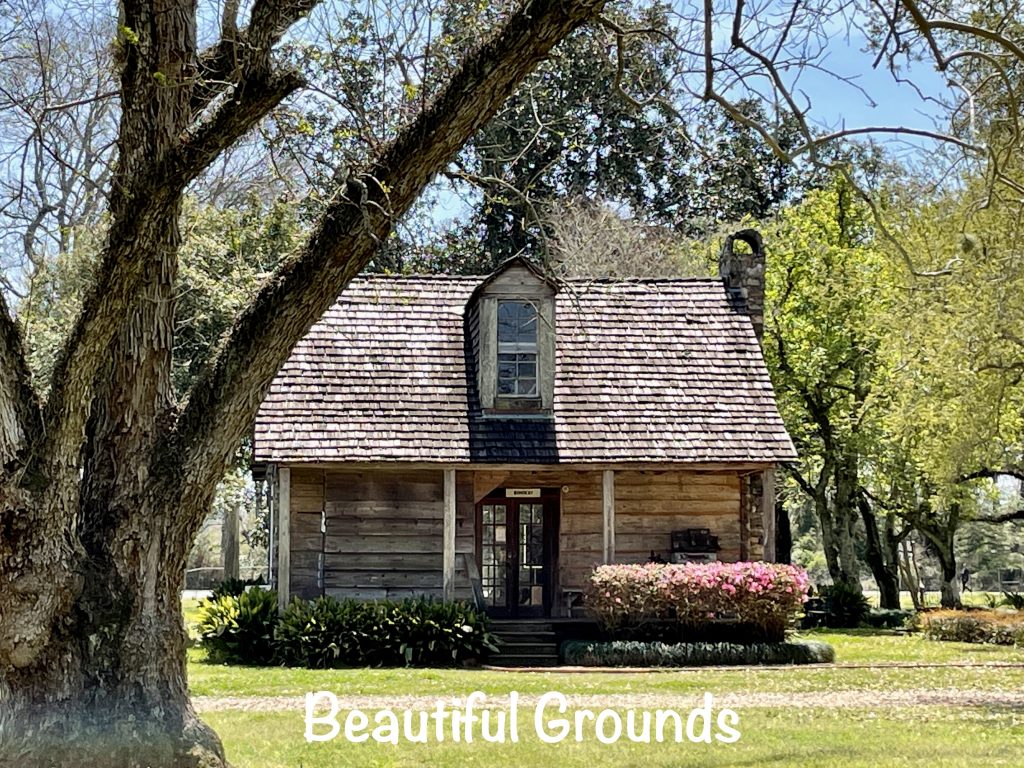
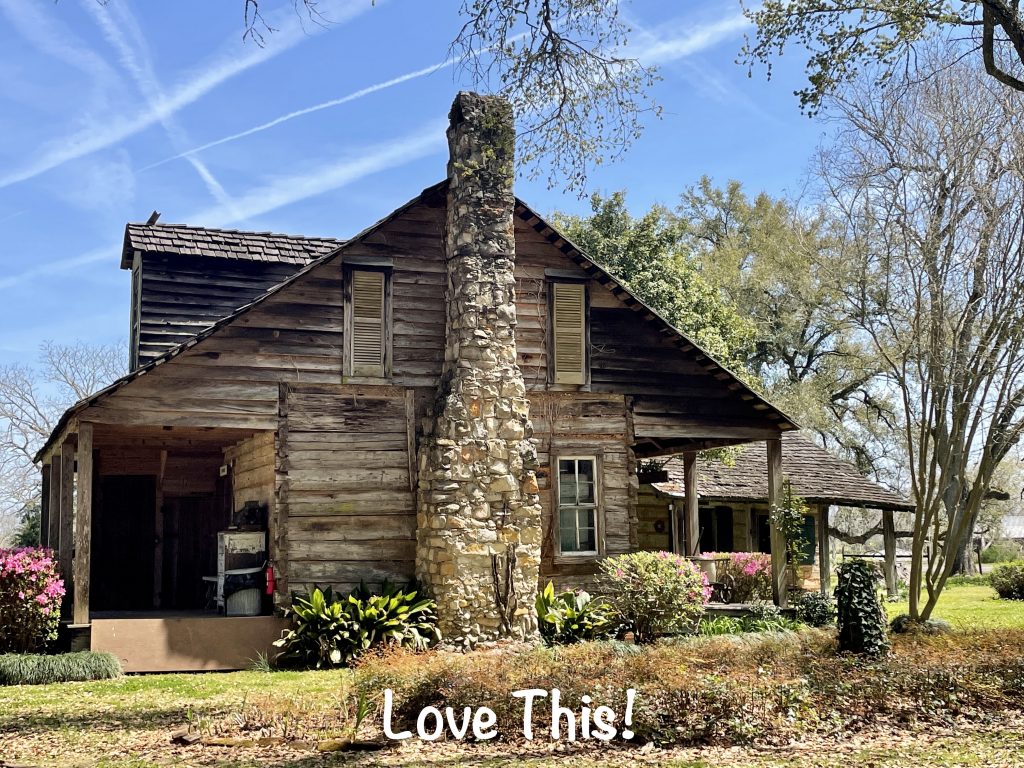
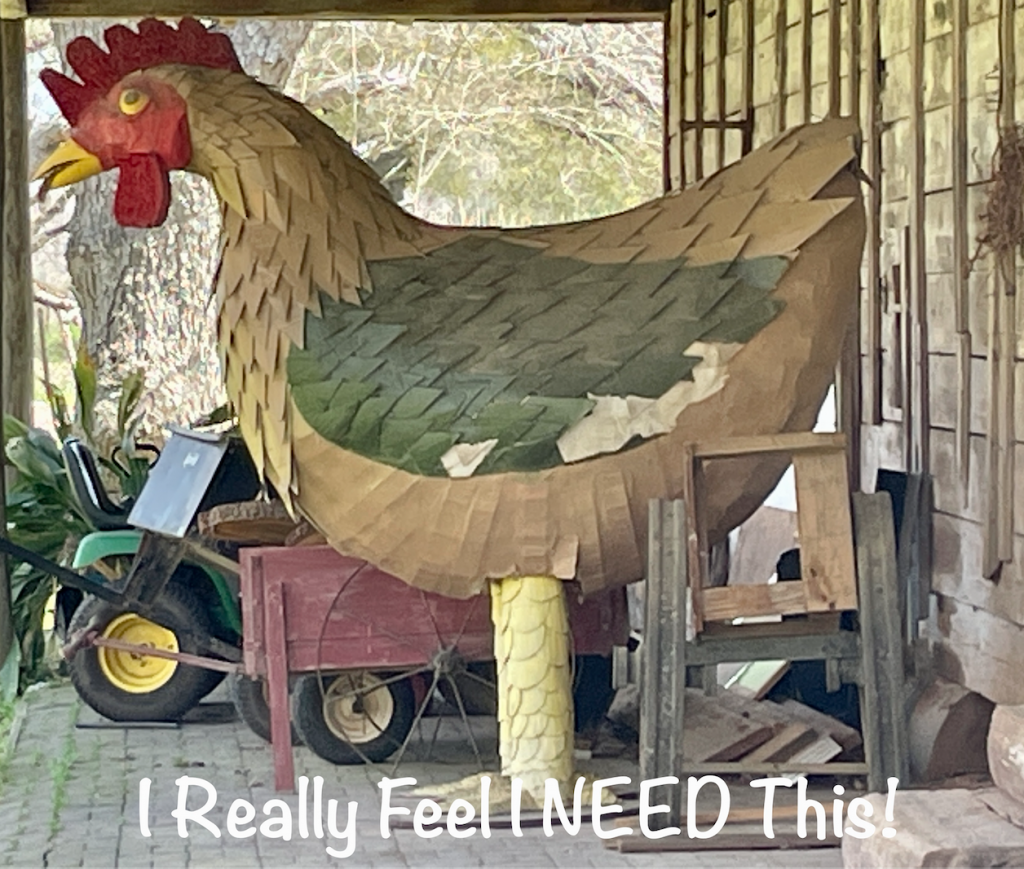
The other couple in our tour was from Chicago, and we struck up a conversation around jobs. She is an architect, and I believe he works with education for the incarcerated. I asked if Chicago was as bad now as what we see on the news, and she said “worse”. Wow! Then she started telling me about her son. Last year he was heading out in the morning and stopped to get some crackers at a gas station, parking his Nissan Altima on the street. Back in the car, he was looking for music on his phone when a would-be carjacker ran up shouting at him. He hit the gas, and the guy shot him in the head. The bullet went in at the temple and out the opposite cheek; by all rights, he should have died, but God had other ideas. I just can’t imagine getting that call as a Mom. Except for bad vision in his left eye, he has recovered. It took a while, but the police caught the guy, too. With news reporting all of the turmoil in Chicago around race issues, Mom was quick to point out that, like this attack on her son, the problems in Chicago have nothing to do with a race war. Mr. Kornegay is now running for State Representative “because Chicago and Illinois need people to feel safe”. He seemed a good, solid candidate to me. Before we left, and honestly we stood there and talked for at least 20 minutes, he said, “This moment is powerful.” The four of us, north and south, black and white, standing on a plantation in Louisiana enjoying each other’s company. In the current climate, he wasn’t wrong. If you are from Illinois District 7, check out Eddie Kornegay, Jr.
When we finally left, it was time for lunch. We could have gone into Natchitoches, but decided to run right back down the road to Cane River Commissary. It was so good the day before! This time it was hotter out, so we sat indoors. As we walked in, we noticed two older ladies talking to the waitress about day drinking. You go, girls! (Honestly, a couple of drinks in the afternoon simply force me to take a nap!) We grabbed a booth, and MW ordered two shots of Jim Beam so we could have a nice toast to my Uncle. (Man, that burns going down!) We both ordered burgers and reminisced about recent visits with Wyatt and what a tough guy he was. When we were about half done with our lunch, one of the ladies we saw coming in came over. Now you are going to have to hear her in your head…Scarlet O’Hara, but 65 years old and more than a little tipsy with extra emphasis on the words in caps. She introduced herself as Genevieve (a perfect name as it rolls off of a Southern Belle’s tongue) and said, “I just HAVE to ask you WHAT you are drinking.” We told her we were toasting my Uncle and she said, “Well THAT makes sense. I did NOT have YOU pegged as a WHISKEY girl. You are DEFINITELY more of a WATERmelon margarita or Amaretto girl!” She was a hoot! I told her she wasn’t wrong, but that my Uncle had died so we wanted to honor him. She went on to say that her husband had recently “passed”, too. When I said how sorry I was, she said, “I am TOO, because I actually LIKED him. You know I LOVED him, but I really LIKED him!” If those two ladies weren’t heading out the door, I’d have moved to their table to hang and had MW pick me up later. They were awesome!
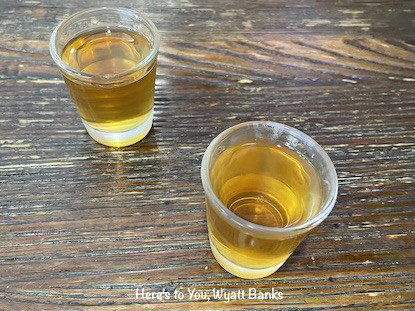
Natchitoches Pecan Orchard RV Park is pretty awesome. It is, indeed, spread out in a large pecan orchard, which would be wonderfully shady in the heat of a Louisiana summer. Located a few miles south of town, it is just east of I-49, so you do hear a little bit of highway noise. But you also hear the bawl of cows and the whinny of miniature horses in the surrounding fields. Amenities include a super clean bathhouse, laundry, swimming pool, ice machine, and propane fill station. They also have a putt-putt golf course and are installing in batting cages! They offer 76 gravel, 50-amp, full-hookup sites, most of which are pull-through, with paved picnic areas. It is a really nice park, and we would definitely go back. (Honestly, I’d go back just because of the longhorns!) For this stay in March 2022, we paid $206.01 for 4 nights.
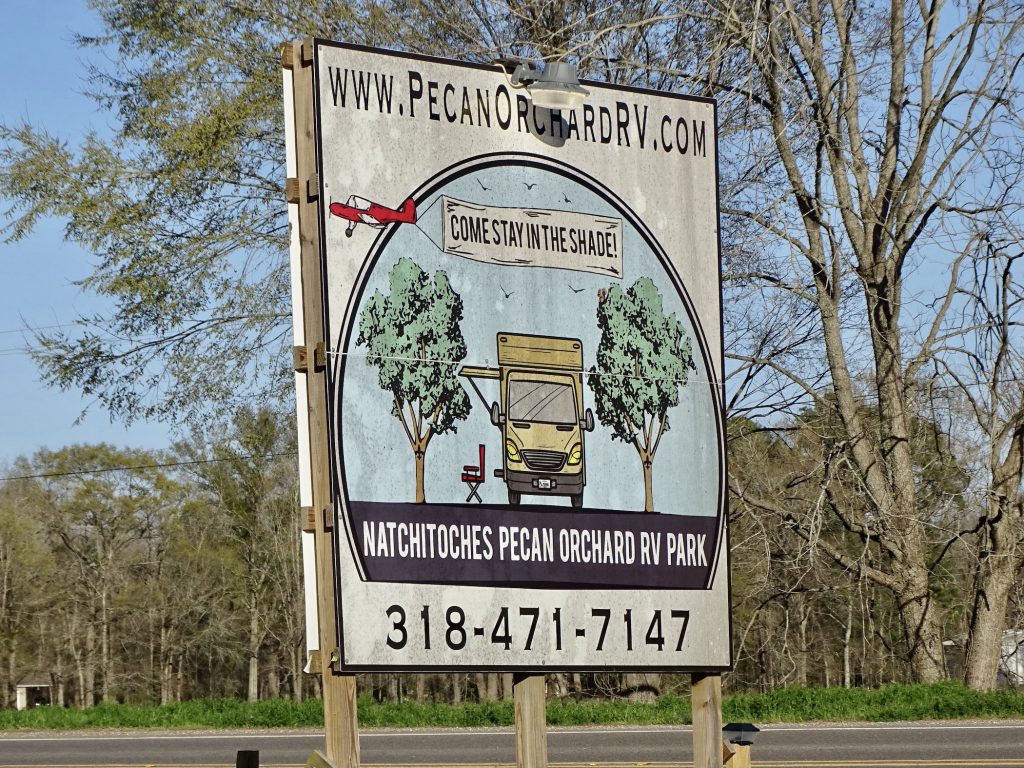
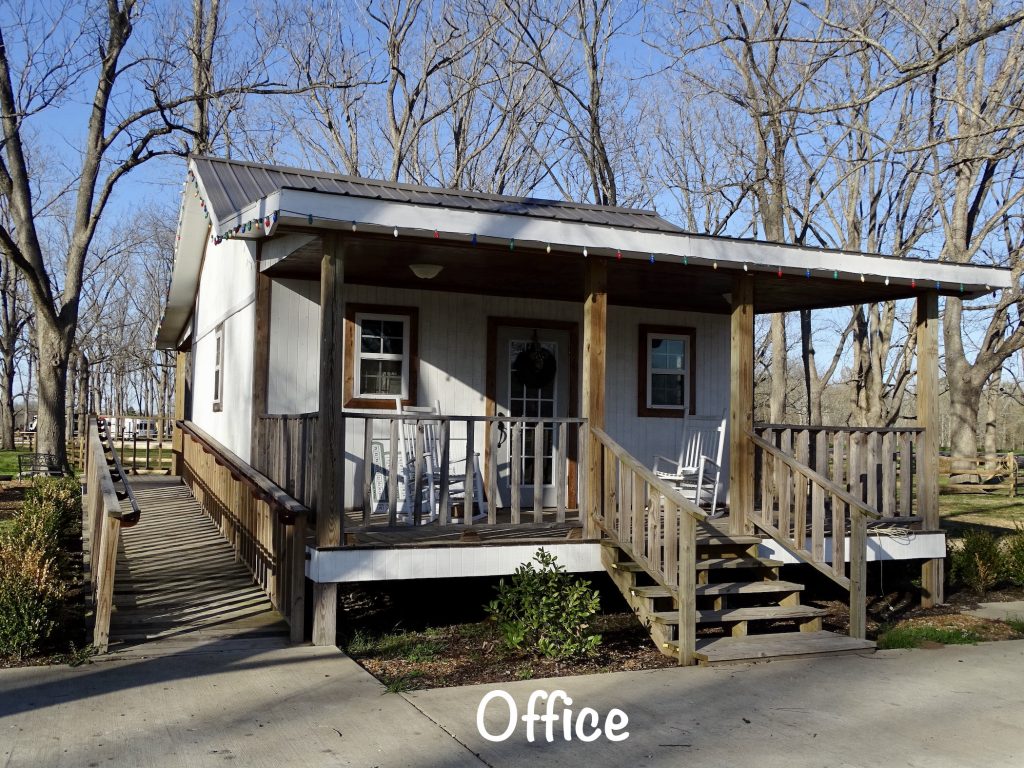
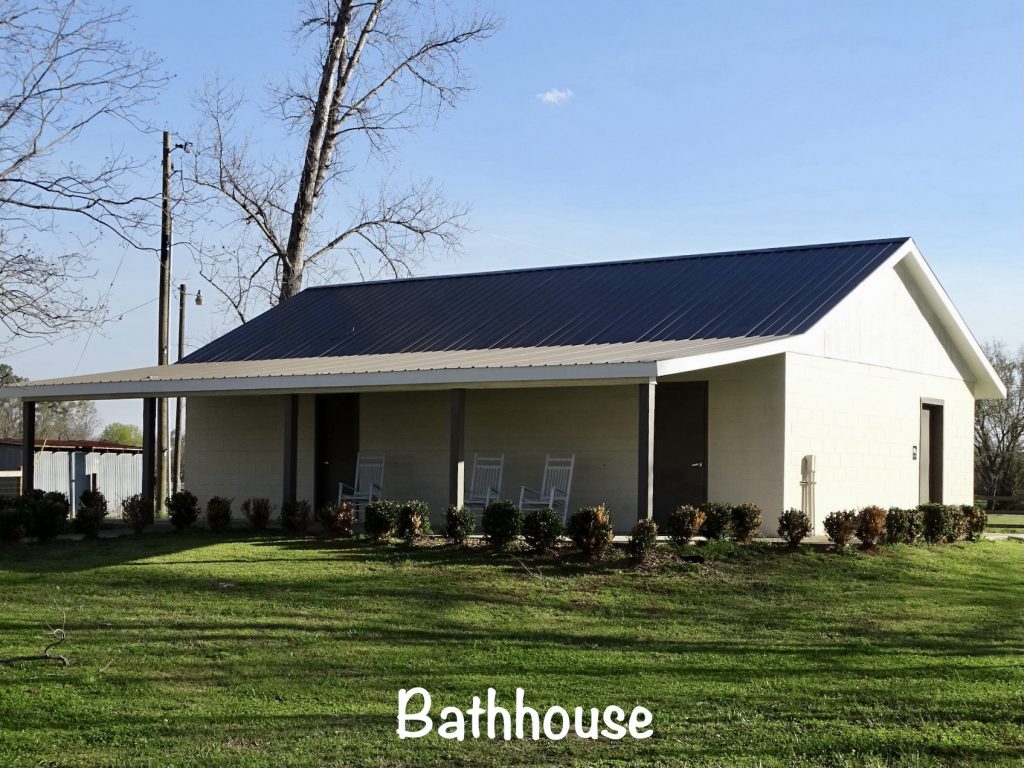
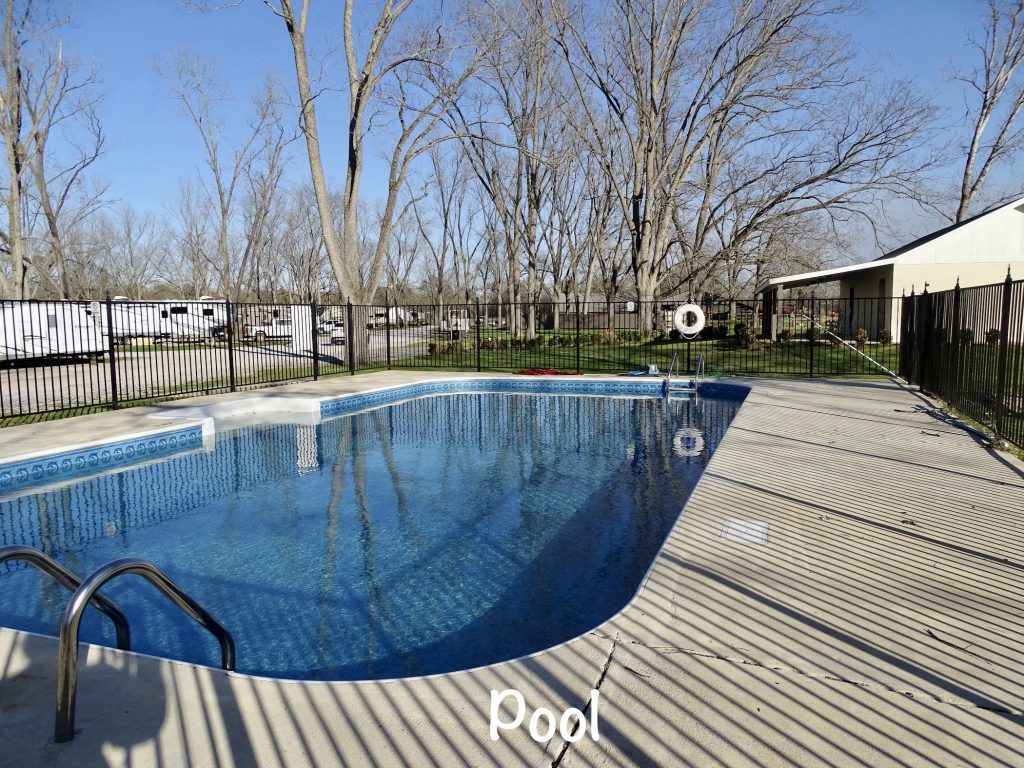
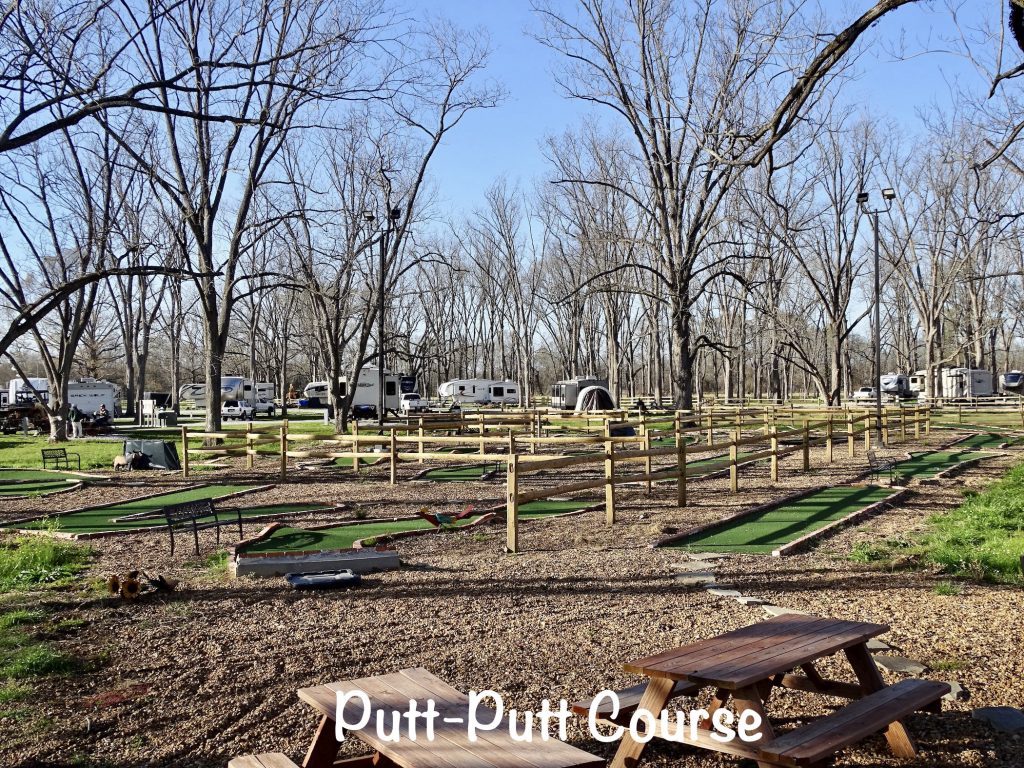
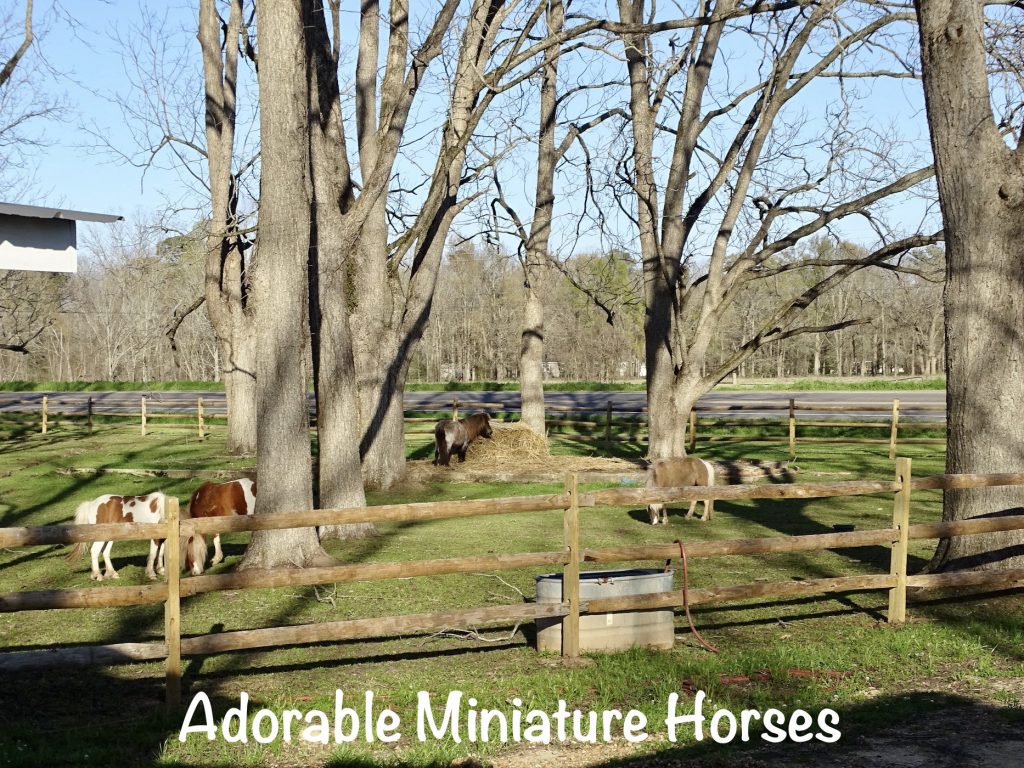
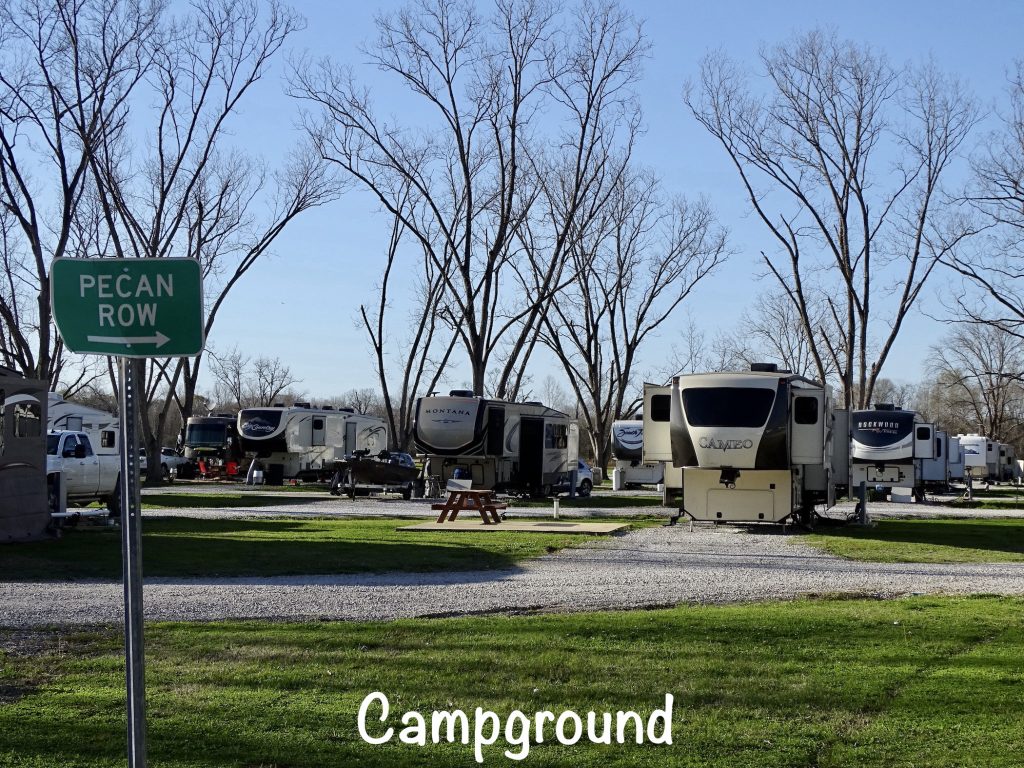
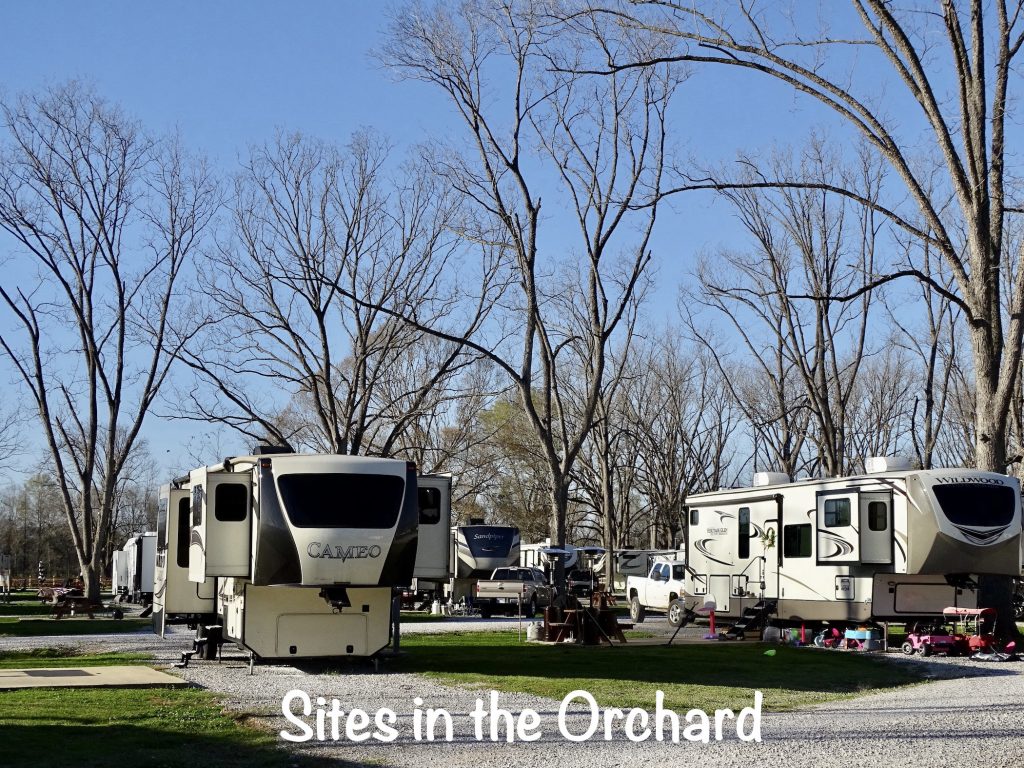
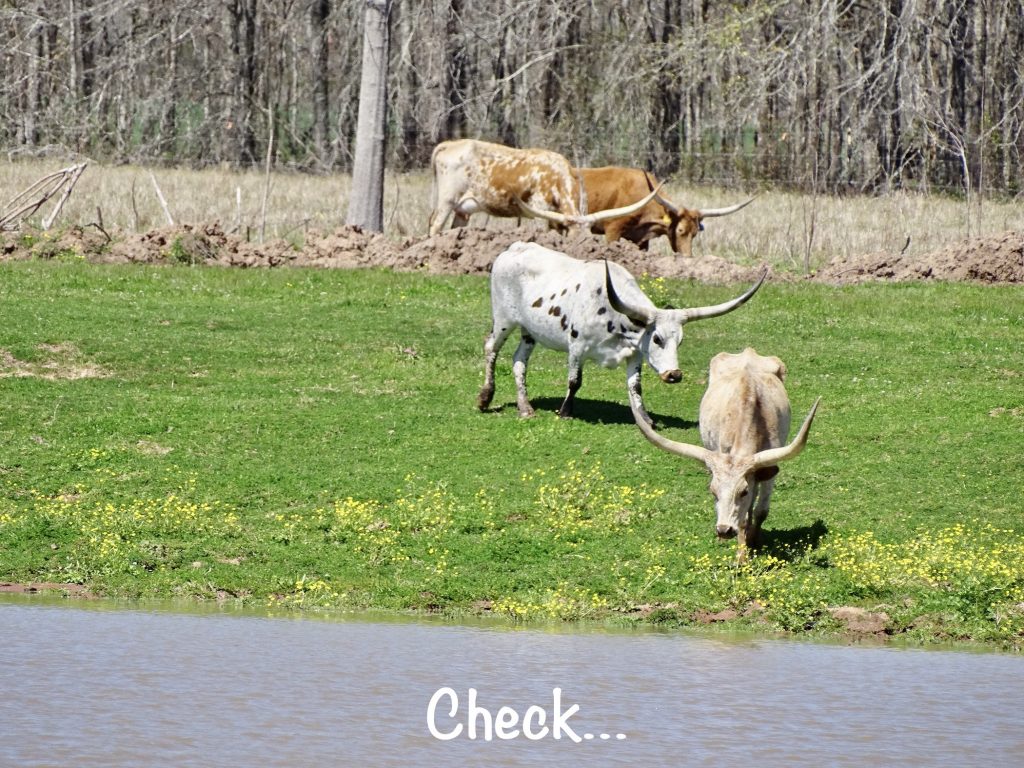
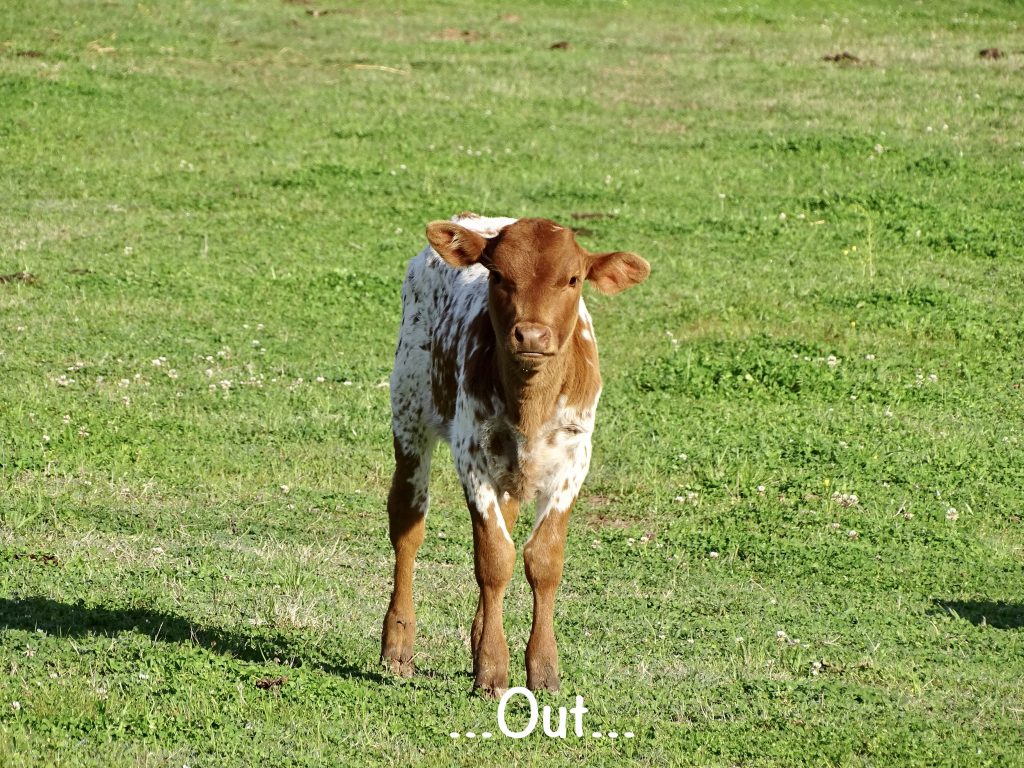
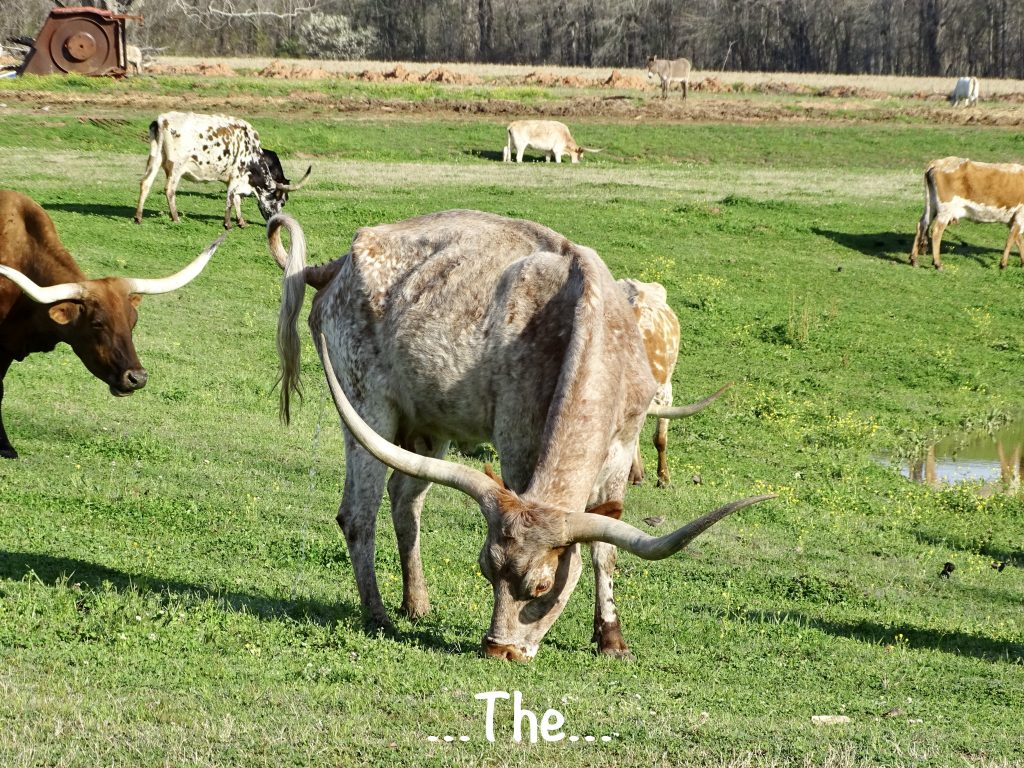

Monday, March 28, was a great driving day. We were up early and on the road around 8 AM, heading west on LA-6. Just past Many, Louisiana, traffic was being directed off of our route and down a gravel road. Ugh! There were not many options for crossing the Sabine, so we had to loop back into Many, then meander around on US-171 and LA-191 back over to LA-6. It ended up being a pretty detour, though, and BONUS, a bald eagle flew over the road in front of us. Who wouldn’t enjoy that?! After crossing into the great state of Texas, we continued west through Milam and Norwood over to Lufkin. There we popped into H-E-B for some corned beef for a new recipe from the Florida Joneses and picked up an order from Big Lots, too. I had been trying to find someplace for lunch with adequate parking, but was coming up empty. Near Big Lots, we saw Be Blessed BBQ in a plaza…easy parking AND brisket! Holy smokes, it was good. We both went for brisket sandwiches, and I added potato salad. We also enjoyed talking to owners Jeremiah Moss and Flint Thompson (also a country music singer) and the grill master, too, although I can’t remember his name. I do remember that he was from Albany, Georgia, though.
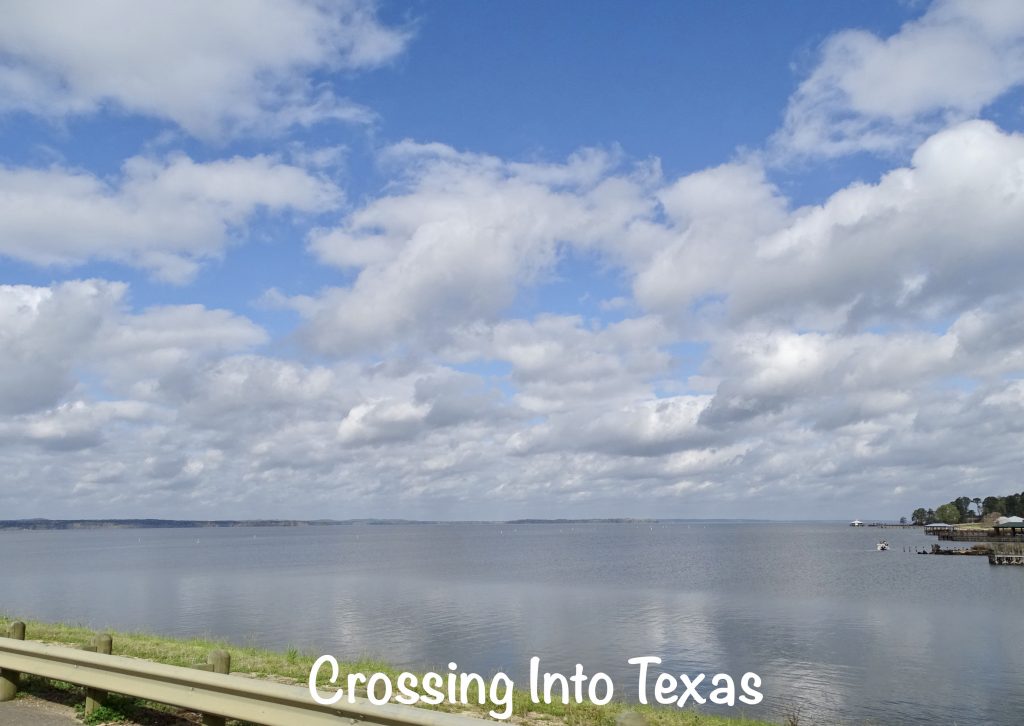
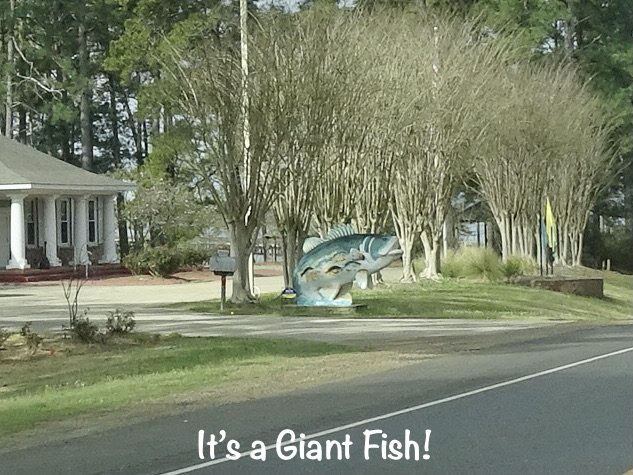

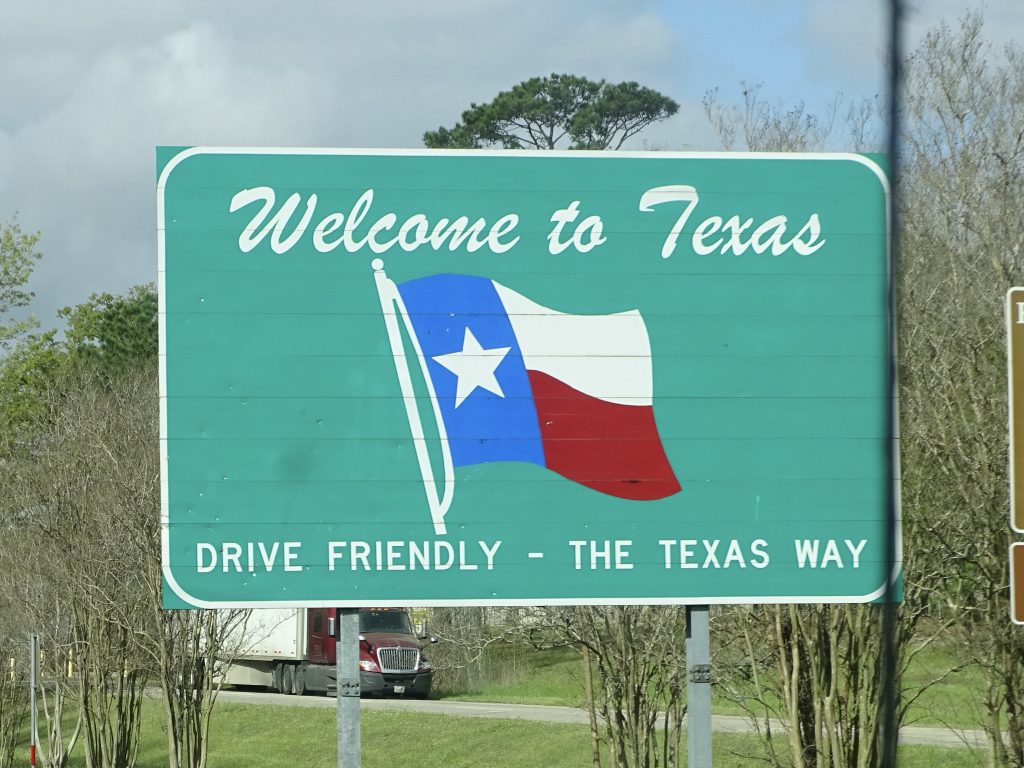
Back in the truck, we headed southwest on TX-94 to Trinity, then TX-19 into Huntsville (the second one of this trip, and named after the other one in Alabama) and Huntsville State Park. Then came the hard part…getting Petunia level on this frickin’ ridiculous site. I raised the slide side as high as I am equipped to, about 7 inches, and it was STILL low a little more than an inch. Then the front required all of the blocks we have just to get it high enough to level out. This was honestly the most off-level sight we’ve ever set up on.


Tuesday started with a walk around our side of the park. It was already a bit warm (highs would go to the mid-80s) and the humidity had gone up slightly, but there was a pretty constant breeze which made it not too bad.
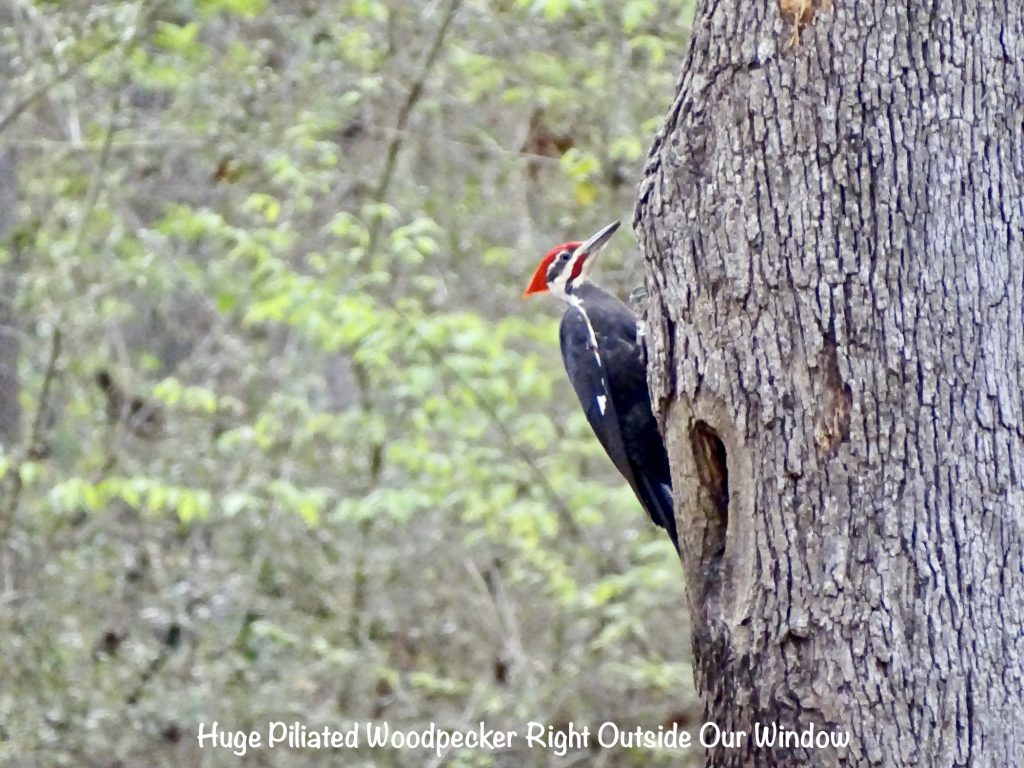
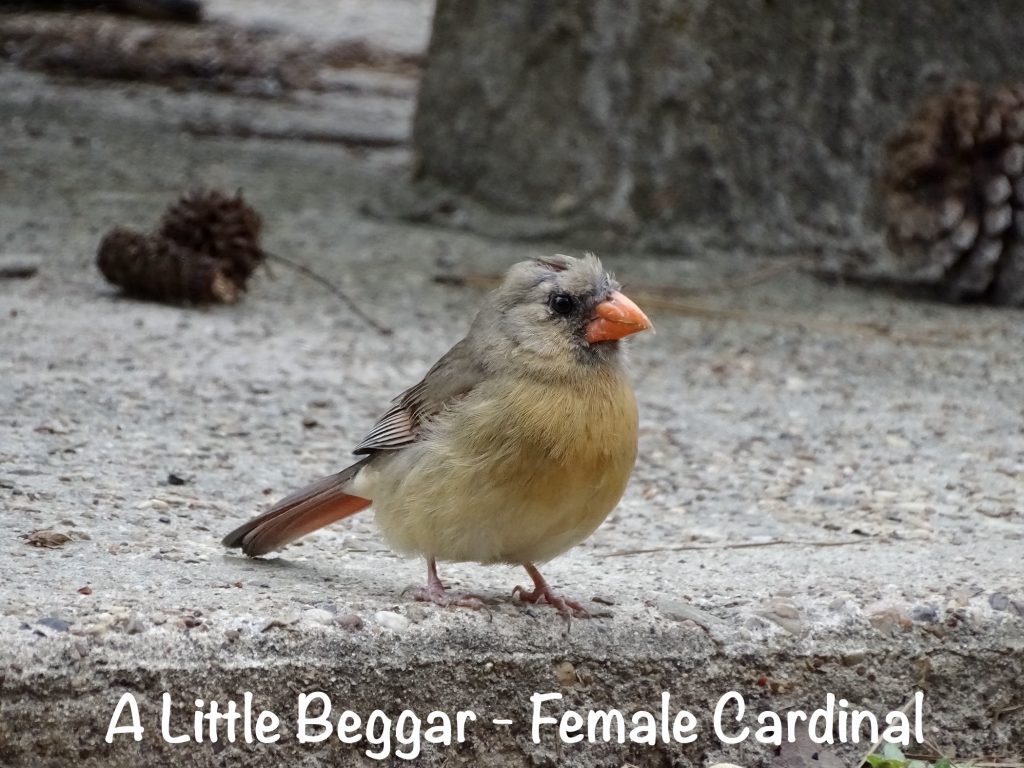
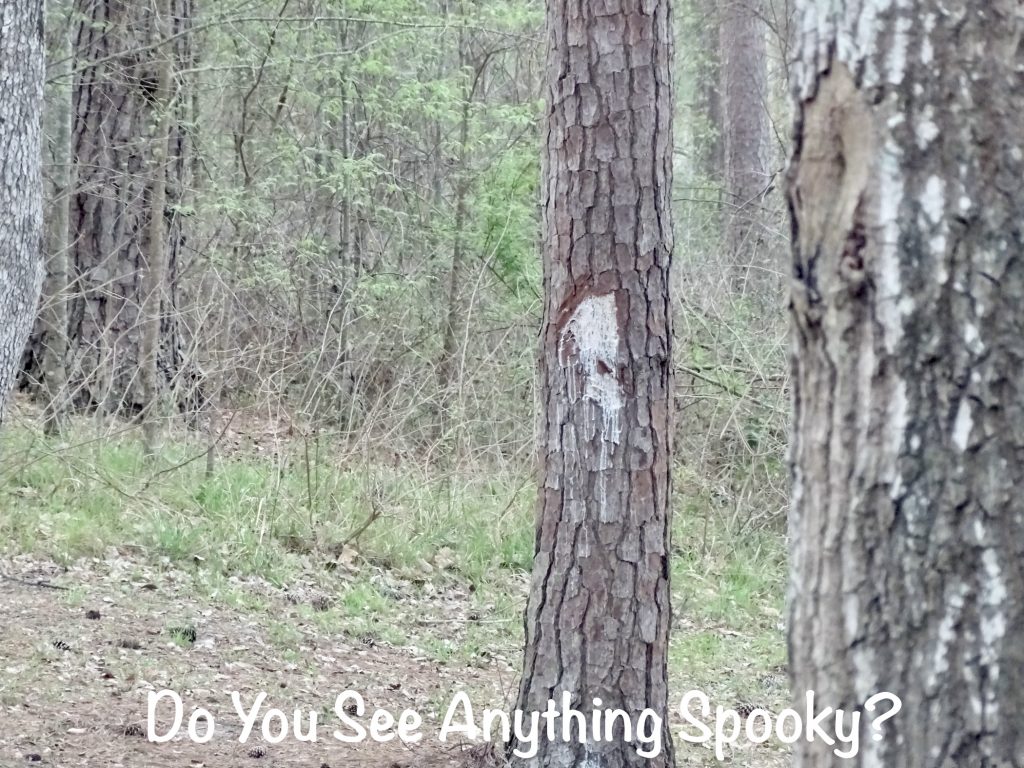
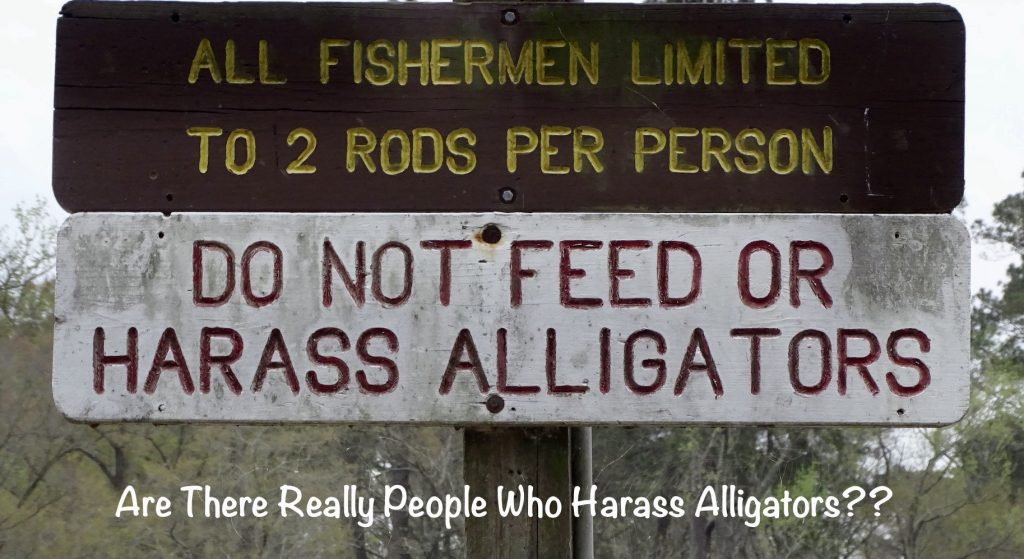
UNRELATED SIDEBAR: I get a daily news feed that has a “This Day in History” section. On Tuesday morning, one of the notations was “US President John Tyler born – and he still has one living grandson (1790.)” WHAT??!! He was President from 1841 to 1845. Read that again…100 years BEFORE PEARL HARBOR!!! He knew THOMAS JEFFERSON!!! I had to check that out. It turns out that President Tyler, who died in 1862, had 15 children, and was 63 years old when his son, Lyon Gardiner Tyler, was born. Mr. Tyler, the son, had children well into his 70s, and today his son Harrison is still alive and kicking at 93 years old. Wow! Imagine telling someone your grandfather was president almost 181 years ago!!
Later in the morning, we headed out for a day of Houston…Sam Houston, that is. Well, first it was a salad for lunch at McAlister’s Deli, then on to Sam. Our first attraction was the Sam Houston Memorial Museum, which is a part of and operated by Sam Houston State University in Huntsville, Texas. The museum is a pretty comprehensive view of the life of this interesting Texas hero.
Most of us know about Sam Houston’s role in the war for Texas independence from Mexico…his stamp is all over the state. But how many know about his life before that? It was pretty eventful, and I had no idea! Born in the Shenandoah Valley of Virginia in 1793, he lost his father, Samuel Houston, when he was 13, and his mother, Elizabeth, moved the family to Maryville, Tennessee. Before he was out of his teens, Sam had become a voracious reader, quit school when they wouldn’t teach him Greek and Latin, was adopted by a band of Cherokee Indians (which would come in handy later), and returned to Maryville to open and teach at a school. Then, when he was 20, he got his first taste of war, enlisting in the Army during the War of 1812. He fought under General Andrew Jackson at the Battle of Horseshoe Bend, where he was wounded not once or twice, but three times. (MW and I went to Horseshoe Bend. You can read about that here.) General Andrew Jackson was impressed by Houston’s heroism and, after the war, assigned him to his staff as an agent to the Cherokees. Four years later, still only 25 years old, Houston resigned from the Army, disillusioned . Returning to Tennessee, he studied law and opened a practice in Lebanon, then discovered state politics. After serving as district attorney, major general of the state militia, Congressman for two terms, and Governor of Tennessee at the age of 34. Two years later his life fell apart when his wife of 3 months left without any explanation. Devastated, he resigned his office. In deep despair, he retreated back to his Cherokee family (in Oklahoma by then) and into a bottle. While there, he took an Indian wife and served as the Cherokee nation ambassador to the United States. It was on a trip in that capacity that he was charged by Ohio Congressman William Stanbery with corruption in Indian trading contracts. Running into Stanbery on the street, Houston confronted him and the Congressman drew a pistol. It misfired, and Sam proceeded to beat Stanbery with a cane. The trial gave Houston a national stage, and put him back on top, politically. A delighted President Jackson promptly sent him to Texas to report on Indian affairs. Shortly thereafter, he officially became a Texian. He was 40 years old.
The museum is laid out in thirds, showing Houston’s life before Texas, the fight for Texas independence, and the final third, which he spent promoting national unity. I won’t spend time on Sam’s leadership in Texas, the Alamo, Goliad, or the Battle of San Jacinto. That’s the part most known, although if you aren’t up to speed there, I highly recommend the miniseries “Texas Rising” to give you an entertaining overview. I did learn some interesting factoids, though: 1) He was adopted by Chief Oolooteka and given the Cherokee name Co-lon-neh, which means the Raven. 2) He wore a gold band with the word “Honor” inscribed inside, a gift from his mother when he left for the War of 1812. She said she would rather have all her sons fill one honorable grave than for one to turn his back to save his life. 3) He never spoke of and no one ever knew why his first wife left. 4) Houston’s third wife, Margaret Houston, whom he met on a horse buying trip to Alabama after the war, brought her slaves with her to Texas. Eliza Revel remained with the family after the Civil War. Joshua took the last name of Houston and remained in Huntsville, later serving as an Alderman and County Commissioner. Despite the law of the day, they were taught to read and write. Eliza is buried in the family cemetery in Independence, Texas, with Margaret Houston. 5) The original Texas flag was a blue field with one gold star in the middle, a symbol of independence. Since then, every Texas flag has had a single star. Hence, the lone star state. 6) Houston was elected the first President of the Republic of Texas with 80% of the vote. He was also elected third President after Mirabeau Lamar served as second. 7) Influenced by his wife, Houston was baptized in a creek in 1854 at the age of 61. Afterwards, the minister said his sins had been washed away. Houston’s response: “If that be the case, God help the fish down below!” 8) Sam wrote regular love letters to Margaret when he was away. 9) The Houstons had eight children. 10) By his death, Houston had fallen out of favor politically in Texas. President Andrew Jackson had previously said “The world will take care of Houston’s fame.” He was right. 11) Sam’s mother’s maiden name was Paxton, and Bill Paxton did an excellent job of playing Sam Houston in the above-referenced miniseries. In fact, according to FamousKin.com, Bill Paxton is the 2nd cousin 4 times removed of Sam Houston.
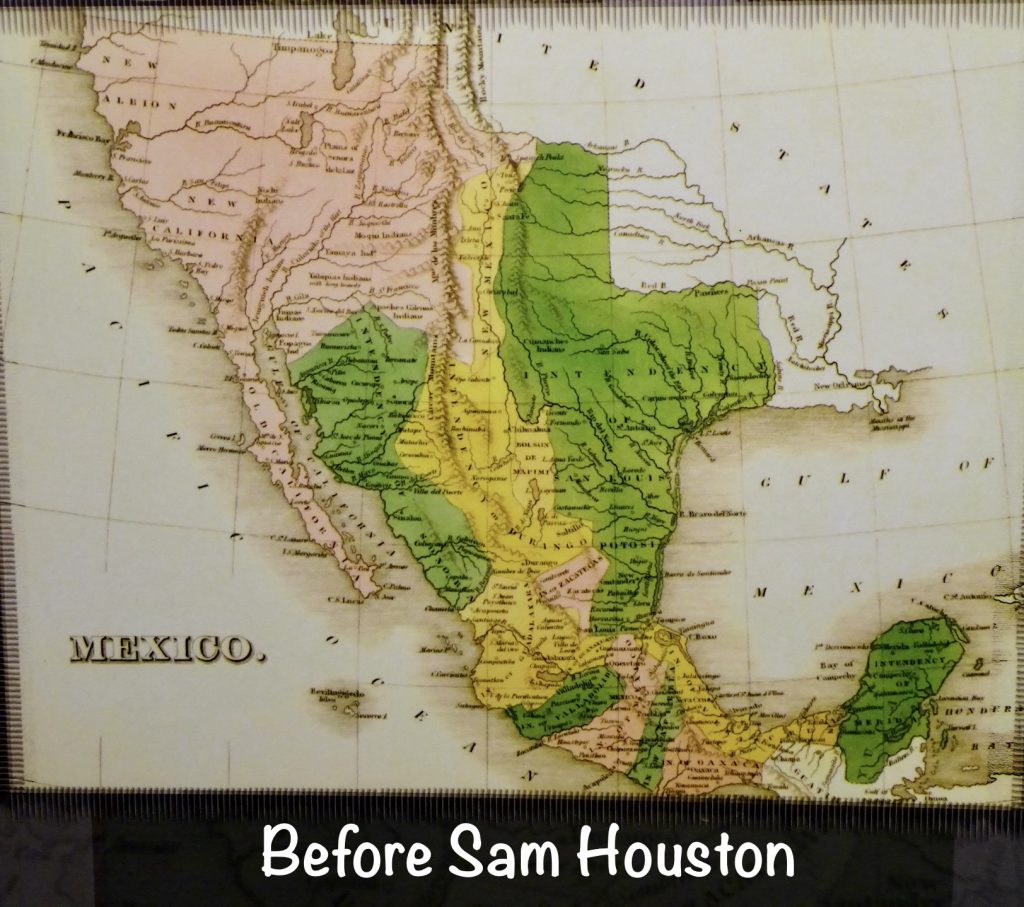
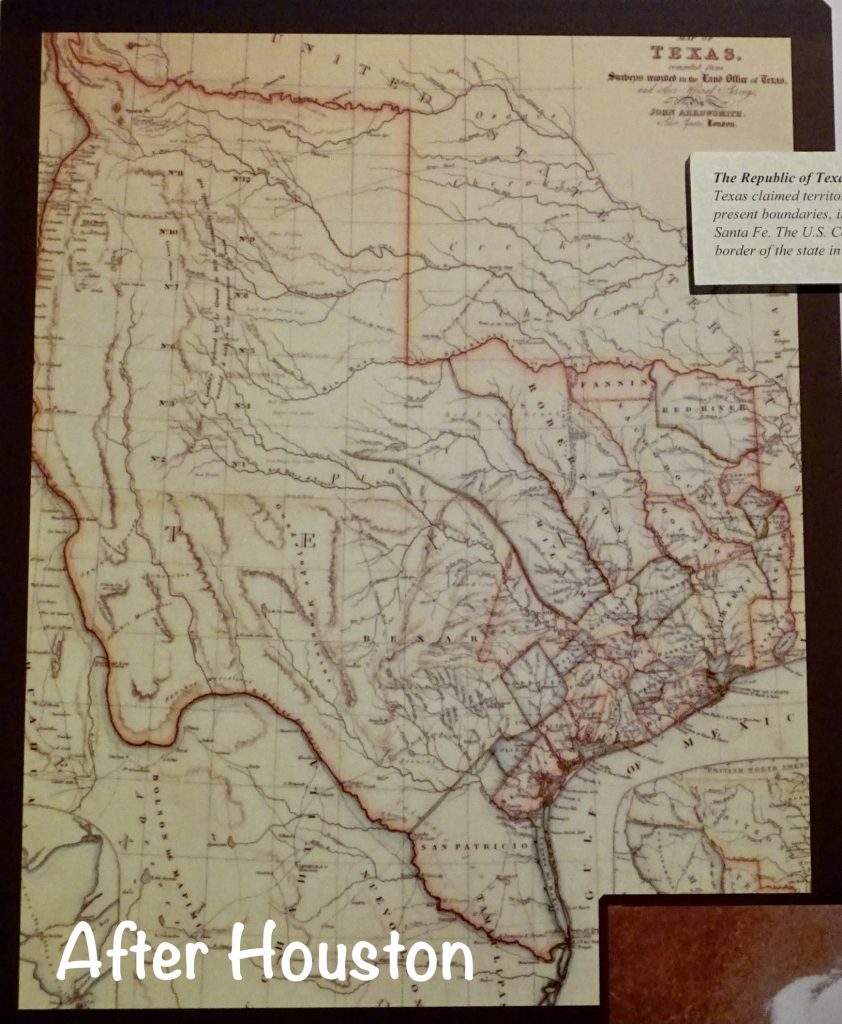
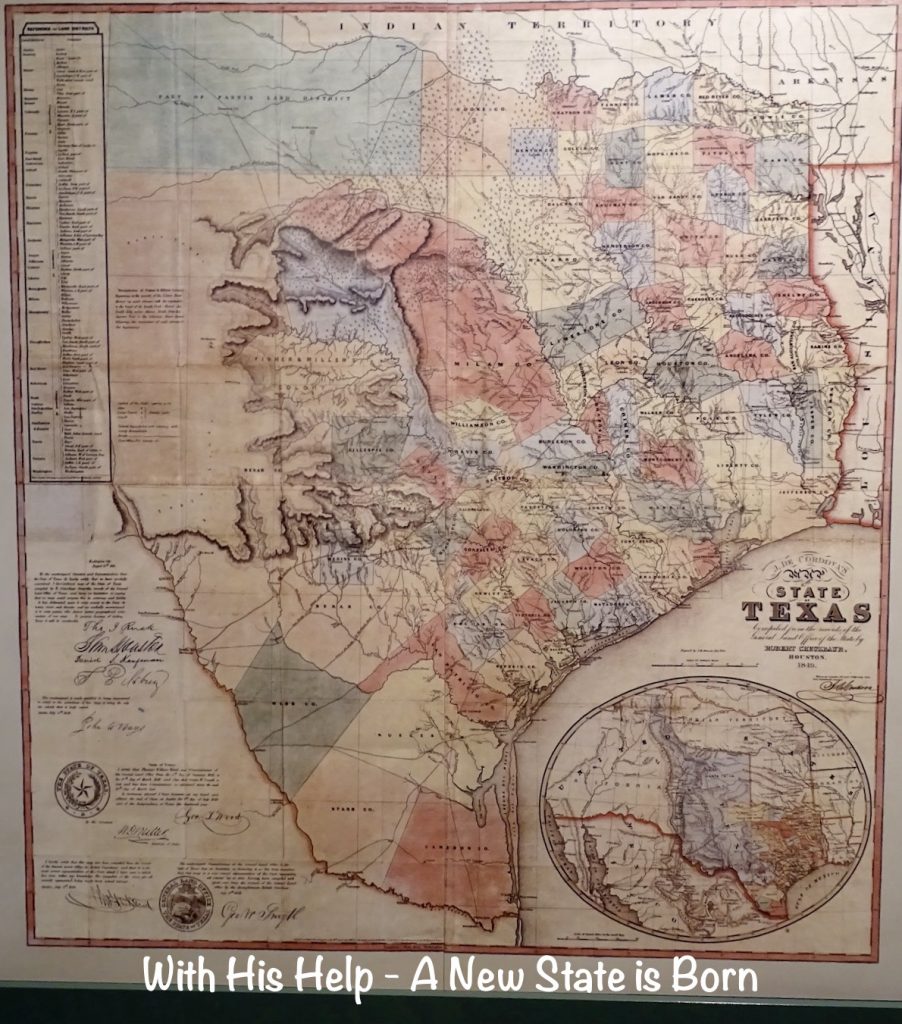
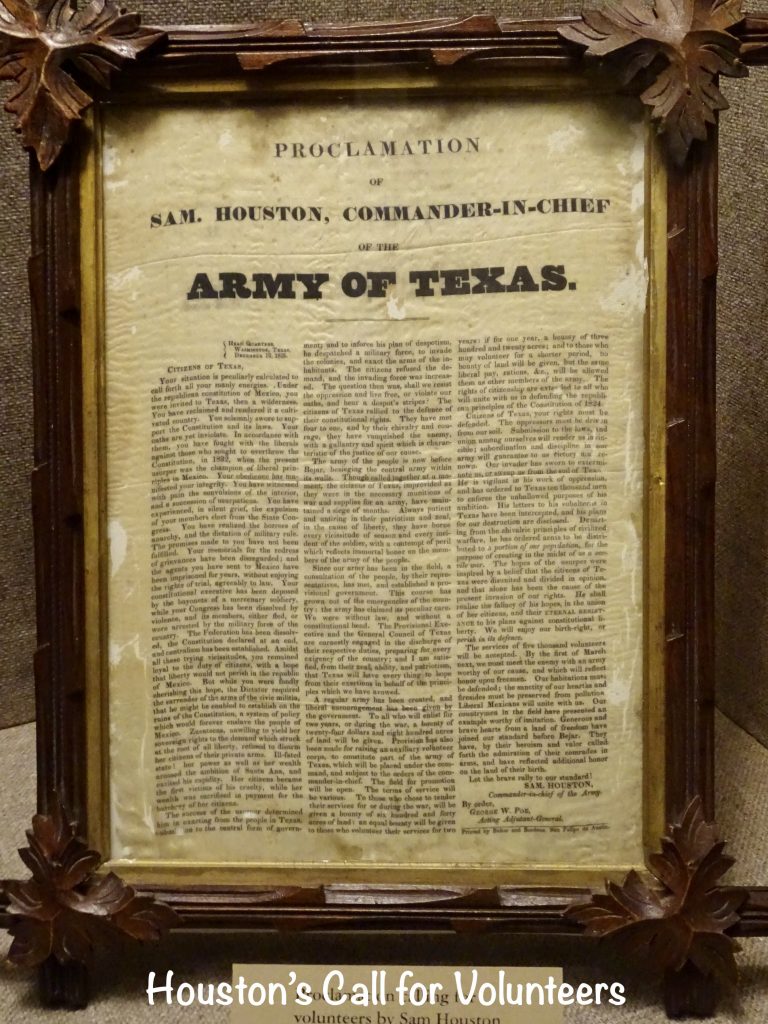
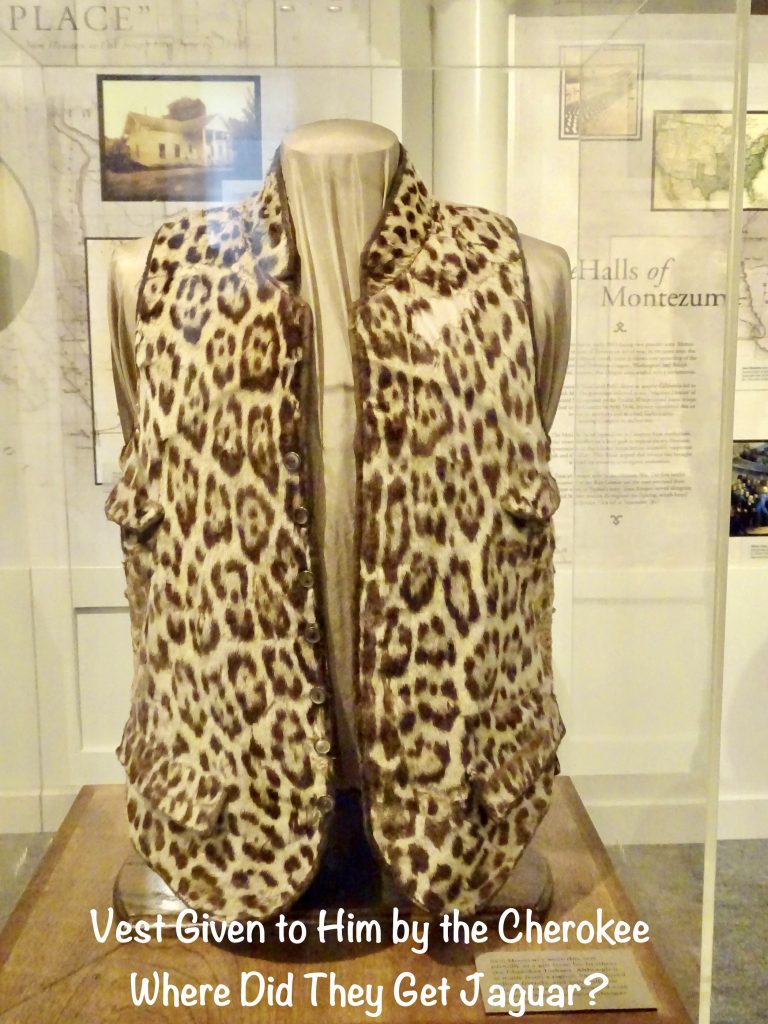
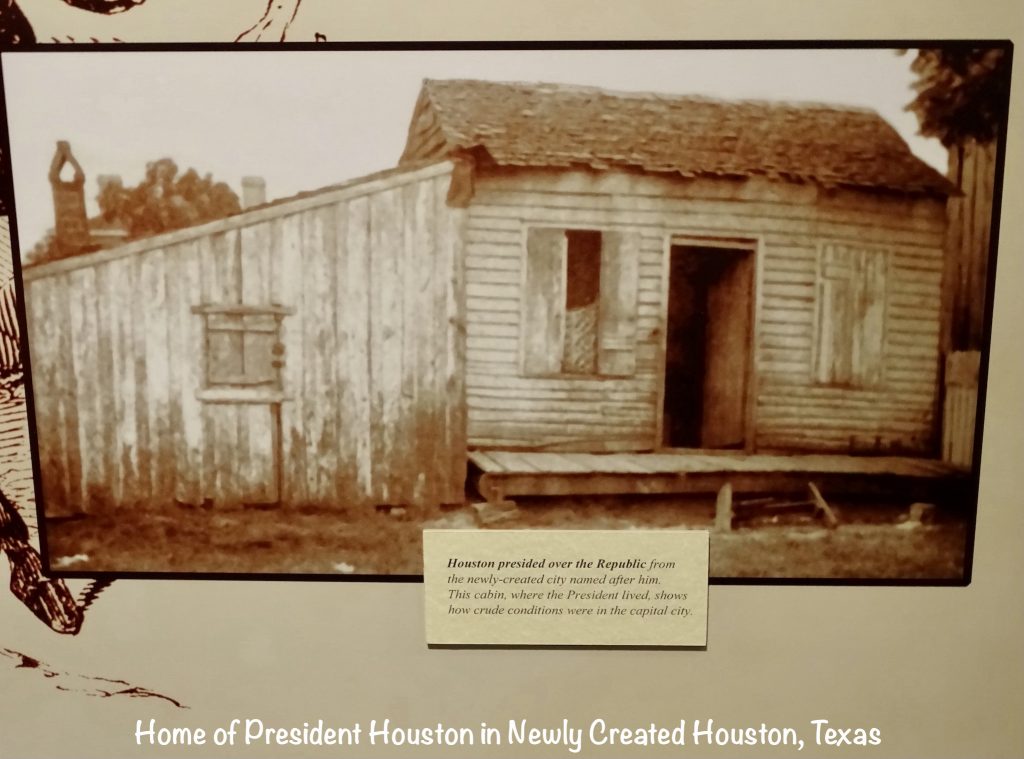
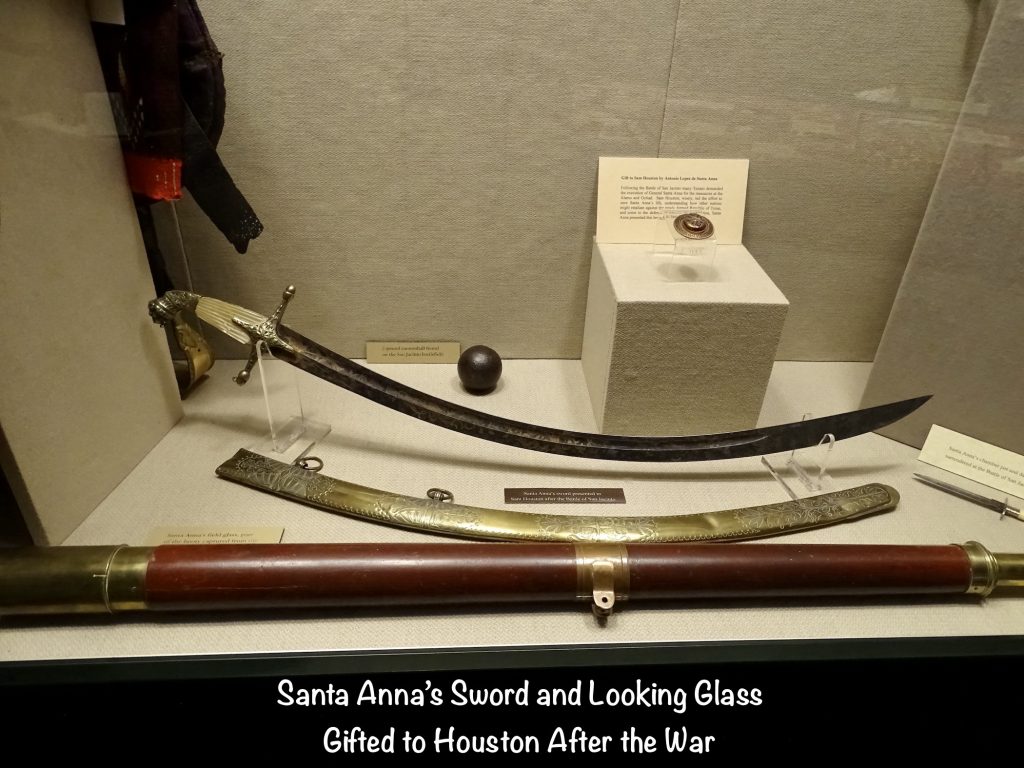
In addition to the museum building, the grounds are the location of the Woodland Home that Sam and Margaret built in 1848 and Sam’s law office a few steps away. Coolest of all…both are STILL THERE! There are other buildings on the property moved from around the area, but those are original. The other Houston home on the property is the Steamboat House, so named for its unique shape, that was relocated from its original location. Sam died in this house in 1863, and his funeral was held in the upstairs parlor. If you are into this type of history at all, this place is a must!
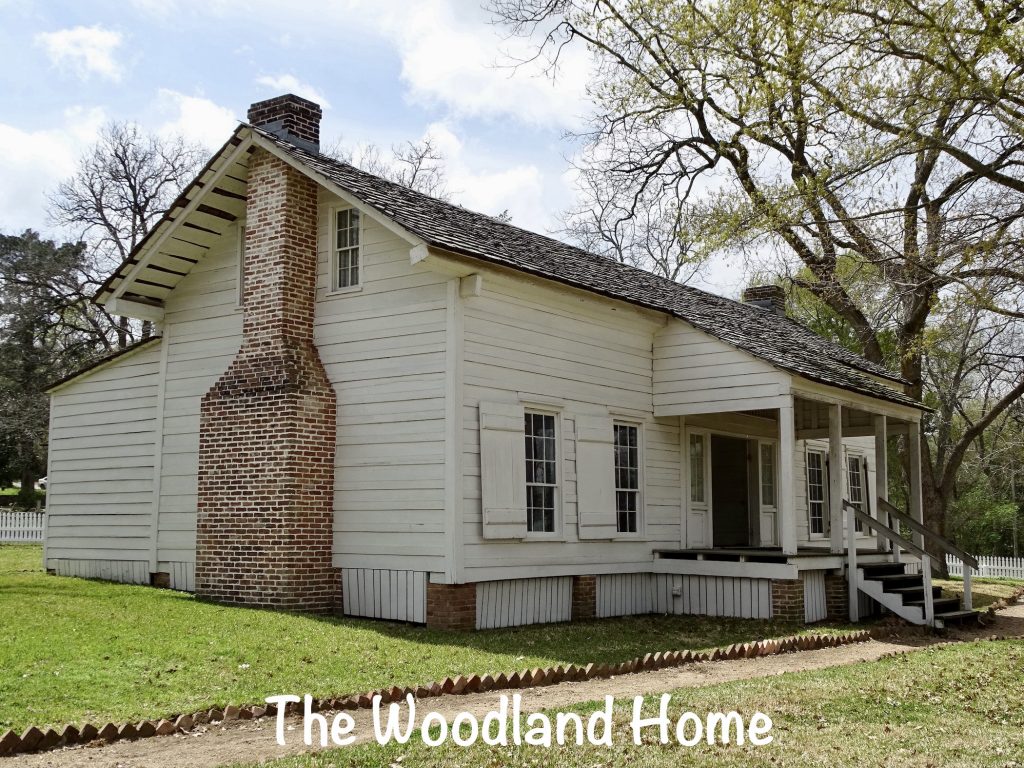

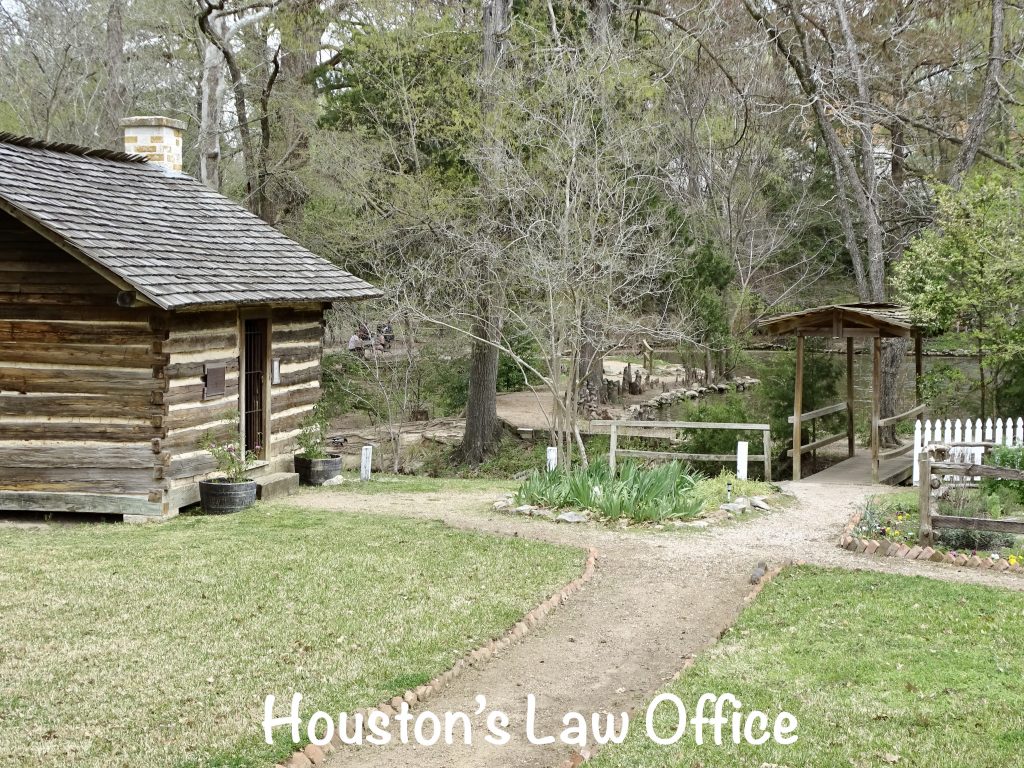
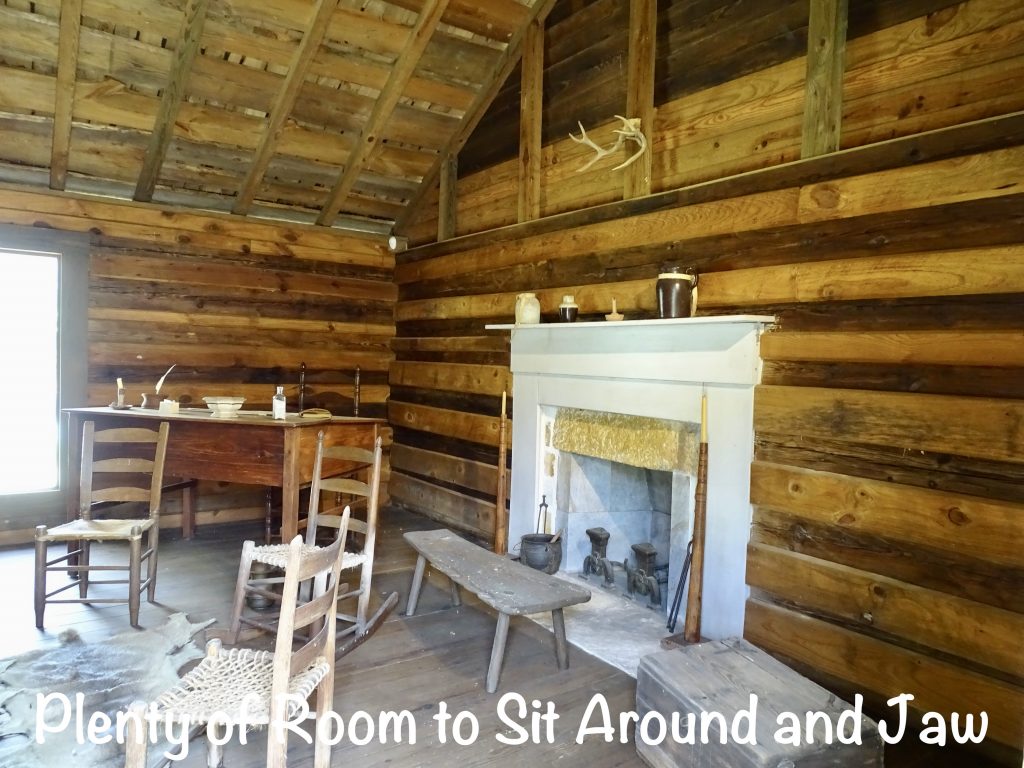
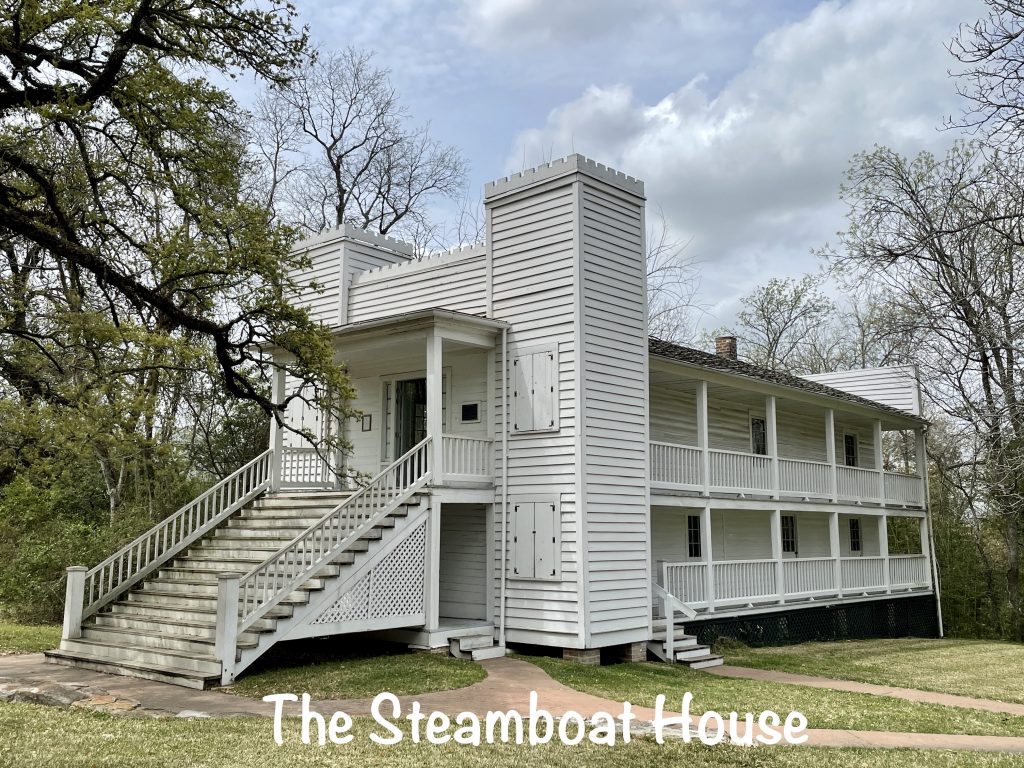
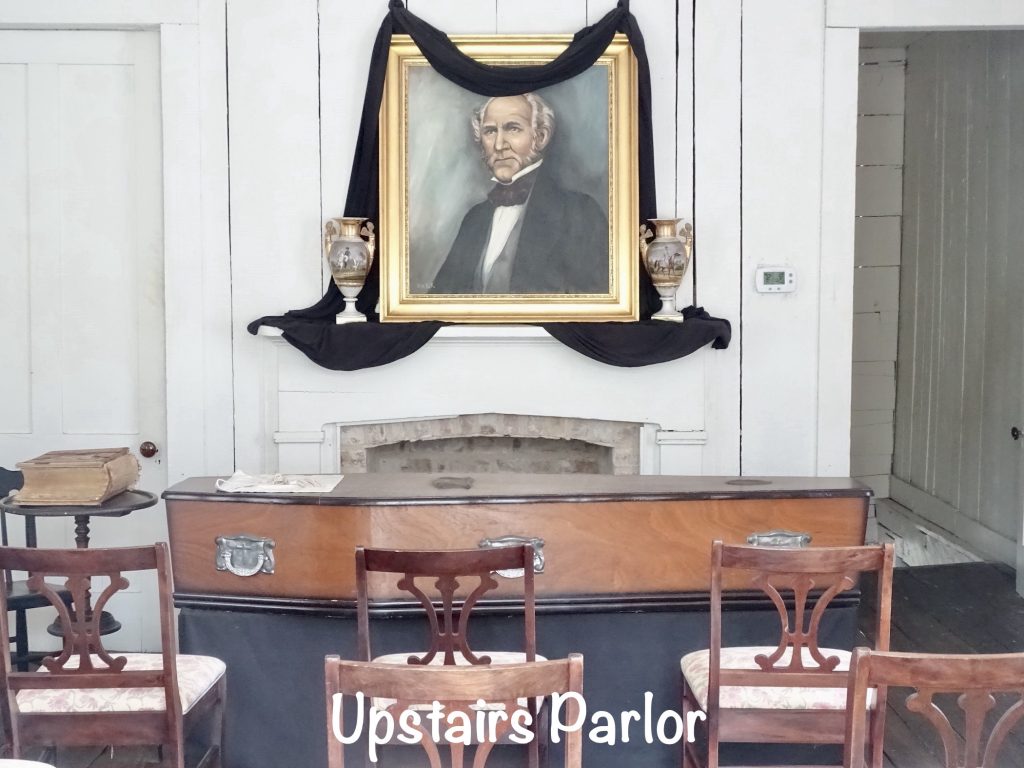
Our next stop was just a few miles down the road…Oakwood Cemetery, where Sam Houston is buried under a huge monument. After that, we circled around the square and headed back to Petunia with one last stop along the way…GIANT. SAM. HOUSTON! Seriously! Officially named “A Tribute to Courage”, but called “Big Sam”, the statue stands 77′ tall (10′ is granite base). Weighing in at 60 tons, it is an imposing figure overlooking I-45. You definitely can’t miss it.
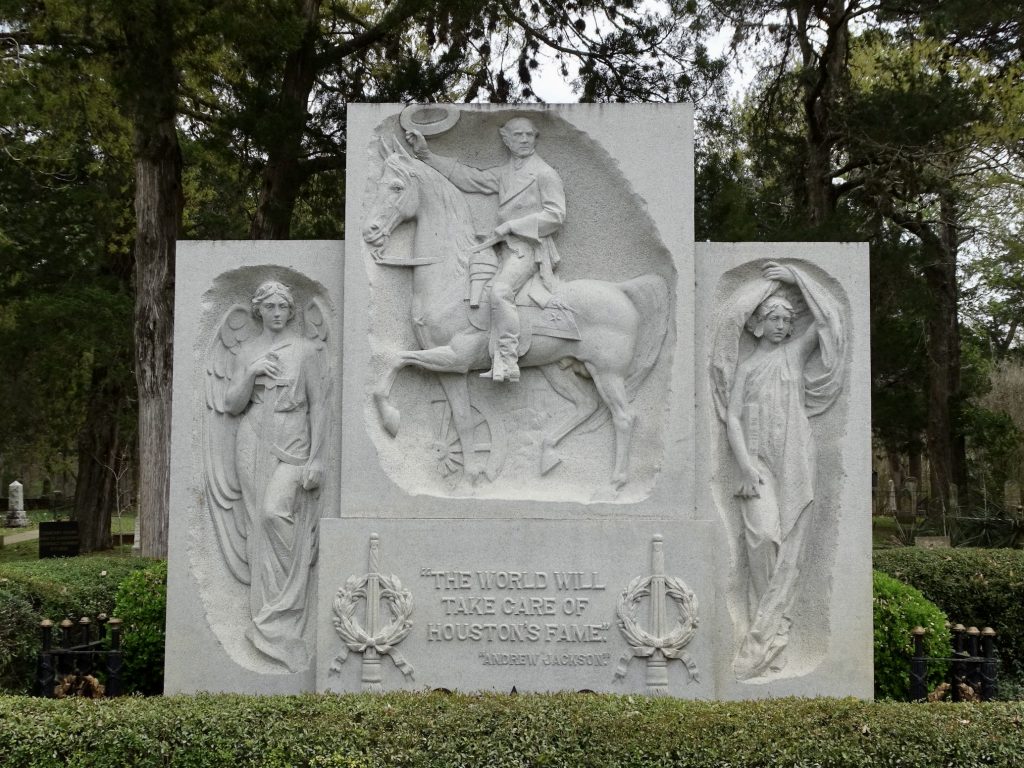
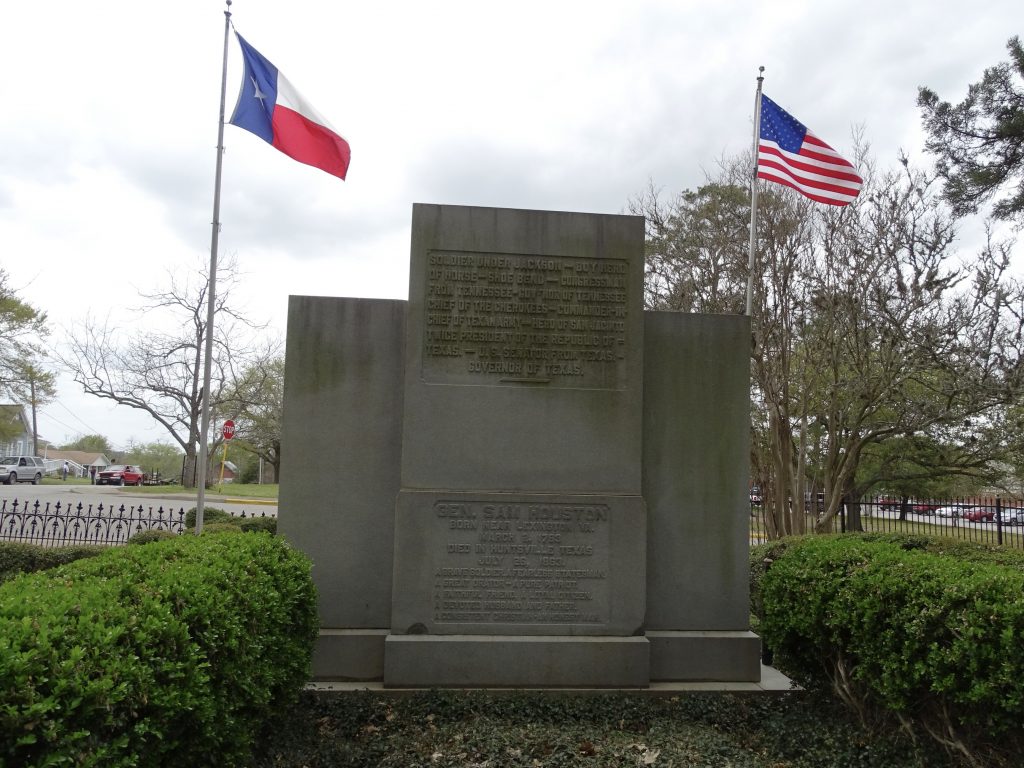
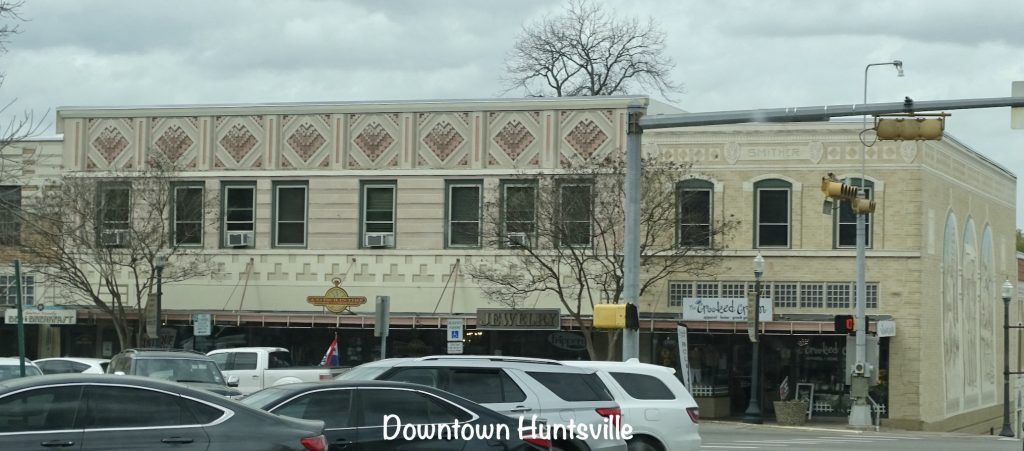
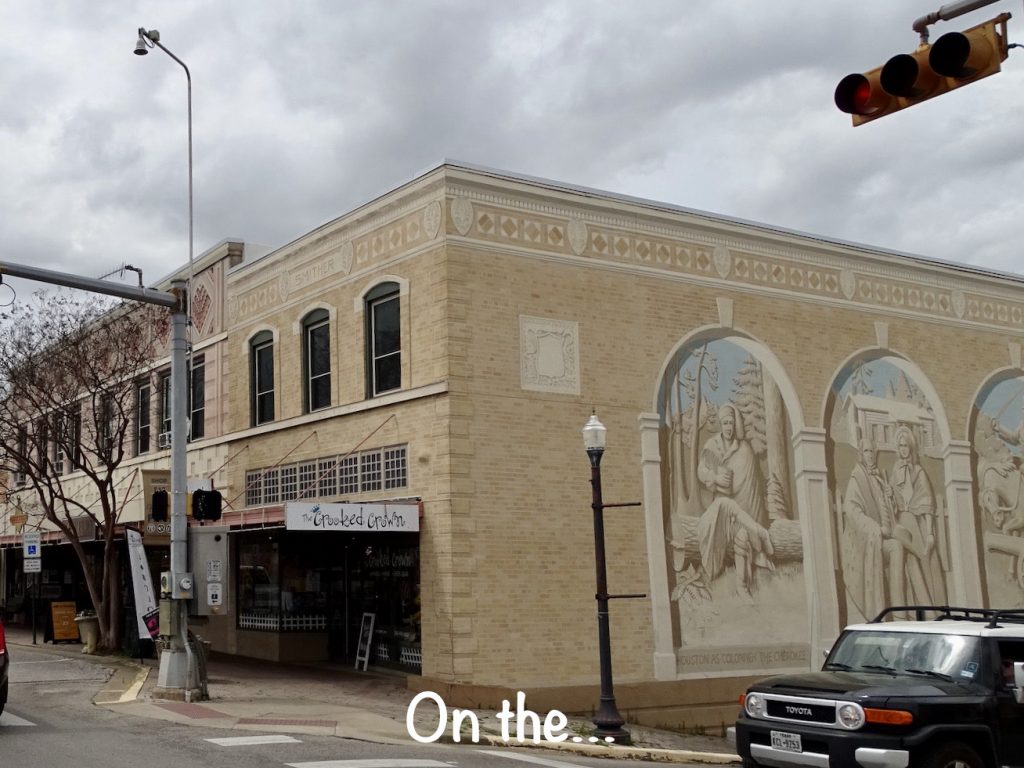
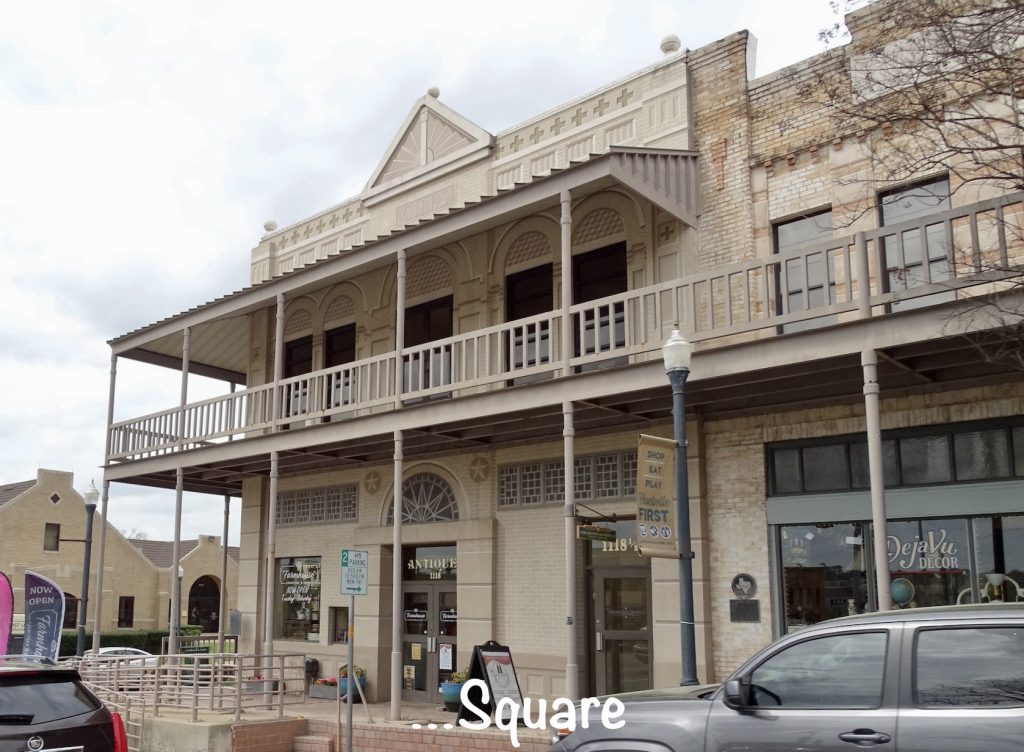
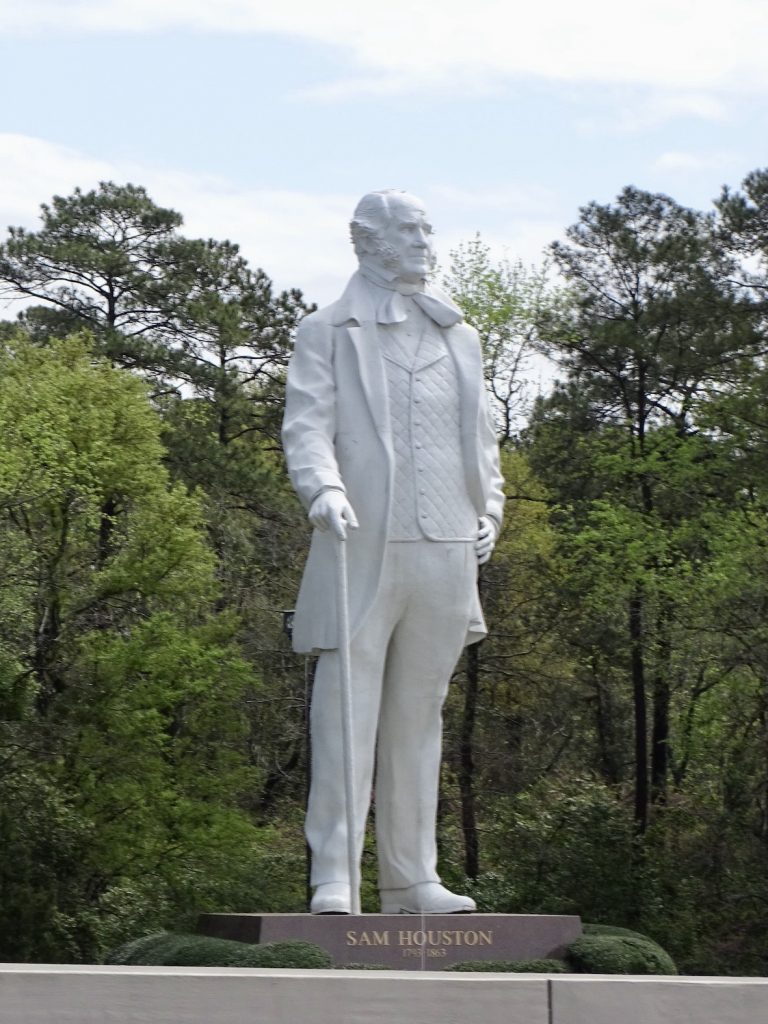
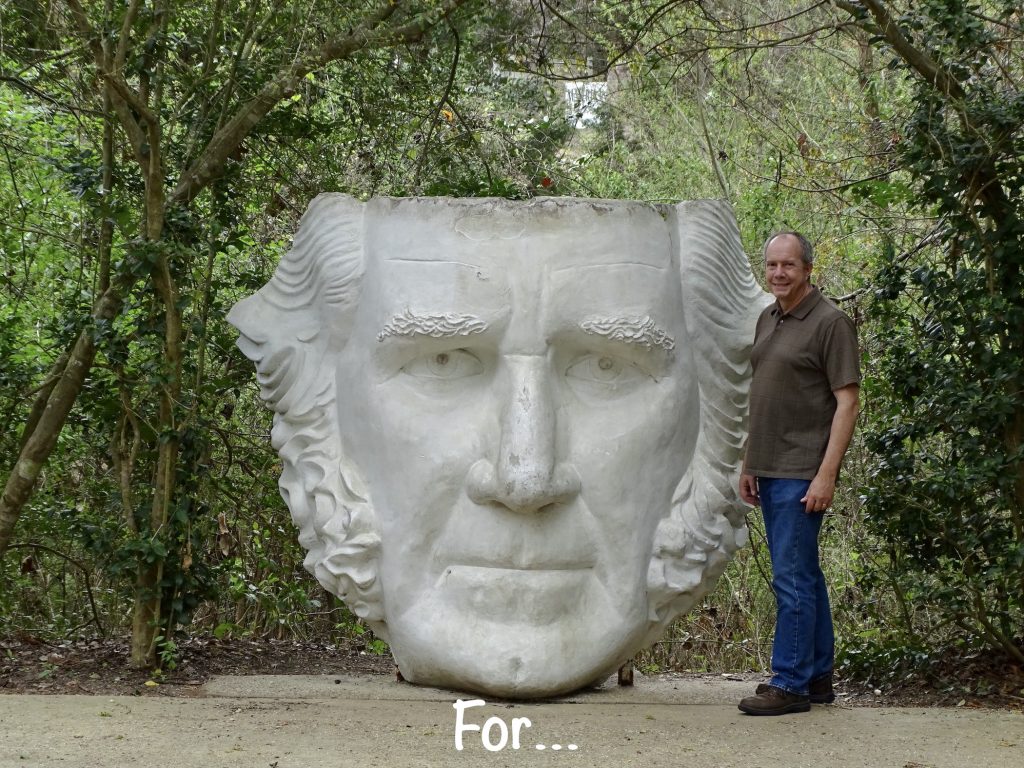
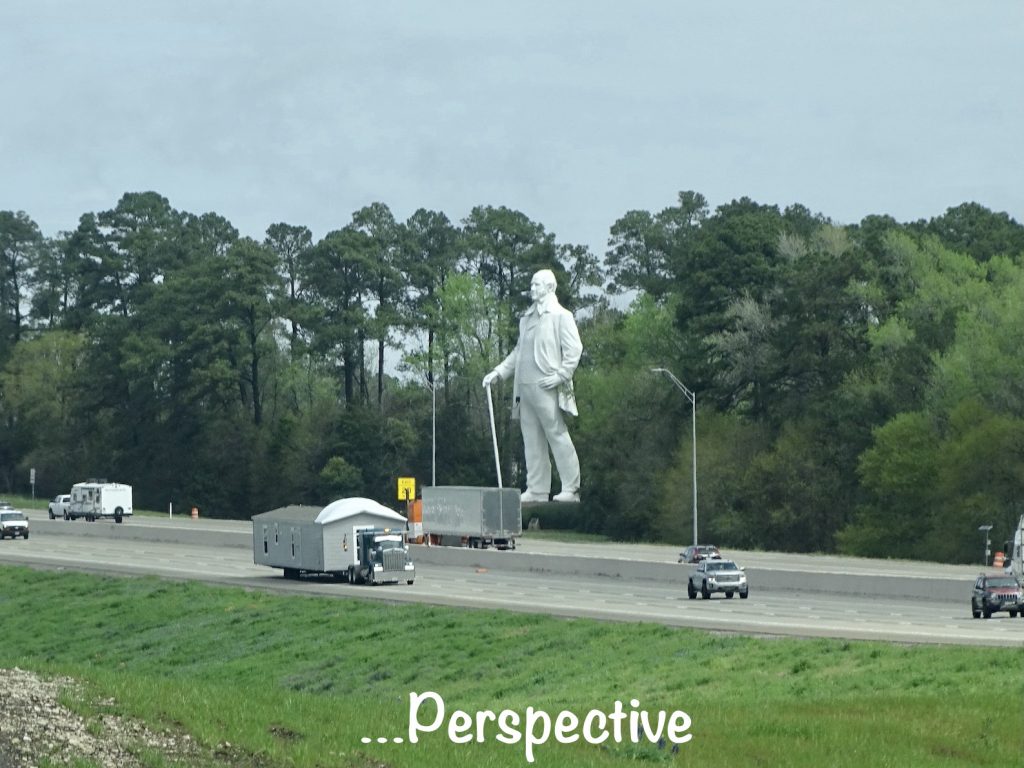
Wednesday started with bookkeeping, then another interesting tour. Well, after lunch at the Mr. Hamburger near the square in town, that is. In business since 1959, this place has darned good burgers with patties that actually cover the bun. The fries are really good, too, but I didn’t like the sweetness in the onion ring batter. They also serve local made Boots sodas. Another cool place to sit and read, the walls are covered with newspapers from the year they opened.
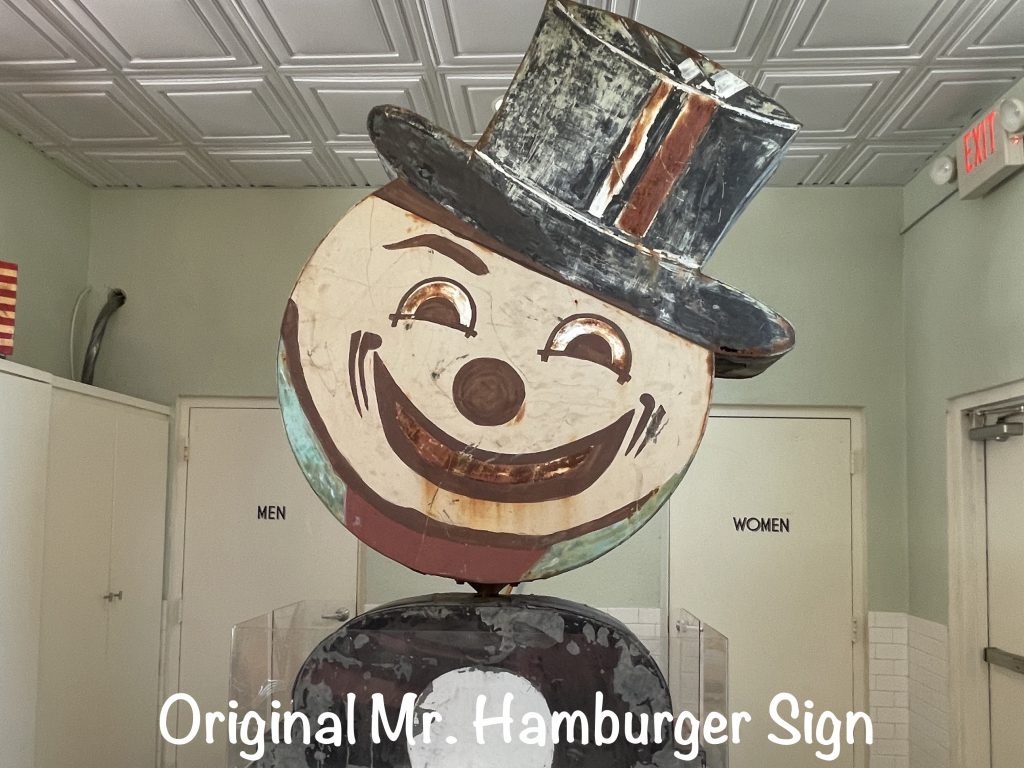
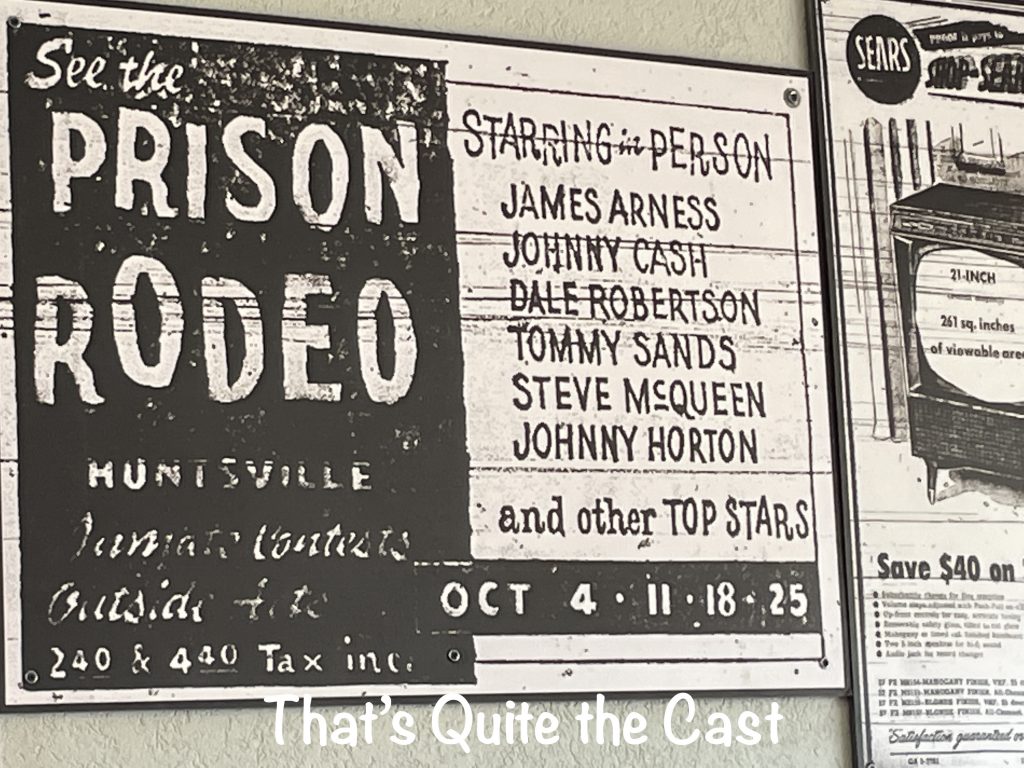
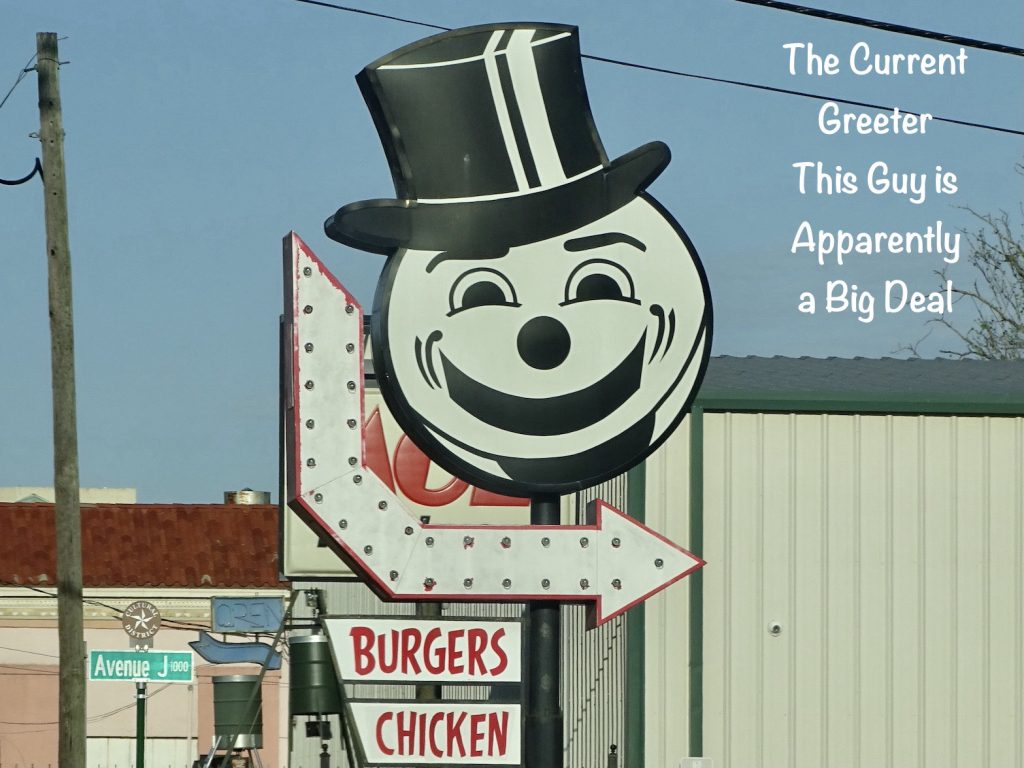
Our next stop…prison. You knew they’d catch up with us eventually! We actually just went to the Texas Prison Museum. Huntsville, Texas shares something with Leavenworth, Kansas,…it is overpopulated with prisons/jails…eight of them to be exact (yes you read that right). So NEVER pick up a hitchhiker in Huntsville, Texas! The museum gives you a bit of insight into the lives of prisoners in Texas and the state’s reform of the system. It also talks about famous prisoners and what they did to get there, plus the things they created while there. Some used their time to make amazing artwork, while others spent their time making knives out of an amazing variety of things. The most popular of the local facilities is the Huntsville Unit of the Texas State Penitentiary, also known as the Walls. Aside from having some pretty famous residents, this prison was the host of the annual Texas Prison Rodeo. What was started in 1931 by Marshall Lee Simmons as a means of recreation and exercise for prisoners and entertainment for prison employees and families eventually grew into a serious event held each Sunday in October and hosting 100,000 people! In 1951, the rodeo began to book well-known entertainers for intermissions. As you can see from the poster above at Mr. Hamburger, there was some serious talent there. The final performance for the rodeo was 1986.
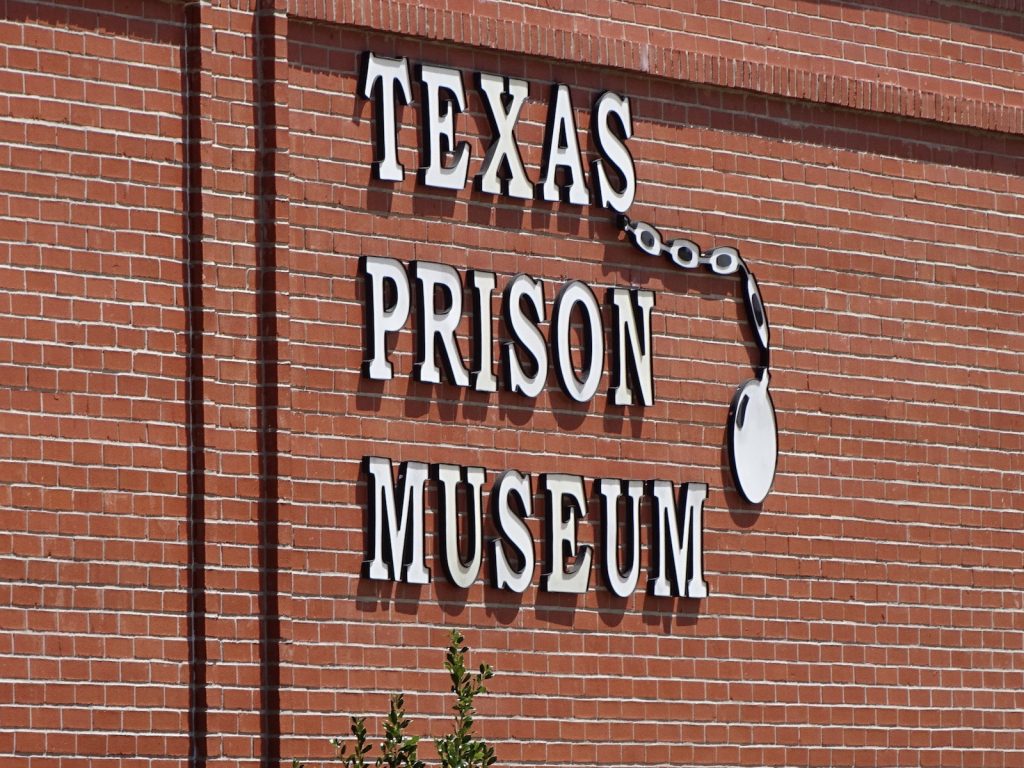
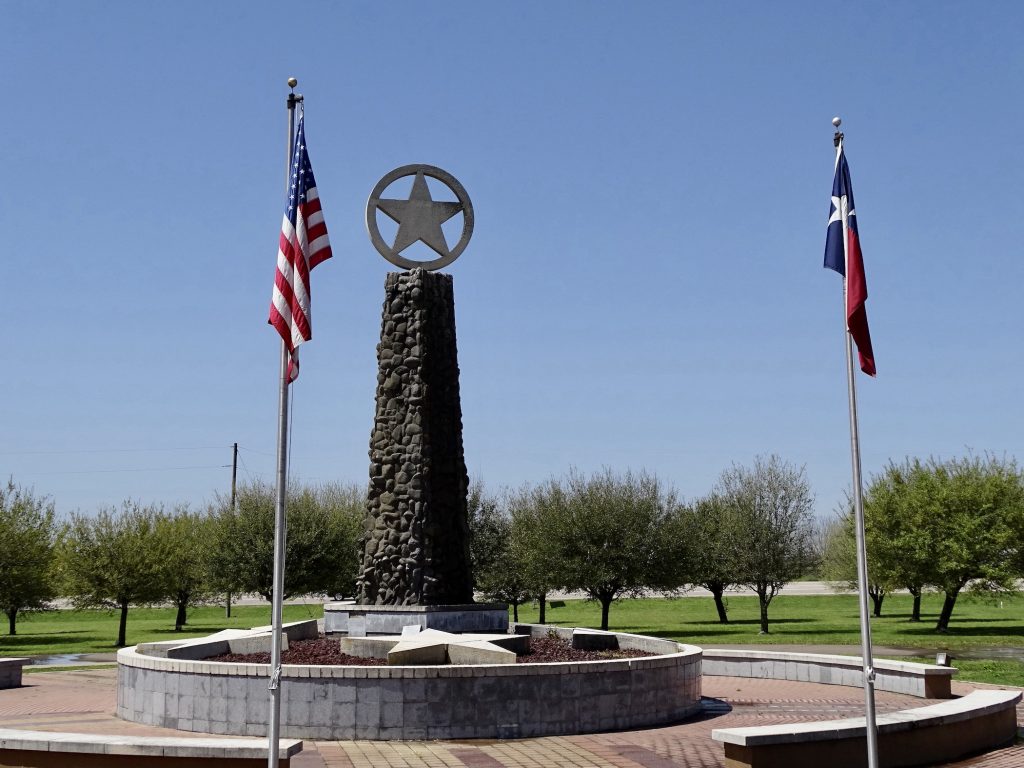
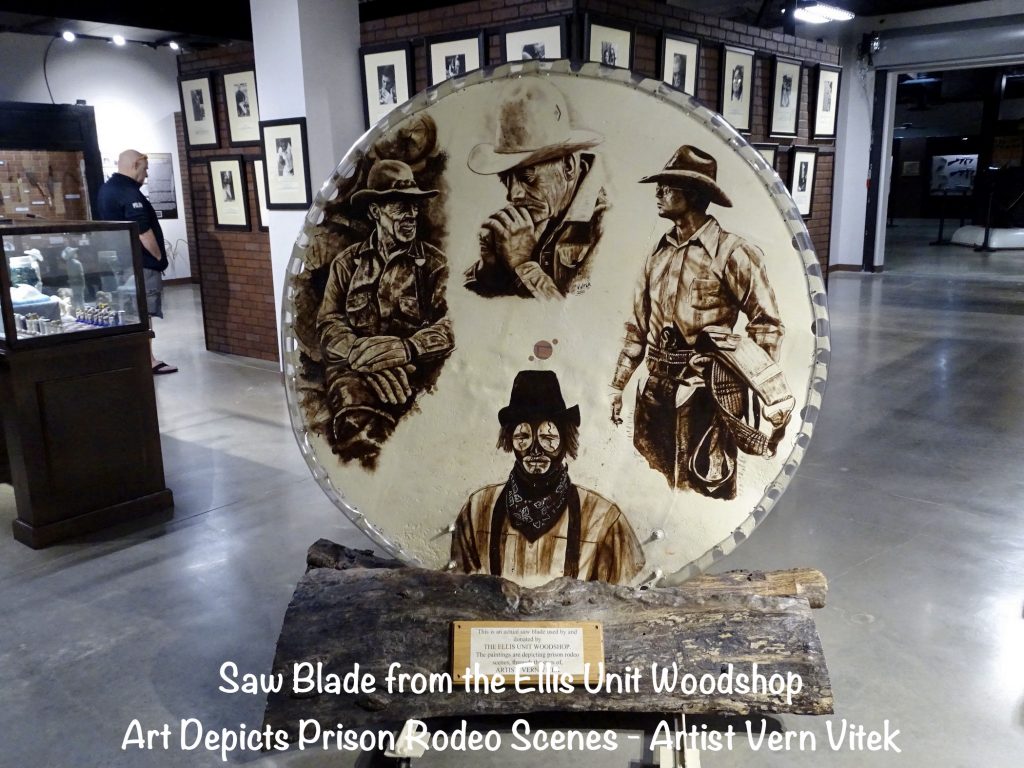
Notable residents of The Walls: a) Kiowa Chief Satanta for his participation in the Salt Creek Massacre. b) Kenneth McDuff, who after being paroled for several theft-related offenses, murdered three teenagers, one of which he brutally raped. He was sentenced in 1966 to death, but a Supreme Court ruling that temporarily banned executions commuted his sentence to life in prison. In 1989 he was paroled, and by 1992 had raped and murdered two women and was connected to at least 7 others. In 1998, they FINALLY executed this man, who was quoted as once saying: “Killing a woman is like killing a chicken; they both squawk.” Wow! c) Fred Gomez Carrasco, the lead conspirator of the 1974 “Carrasco Siege” at The Walls that resulted in the deaths of two and one wounded hostage. Carrasco and one of the conspirators also died. The final conspirator was executed in 1991. d) Duane Chapman, better known as Dog the Bounty Hunter, served 18 months for a murder in 1977. (How does someone serve less than 2 years on a murder charge???) e) John Wesley Hardin, gunfighter, resided behind The Walls from 1878 to 1894. f) Annie Williams murdered and mutilated her two children then stored the bodies in the freezer in 1955. Sentenced to life in prison, she lived at the Moree women’s unit in Huntsville for 25 years, then was paroled in 1980. She later remarried and became a pillar of her community. (Okay, if that woman can find a husband, there is hope for anyone!)
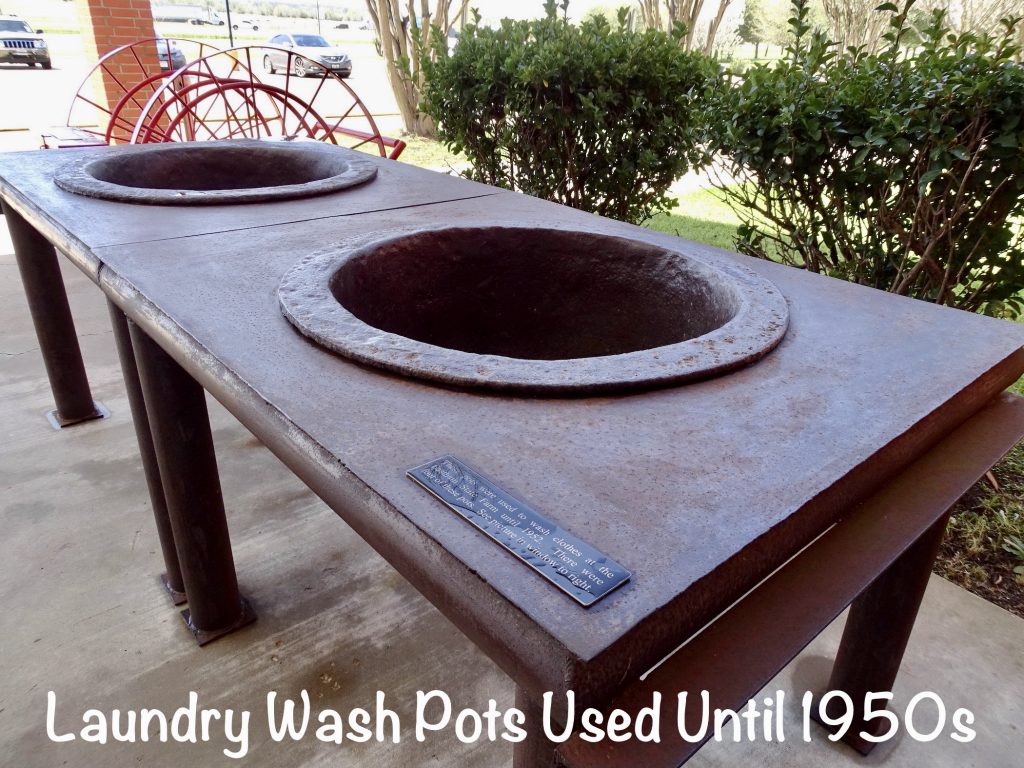
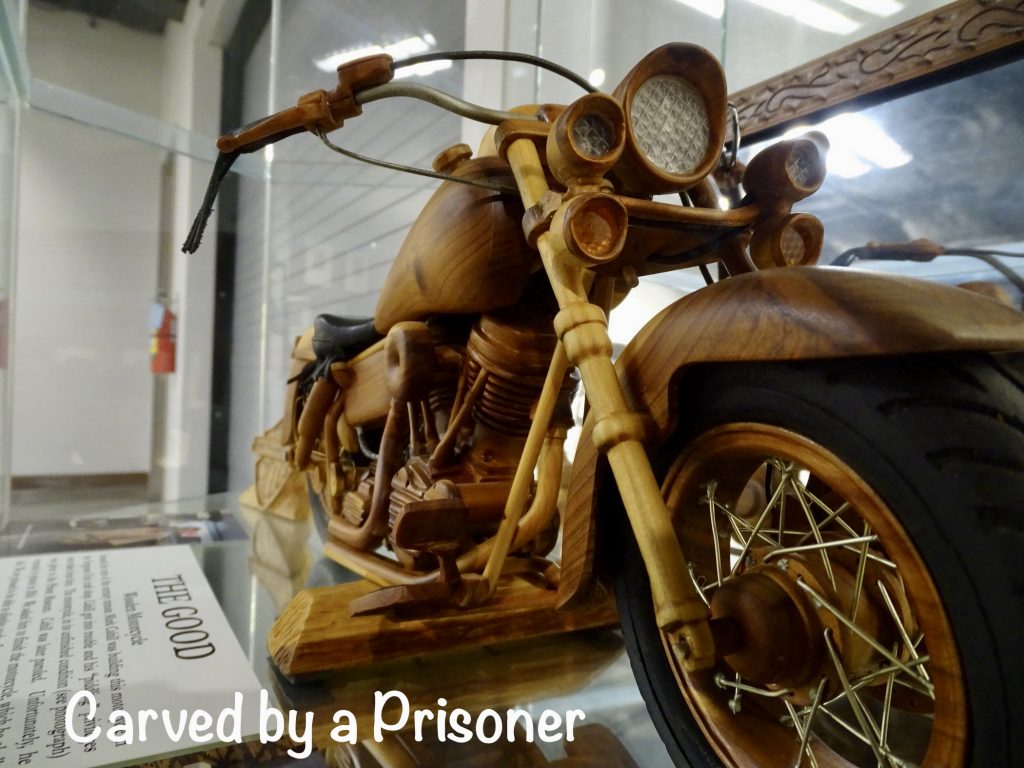
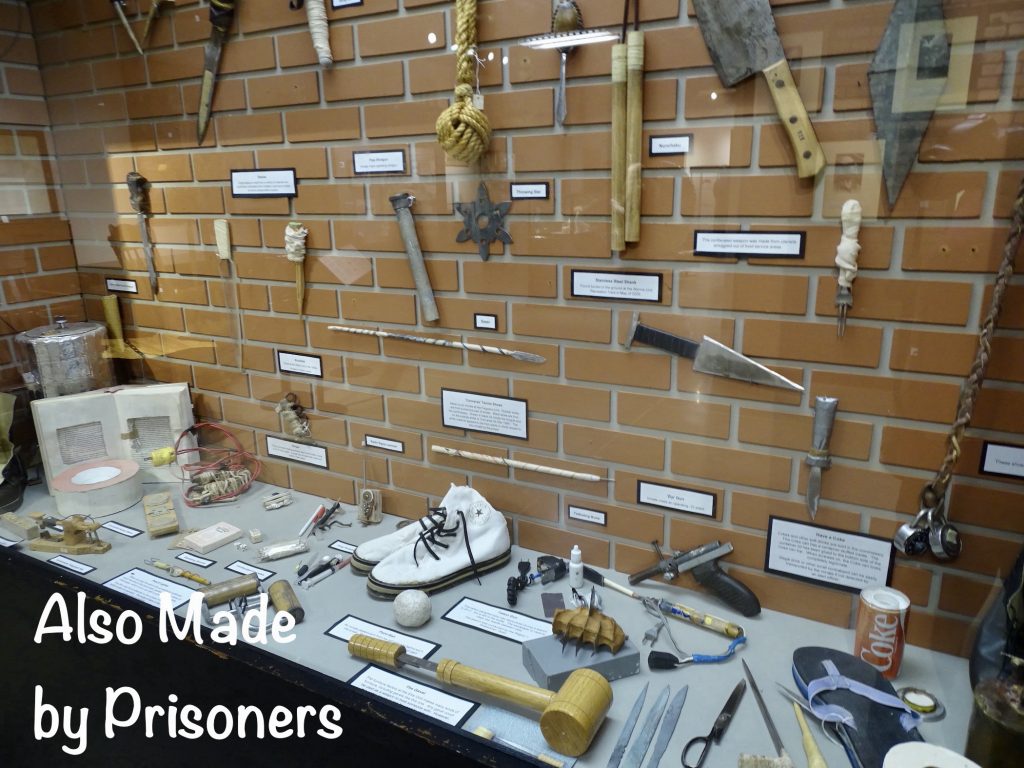
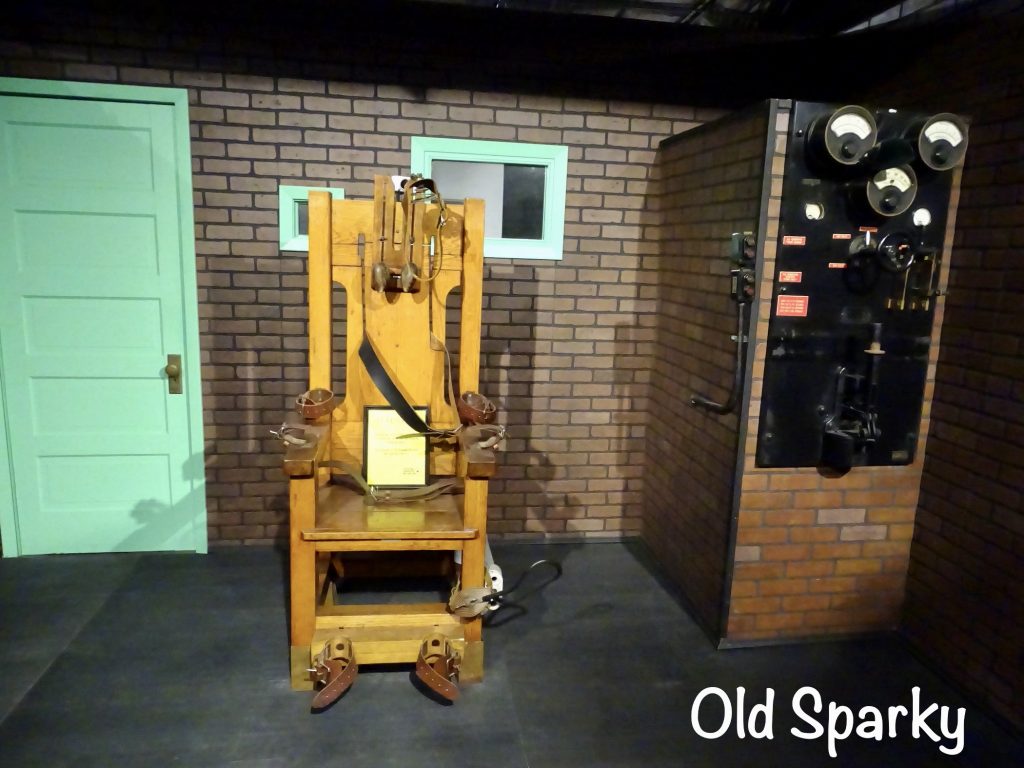
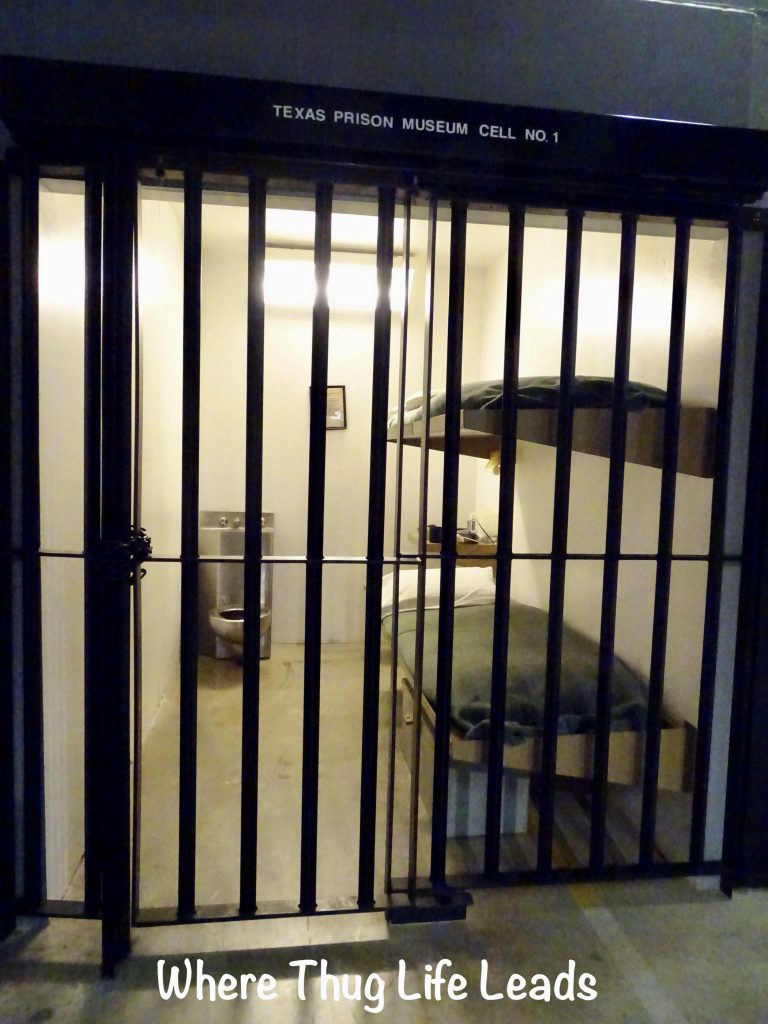
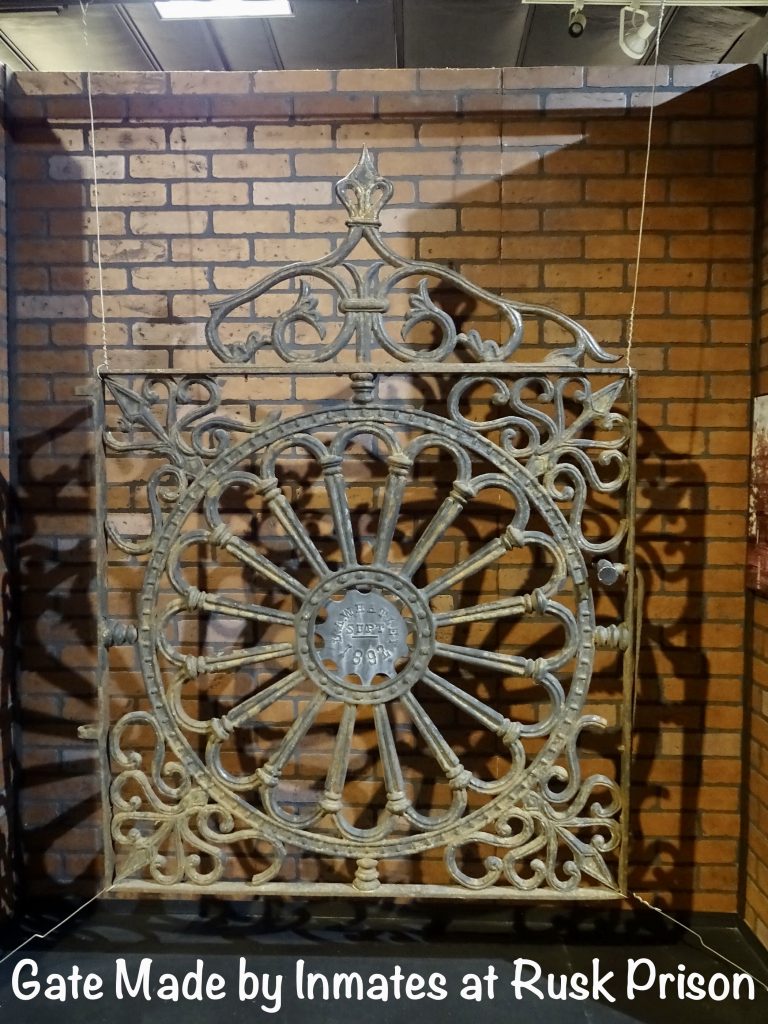
Huntsville State Park is beautiful and wooded with quite a bit to offer. There are miles of hiking/biking trails, canoe rentals, playgrounds, boat ramp, fishing piers, multiple fish cleaning stations, picnic and swimming areas, several playgrounds, an amphitheater, CCC-built lodge for events, . There is also a nature center, but honestly, there wasn’t much there. Other amenities include screened shelters and screened cabins with heat but no a/c. The campground is divided into two large sections. Sites were paved and had fire rings and picnic tables. There were 23 full-hookup, 20/30/50 amp sites; 77 electric 20/30/50 amp plus water sites; and 60 shared-water tent sites. All sites had fire rings, picnic tables, and available parking and electric sites were paved. As I said earlier, our site was smooth, but terribly tilted. While there were few that actually looked level, most were not as bad as ours. They had several bathhouses, and they were kept fairly clean. You could hear highway noise from the nearby interstate. While we would not stay in the same site again, we would stay at the park. For this stay in 2022, we paid $50.00 for 3 nights.

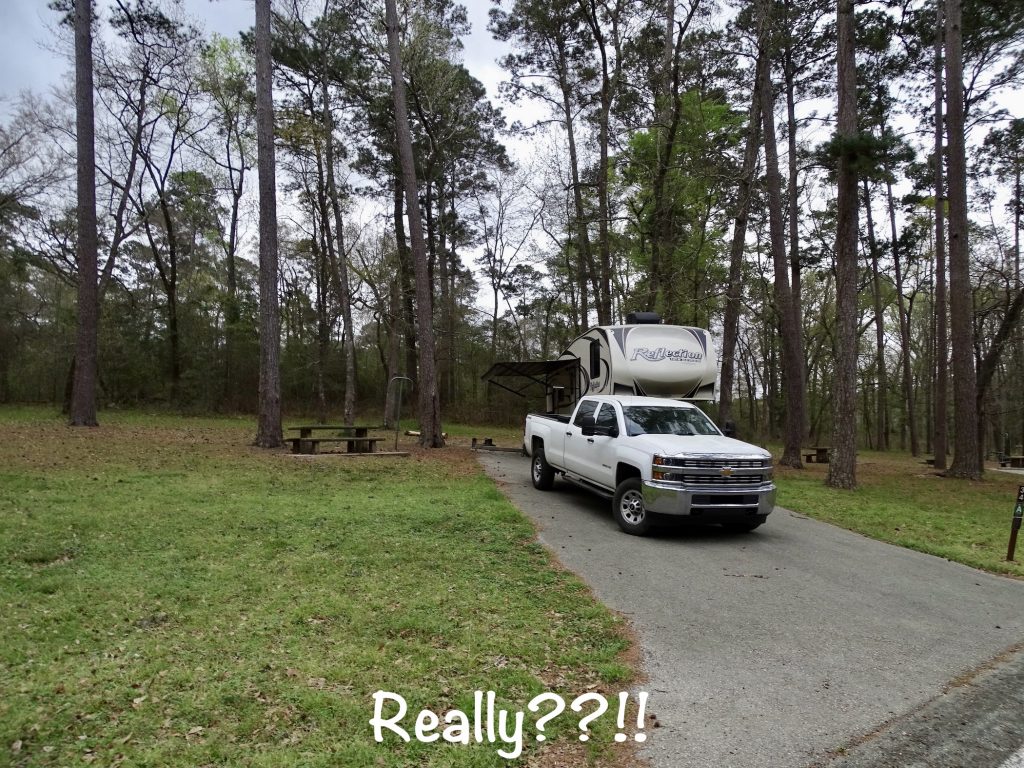
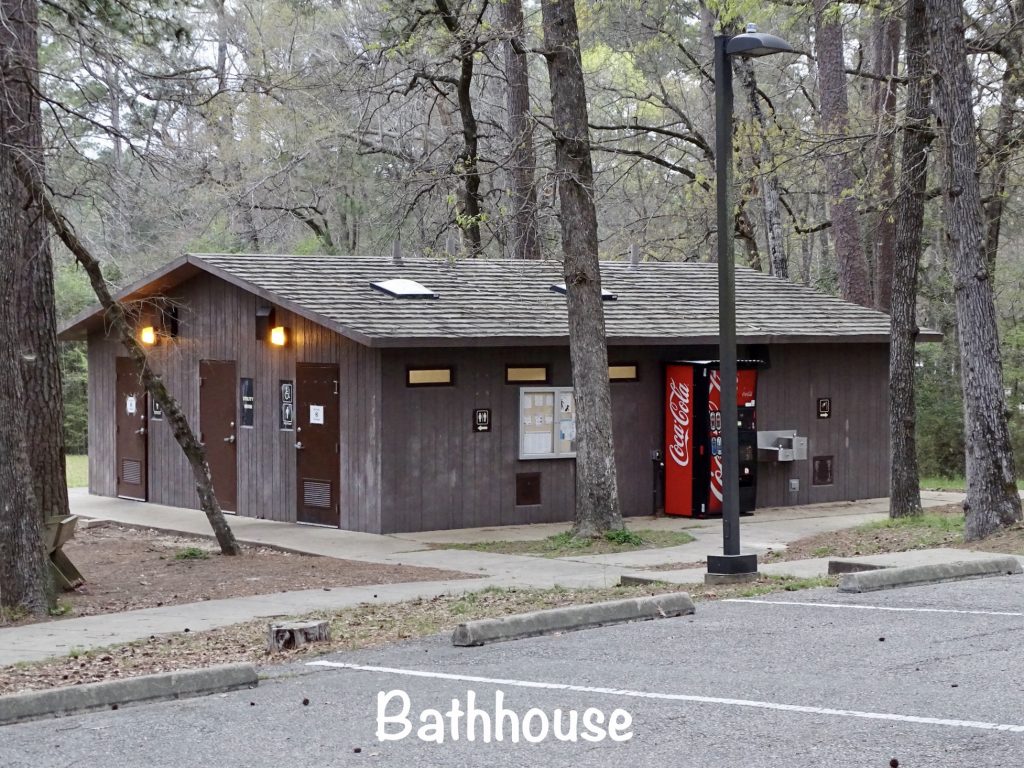

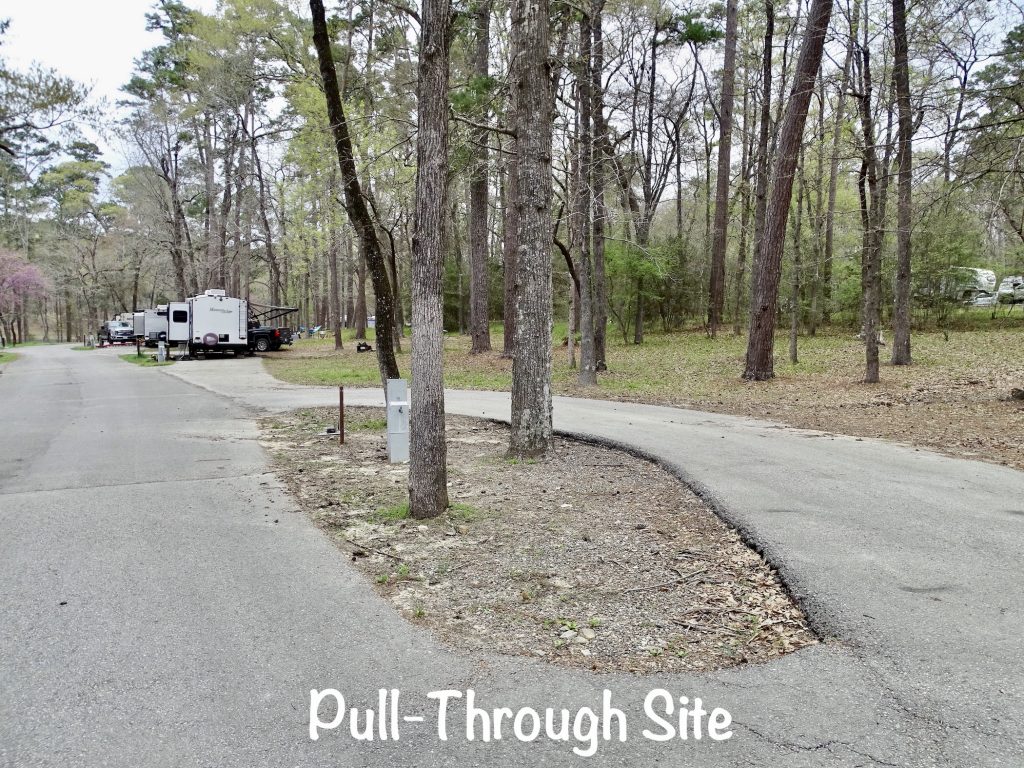
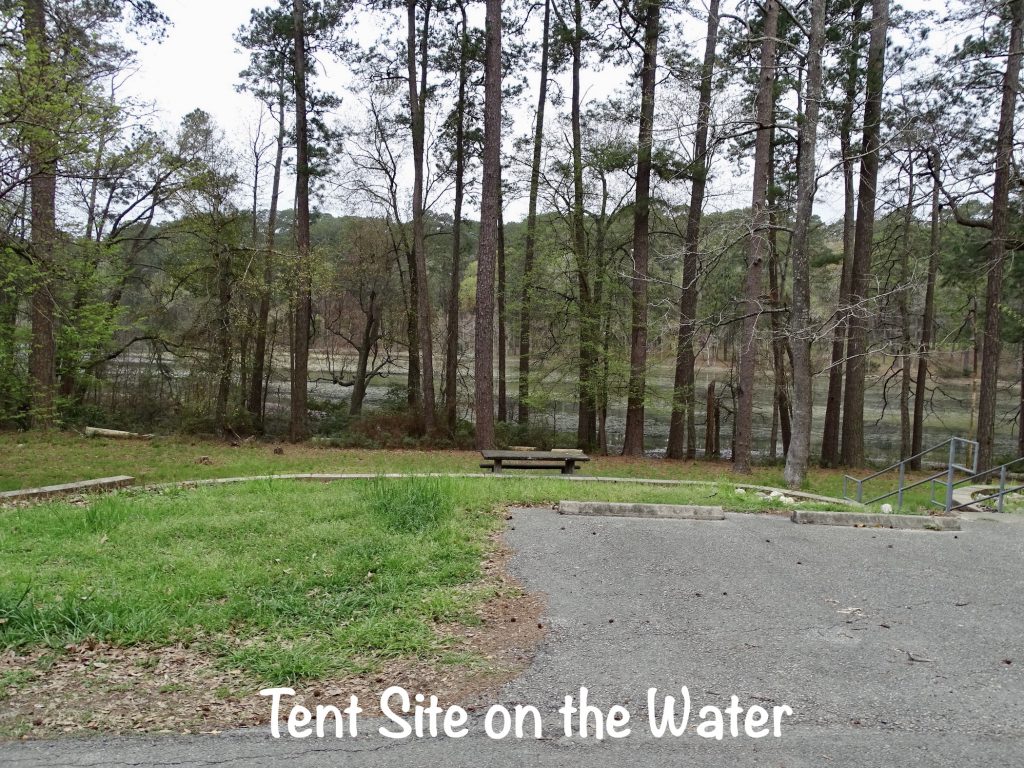
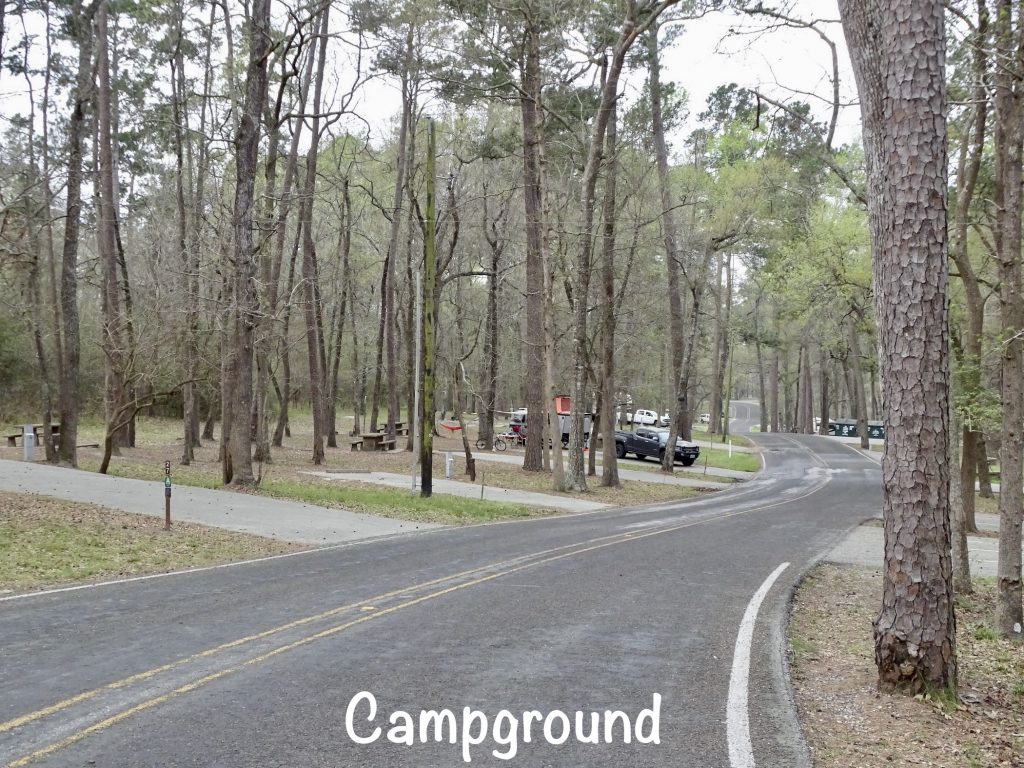
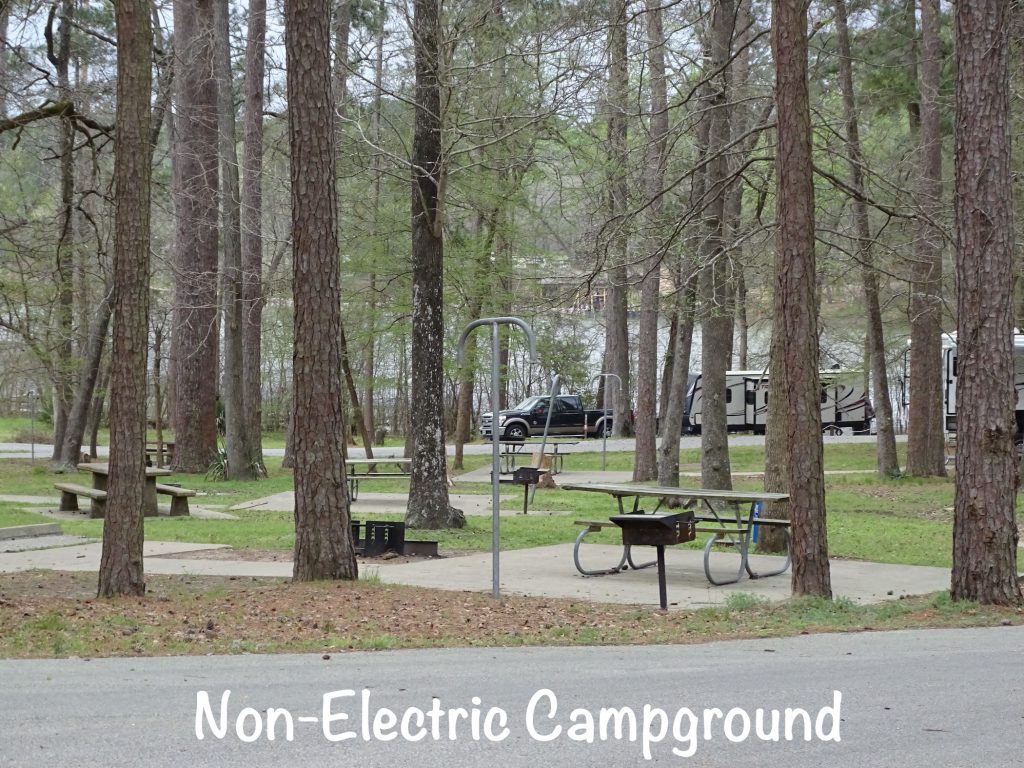

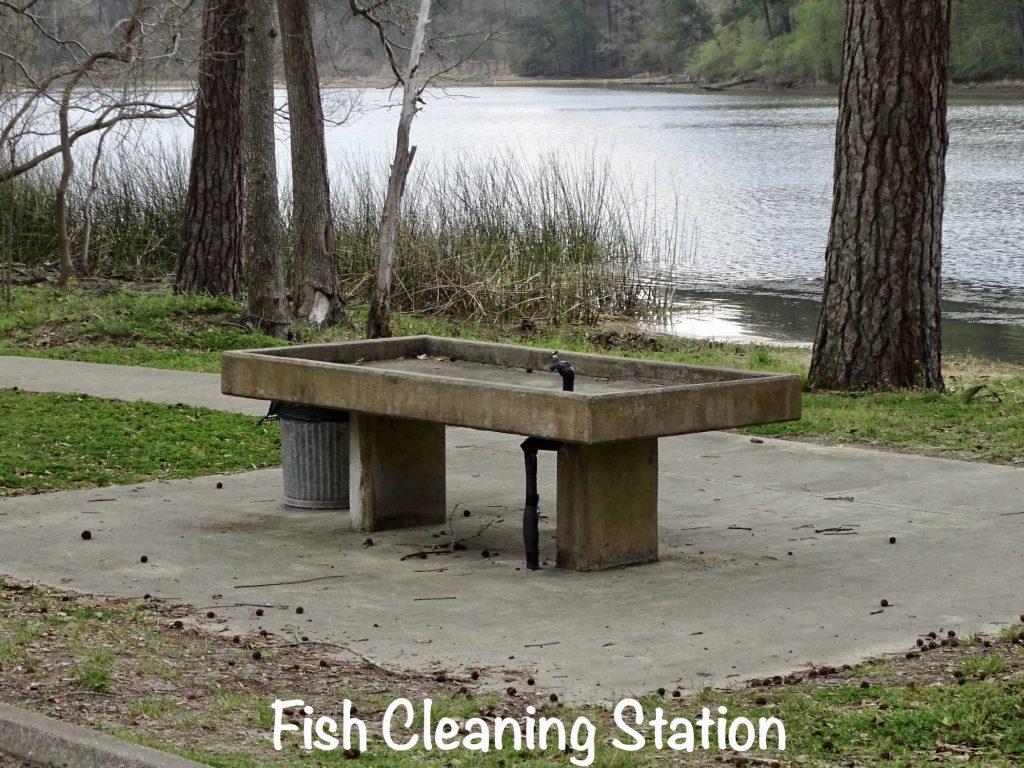
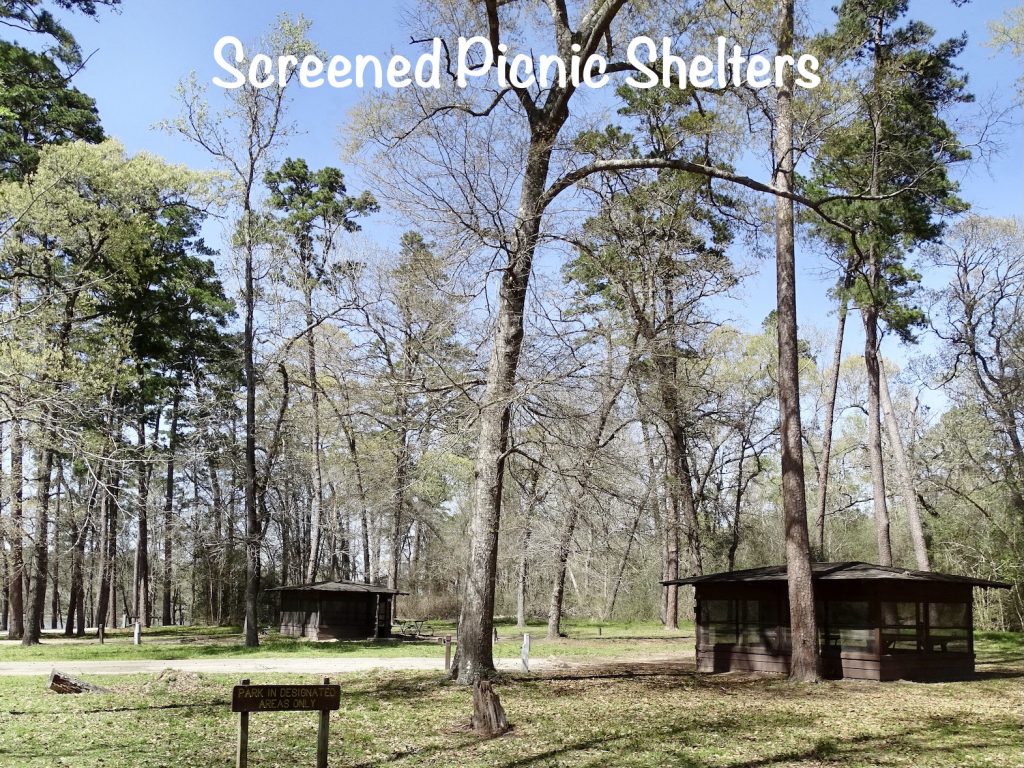
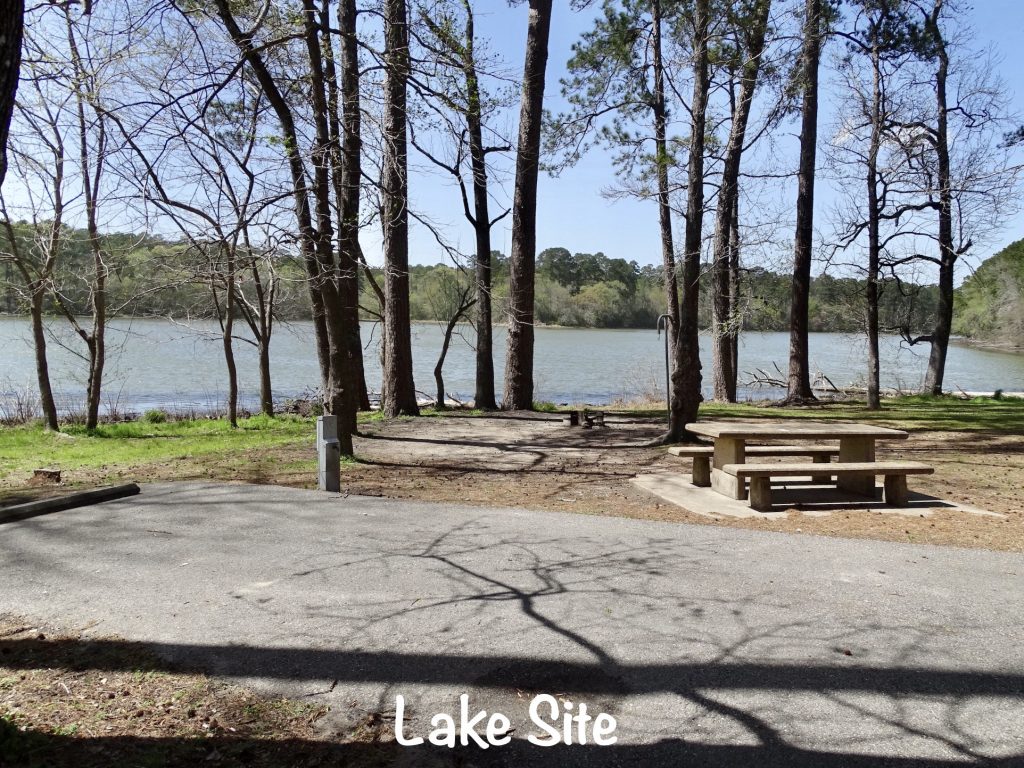
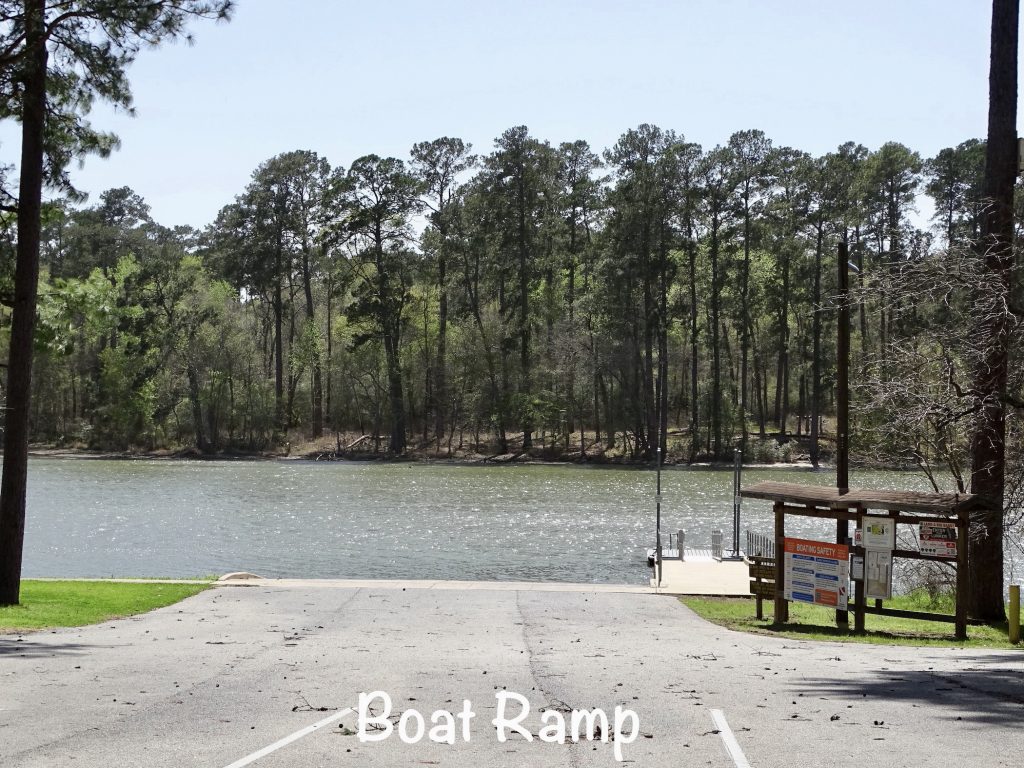
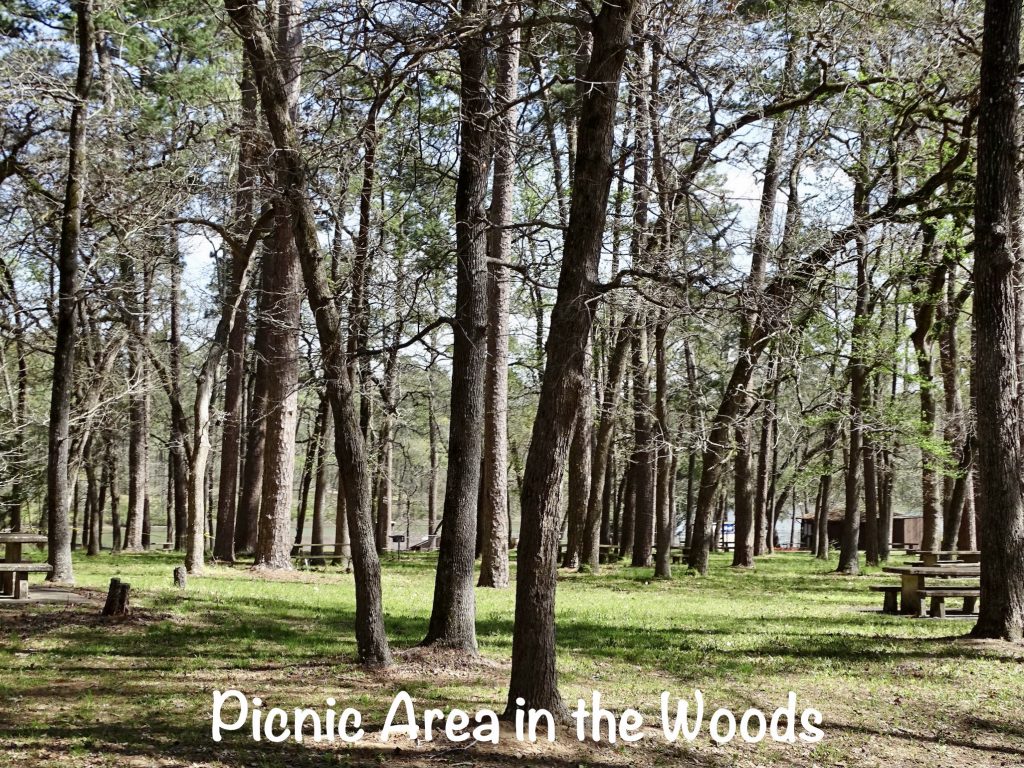
Still behind but getting there! Next up…BOOGER BUTT’S GREAT ADVENTURE! SOOOOO exciting!! See you on the path.
Talisa
P. S. Use the buttons at the top right to be notified of new posts and please SHARE, SHARE, SHARE on social media!
